Zebra Technologies MM718101 Mesh AP-7181 Outdoor Wireless Access Point User Manual 72 70931 01
Zebra Technologies Corporation Mesh AP-7181 Outdoor Wireless Access Point 72 70931 01
Installation Guide
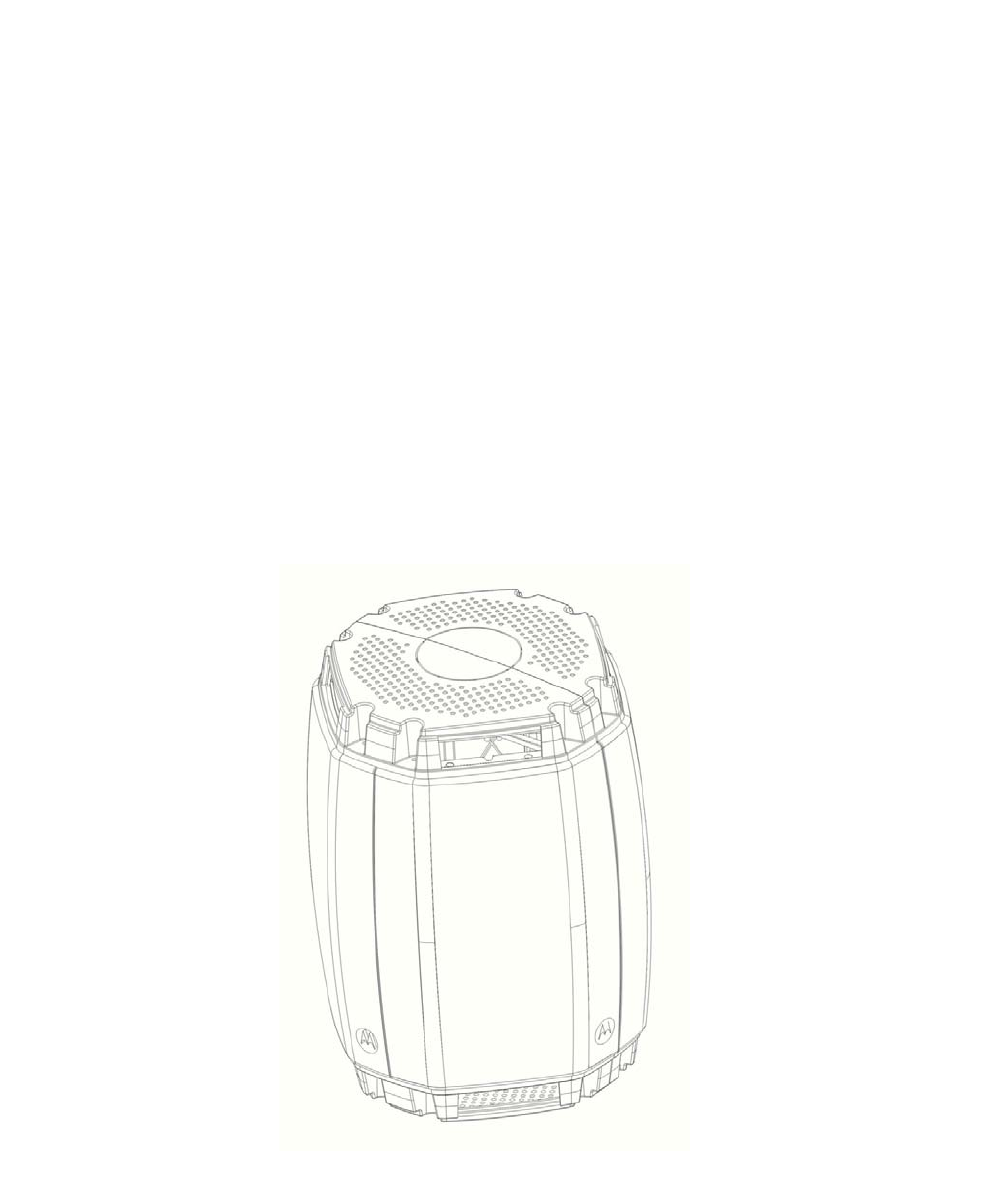
AP 7181 Access Point
Installation Guide
Version 1.0.0.A
March 12, 2010
68009287001


1 Introduction . . . . . . . . . . . . . . . . . . . . . . . . . . . . . . . . . . . 1
1.1 Document Conventions . . . . . . . . . . . . . . . . . . . . . . . . . . . 1
2 Hardware Installation. . . . . . . . . . . . . . . . . . . . . . . . . . . . 2
2.1 Precautions . . . . . . . . . . . . . . . . . . . . . . . . . . . . . . . . . . . . . 2
2.2 Deployment Guidelines . . . . . . . . . . . . . . . . . . . . . . . . . . . 3
2.3 Installation Methodology . . . . . . . . . . . . . . . . . . . . . . . . . . 4
2.4 Grounding Requirements . . . . . . . . . . . . . . . . . . . . . . . . . . 4
2.5 Minimum Installation Requirements . . . . . . . . . . . . . . . . . 5
2.6 Package Contents . . . . . . . . . . . . . . . . . . . . . . . . . . . . . . . . 5
2.7 Access Point Placement . . . . . . . . . . . . . . . . . . . . . . . . . . . 5
2.7.1 Site Surveys . . . . . . . . . . . . . . . . . . . . . . . . . . . . . . . . . . . 5
2.7.2 Root Node Placement . . . . . . . . . . . . . . . . . . . . . . . . . . . 6
2.7.3 Non Root Node Placement . . . . . . . . . . . . . . . . . . . . . . . 6
2.7.4 Mounting Locations . . . . . . . . . . . . . . . . . . . . . . . . . . . . 7
2.7.5 Device Deployment Height . . . . . . . . . . . . . . . . . . . . . . . 7
2.8 Antenna Options . . . . . . . . . . . . . . . . . . . . . . . . . . . . . . . . . 8
2.9 AP 7181 Power Options . . . . . . . . . . . . . . . . . . . . . . . . . . . 8
2.9.1 Power Cables . . . . . . . . . . . . . . . . . . . . . . . . . . . . . . . . . . 8
Contents

2.10 Mounting an AP 7181 . . . . . . . . . . . . . . . . . . . . . . . . . . . . 9
2.10.1 Pole Mounted Installations. . . . . . . . . . . . . . . . . . . . . . 10
2.11 Installing an AP 7181 . . . . . . . . . . . . . . . . . . . . . . . . . . . 10
2.11.1 Required Tools . . . . . . . . . . . . . . . . . . . . . . . . . . . . . . . 10
2.11.2 AP 7181 Connections and Ports. . . . . . . . . . . . . . . . . . 11
2.11.3 LED Status Indicator Panel . . . . . . . . . . . . . . . . . . . . . 14
2.11.4 Removing the AP 7181 Kit from the Shipping Carton 15
2.11.4 Staging the Device Prior to Installation . . . . . . . . . . . . 17
2.12 Field Installation . . . . . . . . . . . . . . . . . . . . . . . . . . . . . . . 24
2.12.1 Bottom Mount Installation . . . . . . . . . . . . . . . . . . . . . . 25
2.12.2 Top Mount Installation. . . . . . . . . . . . . . . . . . . . . . . . . 33
2.13 Remote Panel Antenna Installation. . . . . . . . . . . . . . . . . 42
2.13.1 Preparing the AP 7181 . . . . . . . . . . . . . . . . . . . . . . . . . 45
2.13.2 Installing the Remote Panel Antenna. . . . . . . . . . . . . . 47
2.13.3 Installing the Blank Antenna Panel . . . . . . . . . . . . . . . 51
3 Getting Started . . . . . . . . . . . . . . . . . . . . . . . . . . . . . . . . . 55
3.1 Initially Connecting to the Access Point. . . . . . . . . . . . . . 55
3.1.1 Connecting to the Access Point Using the WAN Port. . 56
3.1.2 Connecting to the Access Point Using the LAN Port . . 57
3.2 Basic Device Configuration . . . . . . . . . . . . . . . . . . . . . . . 59
3.2.1 Configuring Device Settings . . . . . . . . . . . . . . . . . . . . . 61
3.2.2 Configuring WLAN Security Settings. . . . . . . . . . . . . . 69
3.2.3 Creating a Secure Recovery WLAN . . . . . . . . . . . . . . . 71
3.2.4 Testing Connectivity . . . . . . . . . . . . . . . . . . . . . . . . . . . 77
3.2.5 Creating a Mesh Point . . . . . . . . . . . . . . . . . . . . . . . . . . 78
3.3 Where to Go From Here? . . . . . . . . . . . . . . . . . . . . . . . . . 84

4 Regulatory Compliance. . . . . . . . . . . . . . . . . . . . . . . . . . . 85
4.1 Health and Safety Recommendations . . . . . . . . . . . . . . . 85
4.1.1 Warnings for the Use of Wireless Devices . . . . . . . . . . 85
4.1.2 Potentially Hazardous Atmospheres . . . . . . . . . . . . . . . 85
4.1.3 Reducing RF Exposure - Use Properly . . . . . . . . . . . . . 85
4.2 Power Supply . . . . . . . . . . . . . . . . . . . . . . . . . . . . . . . . . . 85
4.3 FCC Regulatory Information . . . . . . . . . . . . . . . . . . . . . . 86
4.3.1 RF Exposure . . . . . . . . . . . . . . . . . . . . . . . . . . . . . . . . . 86
4.3.2 Intentional and Unintentional Radiators . . . . . . . . . . . . 86
4.3 Canada Requirements . . . . . . . . . . . . . . . . . . . . . . . . . . . 86
5 Customer Support . . . . . . . . . . . . . . . . . . . . . . . . . . . . . . . 87

MOTOROLA and the Stylized M Logo are registered in the US Patent &
Trademark Office. All other product or service names are the property of their
respective owners. © Motorola, Inc. 2010. All rights reserved.
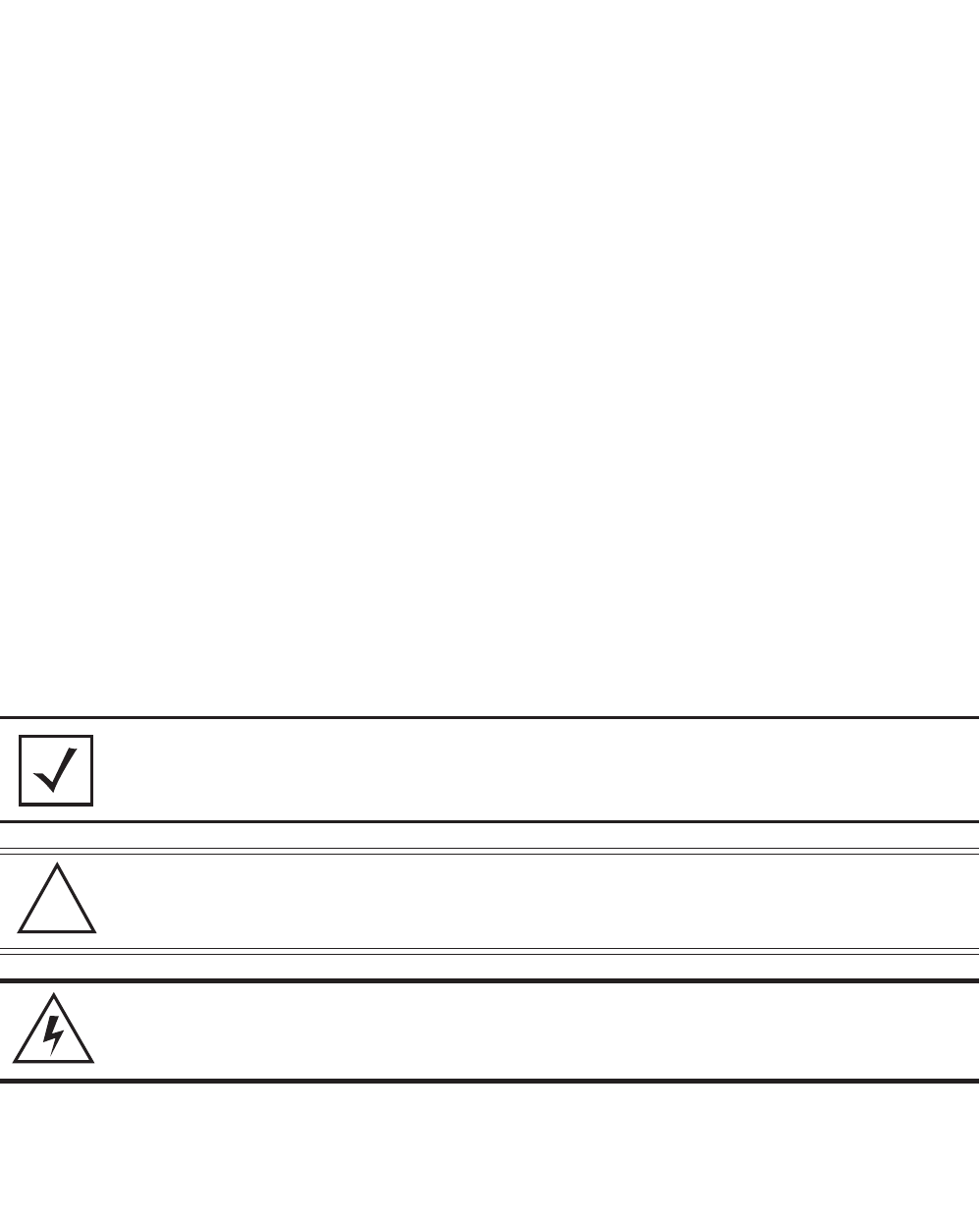
Introduction 1
1Introduction
The purpose of this document is to provide installation and setup procedures for Motorola’s
AP 7181 Access Point.
The AP 7181 is a wireless broadband data system that uses mesh networking technology to
support wide-area broadband data coverage. The system offers both 2.4 GHz 802.11b/g/n
and 5.x GHz 802.11n Wi-Fi client access with 2.4 GHz 802.11 b/g/n and 5.x GHz 802.11a/
n meshing. The dual-band system supports industry standard client devices and features
easily deployed fixed infrastructure nodes.
The AP 7181 is also designed to meet the needs of large, distributed outdoor networks. The
network can be configured and managed for optimal performance using the Wireless
Manager (WM) network Management application.
The most current versions of this manual and other AP 7181 documentation can be found
at:
http://motorola.wirelessbroadbandsupport.com/support/mesh/library
1.1 Document Conventions
The following graphical alerts are used in this document to indicate notable situations:
NOTE Tips, hints, or special requirements that you should take note of.
CAUTION Care is required. Disregarding a caution can result in data loss
or equipment malfunction.
WARNING! Indicates a condition or procedure that could result in personal
injury or equipment damage.
!
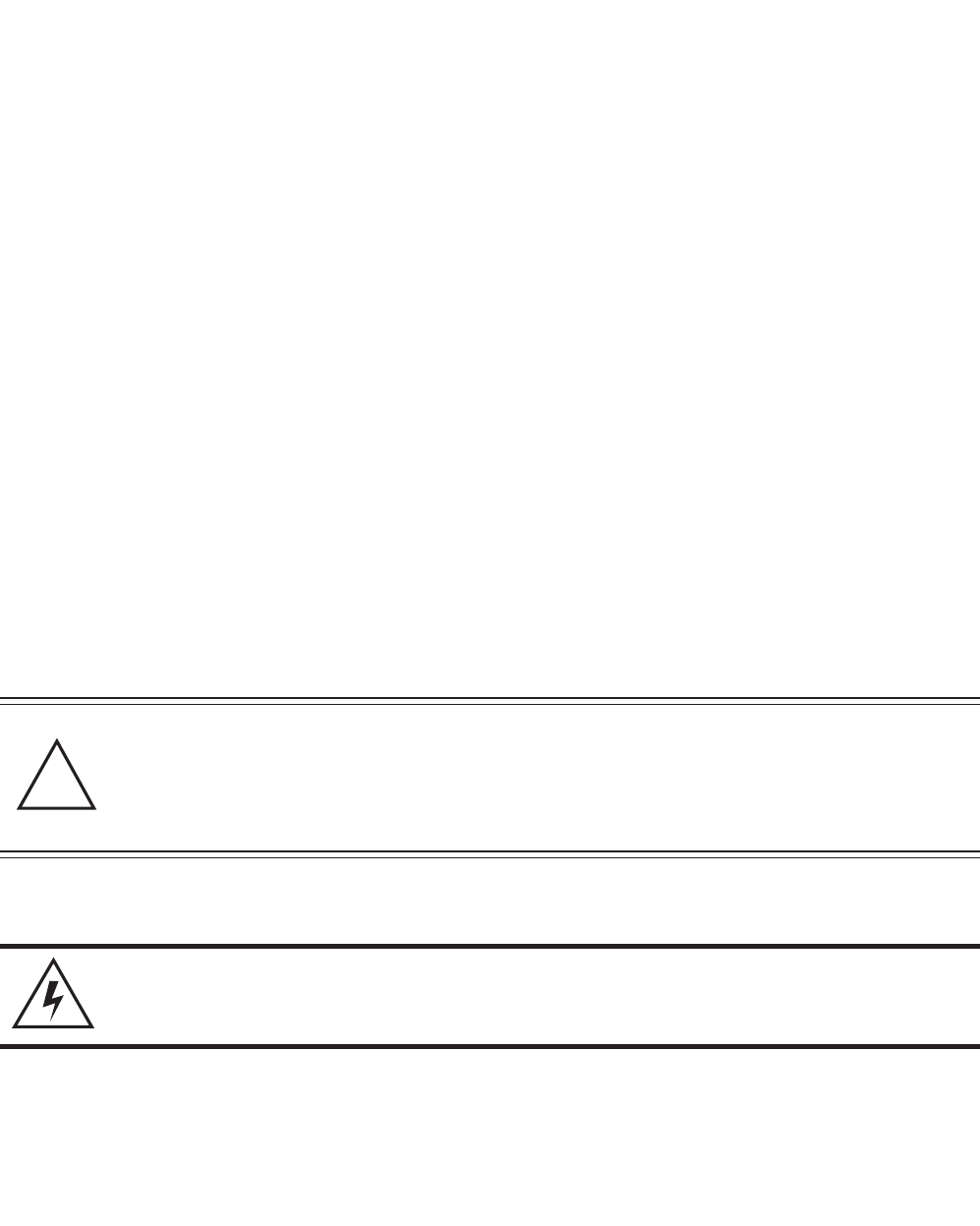
AP 7181 Access Point: Installation Guide
2
2 Hardware Installation
An AP 7181 access point installation includes mounting the access point, connecting the
access point to the network, and applying power. Installation procedures vary for different
environments.
2.1 Precautions
Before installing an AP 7181 model access point verify the following:
• Become familiar with grounding requirements (see Grounding Requirements).
• Verify the environment has a continuous temperature range between -40° C to 55°
C.
AP 7181 devices must be installed by trained professionals familiar with RF planning and
regulatory limits defined by the regulatory bodies of the country where the devices are
being deployed. All common precautions for grounding and ESD (Electrostatic Discharge)
protection should be observed during deployment and installation. AP 7181 devices are
designed to be installed outdoors and must be installed such that no harmful interference
results from device operation.
• Installations must be performed by professionals who are properly trained and
certified.
• Avoid contact with overhead power lines.
CAUTION All device wiring must comply with the National Electric code
(NEC) or regulations and procedures defined by the regulatory
bodies of the country or region where the devices are being
deployed. All local building and structure codes must be
observed.
WARNING! Strictly observe the following Safety Precautions during the AP
7181 Installation Procedure.
!
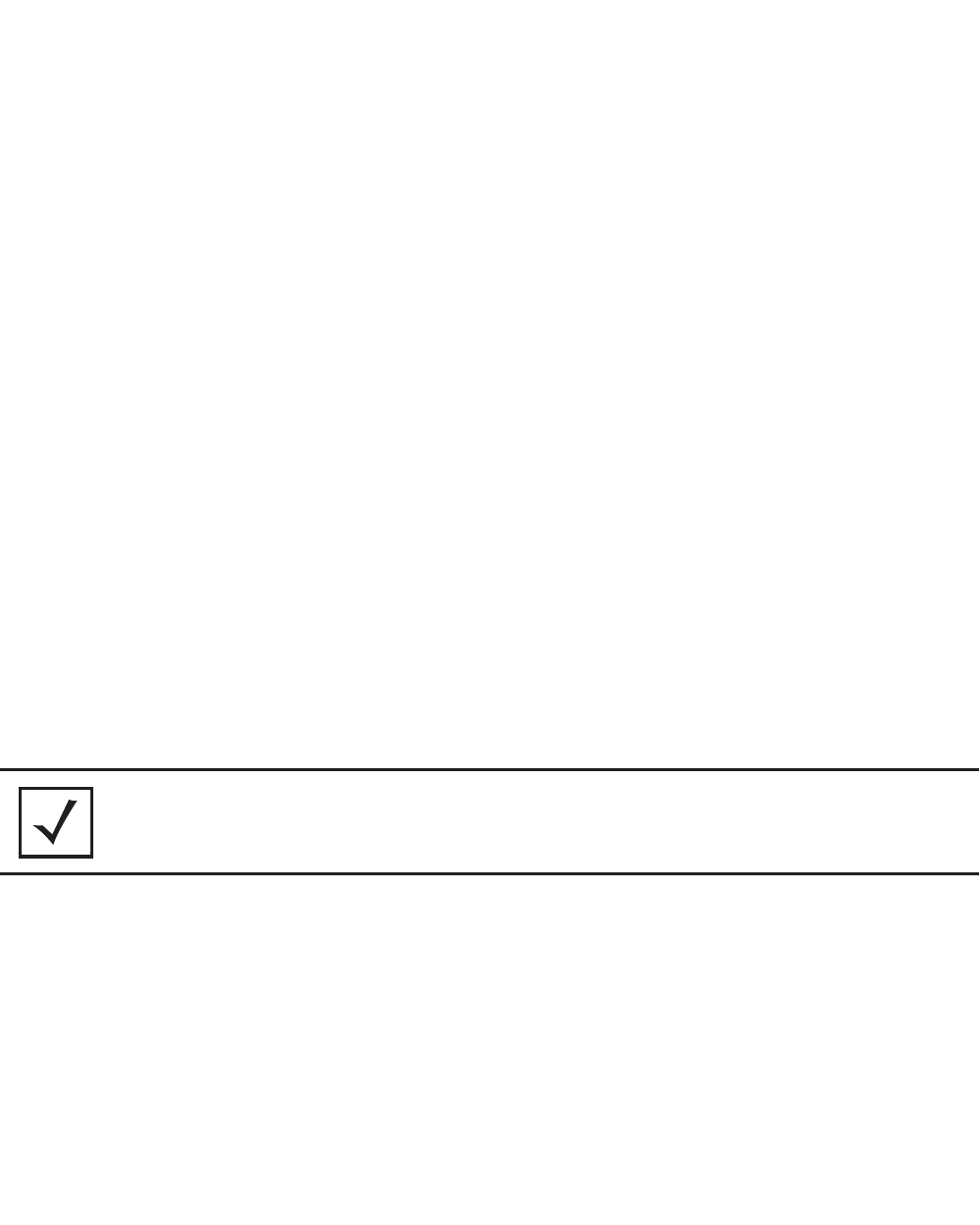
Hardware Installation 3
• Take precautions to avoid injury from falling tools and equipment. Crews should
wear hardhats in and around the installation work site.
• Be aware of vehicular traffic in and around the installation work site.
• Do not hold any component containing a radio such that the antenna is very close
to or touching any exposed parts of the body, especially the face or eyes, while
transmitting.
• Do not operate a portable transmitter near unshielded blasting caps or in an
environment where explosives are present unless the transmitter is especially
certified for such use.
2.2 Deployment Guidelines
Observe the following recommended guidelines to help ensure a successful network
deployment:
• Mounting height for network devices should not exceed 30 to 35 feet. Mounting
height should vary to accomodate the topography of the deployment area, foliage,
and other obstructions.
• Devices can be deployed using either the Bottom Mount Installation or the Top
Mount Installation procedure.
• Point-to-Point (PTP (Slave)) or Point-to-Multipoint (PMP (SM)) nodes providing
backhaul should be oriented to point away from AP 7181 antenna panels.
• Custom stand-off brackets should be used as required to provide adequate pole
separation in an an effort to minimize reflective received power.
• LoS guidelines should be given special consideration whenever devices will not be
installed in a straight line, such as deploying devices on alterating sides of a
roadway.
• Ensure that all Root nodes are deployed with line of site to the wireless backhaul
cluster points.
NOTE For more detailed deployment considerations for backhaul, refer
to the Mesh AP 7181 System Planner.

AP 7181 Access Point: Installation Guide
4
2.3 Installation Methodology
Consideration of the order in which units are installed when deploying an AP 7181 wireless
network can work to ensure a more stable and functional network. The PTP backhaul layer
should be deployed first. Next deploy all nodes for the PMP Access Point distribution layer.
Next deploy Root nodes along with PMP Subscriber Modules (SMs) such that backhaul
and network connectivity can be verified or corrected. Finally, deploy all Mesh Point
wireless nodes in order of the least to most hops (1 hop nodes first, followed by 2 hop nodes,
etc.).
2.4 Grounding Requirements
To avoid damage to the equipment, become familiar with Motorola Policy R56 before
installing AP 7181 units. Refer to Standards and Guidelines For Communication Sites,
Version B. Both the hardcopy manual (Part Number 68P81089E50-B) and the CD version
(Part Number 9880384V83) can be ordered from Motorola.
Section 7.6.4 Broadband - Wireless Access Point Network from the Standards and
Guidelines For Communication Sites applies directly to AP 7181 deployments:
SPD (Surge Protection Device) considerations for broadband shall include the use of SPDs
to protect pole-mounted access points and ground-based cabinet architecture. It is
important to install proper SPD applications on both ends of Ethernet, Power-Over
Ethernet (POE), Giga-Ethernet (GigE) and AC cable runs. SPDs shall be located within
the node or cabinet, or as close to the entrance as possible, and properly installed into load
centers, control panels and utility power cabinets. While RF protection is a consideration,
it shall only be required when antennas are connected to the node with coaxial cables
greater than 610 mm (2 ft.) in length.
When grounding a unit installed on a wooden pole, a ground conductor and rod is required.
This requirement should be factored into the project deployment costs, particularly if the
equipment must be installed by a utility company.
CAUTION It is required that all root and portal nodes be adequately
grounded. In addition, all root nodes and portals using the
Ethernet port or attached devices (e.g. a camera) must not only
be grounded, but they should also include surge suppression
for network reliability. This is particularly important for
network configurations with a public safety component.
!

Hardware Installation 5
2.5 Minimum Installation Requirements
The minimum requirements for installing an AP 7181:
• AP 7181 Access Point
• Power Cable (Flying Leads)
• Standard Ethernet cable
• Yoke (attached)
• 22 mm Socket and driver to remove port caps
• #6 metric Allen Wrench to remove the Yoke (if a top mounted installation is
required)
2.6 Package Contents
Check the package contents for the AP 7181. Each unit should contain:
• AP 7181 Access Point (assembled with Mounting Yoke attached)
• Power Cable
• Optional accessories (in a separate box inside the AP 7181 shipping container)
Contact the Motorola Support Center to report missing or improperly functioning items.
Refer to Customer Support.
2.7 Access Point Placement
Typically, roadways in the deployment area become main arteries for the wireless mesh
network. Roadways can provide LoS coverage over large distances between Root and Non
Root APs.
2.7.1 Site Surveys
Motorola recommends conducting a site survey prior to installing an access point. A
thorough site survey must include a visit to the customer site to identify the characteristics
of the coverage area, including availability of electrical distribution for power sources and
the location of existing network infrastructure.The site survey should also include
preliminary WLAN measurements to identify candidate AP locations
When scheduling a visit to conduct a site survey, request access to wiring closets, adjacent
floors, and other locations that may require special permission.

AP 7181 Access Point: Installation Guide
6
2.7.2 Root Node Placement
When planning for Root Node placement:
• Identify Root node wireless backhaul technology (Point-to-Point (PTP), Point-to-
Multipoint (PMP)).
• Identify Ethernet or fiber optic backhaul.
• Identify Root node locations.
• Obtain all required permits and/or lease agreements.
• Verify that power is available at each potential node deployment location.
• Give careful consideration to the fact that Root nodes with a wireless backhaul
usually backhaul traffic to a cluster point (i.e. PMP Canopy).
• Wireless backhaul clusters can be on towers, rooftops, etc.
• Ensure that all Root nodes are deployed with LoS to cluster points.
2.7.3 Non Root Node Placement
The same guidelines as Root nodes apply with the exception of a backhaul requirement
The placement of Non Root nodes will depend heavily on the RF network design. Consider
the guidelines for optimizing wireless network performance when identifying potential
mounting sites.
In addition, consider the following when planning for Non Root node placement:
• Light Poles, Utility Poles, or Traffic Poles
• Obtain all required supplemental agreements from local governments and
utilities.
• Obtain a generic mounting agreement that is not specify specific poles, since
installation locations may need to be modified during deployment.
• Plan for AC power usage of 84 watts average, 126 watts peak.
• The AP 7181 is rated for wind loading of up to160 mph.
• Ensure that proper grounding can be established.
• Rooftops and Towers
• May require lease agreements.
• Identify AP locations based on optimal communication with the Root nodes.
• Non Root node placement will be dependent on asset availability, terrain, etc.

Hardware Installation 7
• Ensure that nodes are placed at the same height.
• Build the network outward from each root node, from least to greatest number of
hops.
As with Root nodes, it should be noted that it is incumbent upon the customer to obtain the
required Pole Attachment Agreements for devices to be installed on traffic / utility poles.
Obtaining the agreements can be a lengthy process, so ample lead time must be allowed.
The potential pole locations should be logged with GPS to obtain accurate coordinates.
Also log any identifying numbers on the pole so that this information can be provided to
the appropriate utility agency. Alternate mounting locations should also be identified in the
event that your initial request is denied.
Specialized brackets may be required for attaching devices to decorative light poles and
these brackets may have to be custom fabricated. If this is the case, allow enough lead time
for ordering the proper equipment.
Also consider any requirements to coordinate requests with multiple utility agencies within
the same community. Verify that light pole selections have power available continuously
and that the power source is within the operational range of the device being connected.
2.7.4 Mounting Locations
To avoid distortion of the RF pattern, device locations should be chosen such that the AP
7181 ADvanced Element Panel Technology (ADEPT) antenna panels are at least 30 inches
from any nearby metal poles and not co-located or operating in conjunction with any other
antenna or transmitter.The antenna panels must also have a separation distance of at least 2
meters from anyone who may come into proximity of the AP 7181.
2.7.5 Device Deployment Height
AP 7181 nodes are typically mounted at a height of 30 to 35 feet. Ensure that neighboring
nodes are mounted at or near the same device height.
Excessive height should be avoided since this may result in increased congestion and
interference in dense RF environments. This is especially true for the 2.4 GHz band.
Nodes deployed with too great a difference in height or too close to each other may not
mesh properly.

AP 7181 Access Point: Installation Guide
8
Always consider these general guidelines for device deployment height:
• Maintain a typical deployment height of 30 to 35 feet.
• For optimum performance, ensure that devices are oriented to have LoS to all
neighboring devices.
• Locate Root Nodes which support Wireless Backhaul so that they have LoS to
Backhaul clusters or PTP locations, such as towers.
2.8 Antenna Options
The AP 7181 features an integrated ADvanced Element Panel Technology (ADEPT)
antenna system that is designed to take full advantage of the 802.11n radios. No other
antennas are supported.
2.9 AP 7181 Power Options
Details of the power sourcing equipment for the AP 7181 should be handled by a
professional installer. The requirements for deploying the system are:
• Over current protection device with a maximum rating of 20 Amps.
• AP 7181 AC Model - 100-240 VAC input capable of sourcing 180 watts.
• AP 7181 DC Model - Nominal 48 Volt Power source (41-58 VDC) capable of
sourcing 150 watts. Battery floating voltage should not exceed 60 VDC.
2.9.1 Power Cables
Flying lead power cables are available based on the country of operation.
Four Wire AC Right Angle Power Cable
(North America and International)
Black (Line)
White (Neutral)
Red (Unused)
Green/Yellow (Ground)
Three Wire AC Power Cable
(International)
Brown (Line)
Blue (Neutral)
Green/Yellow (Ground)
Two Wire DC Power Cable
(North America and International)
Black (Negative)
Red (Positive)
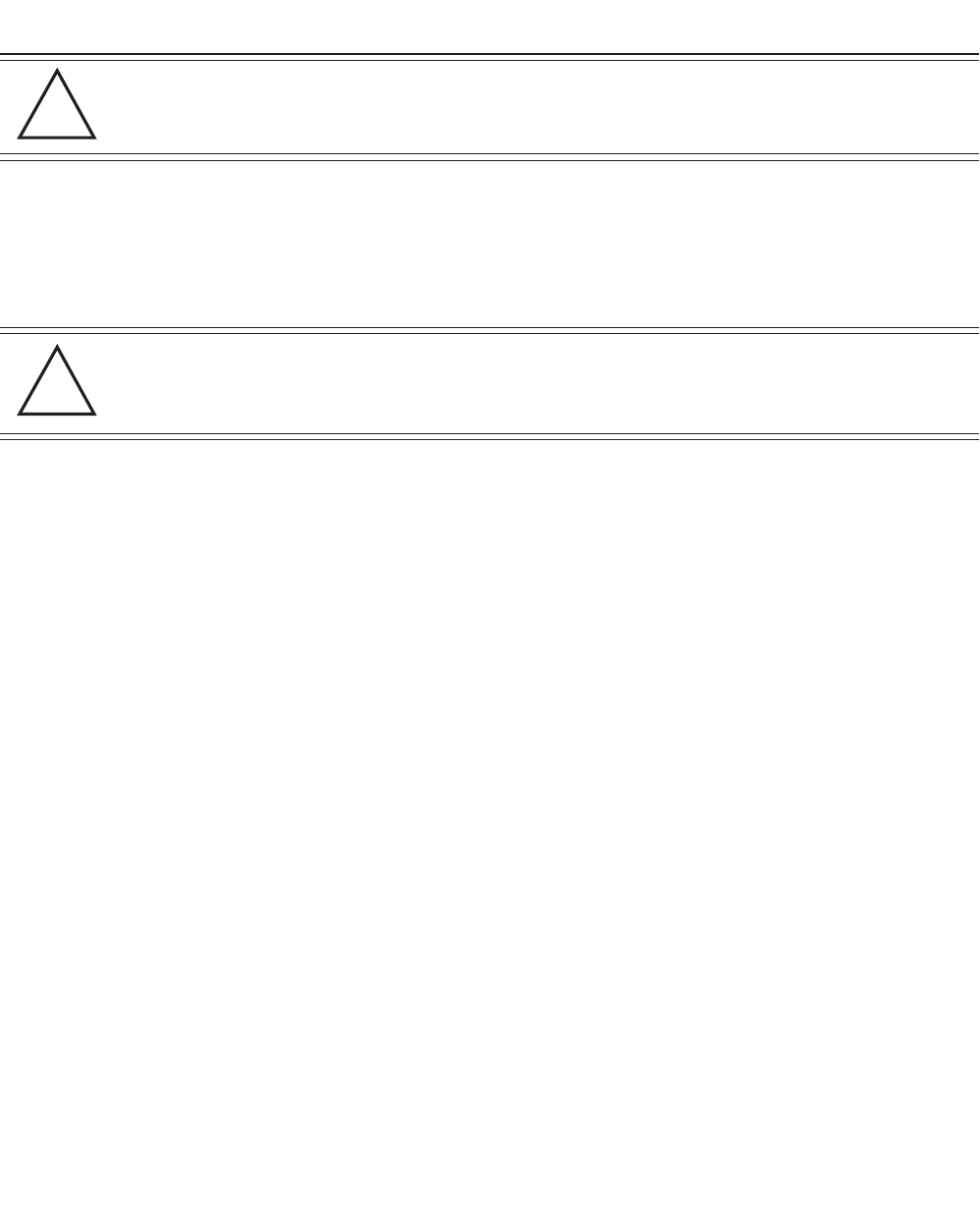
Hardware Installation 9
If the units will be plugged directly into an electircal wall outlet, power plug adapters are
available for North America, Europe, and Australia.
2.10 Mounting an AP 7181
The AP 7181 is designed for outdoor installations. All hardware installations should be
performed by a professional installer.
Devices can be deployed using either the Bottom Mount Installation or the Top Mount
Installation procedure.
Mounting options are available for light pole, building roof tops, and building walls.
Choose one of the following mounting options based on the physical environment coverage
area requirements.
CAUTION Never plug a power cable wired to a power source for an AC
unit into a DC unit.
CAUTION Do not use the connector on the power cables for
interrupting current. Never actively plug or unplug the
connector while the cable is energized.
!
!
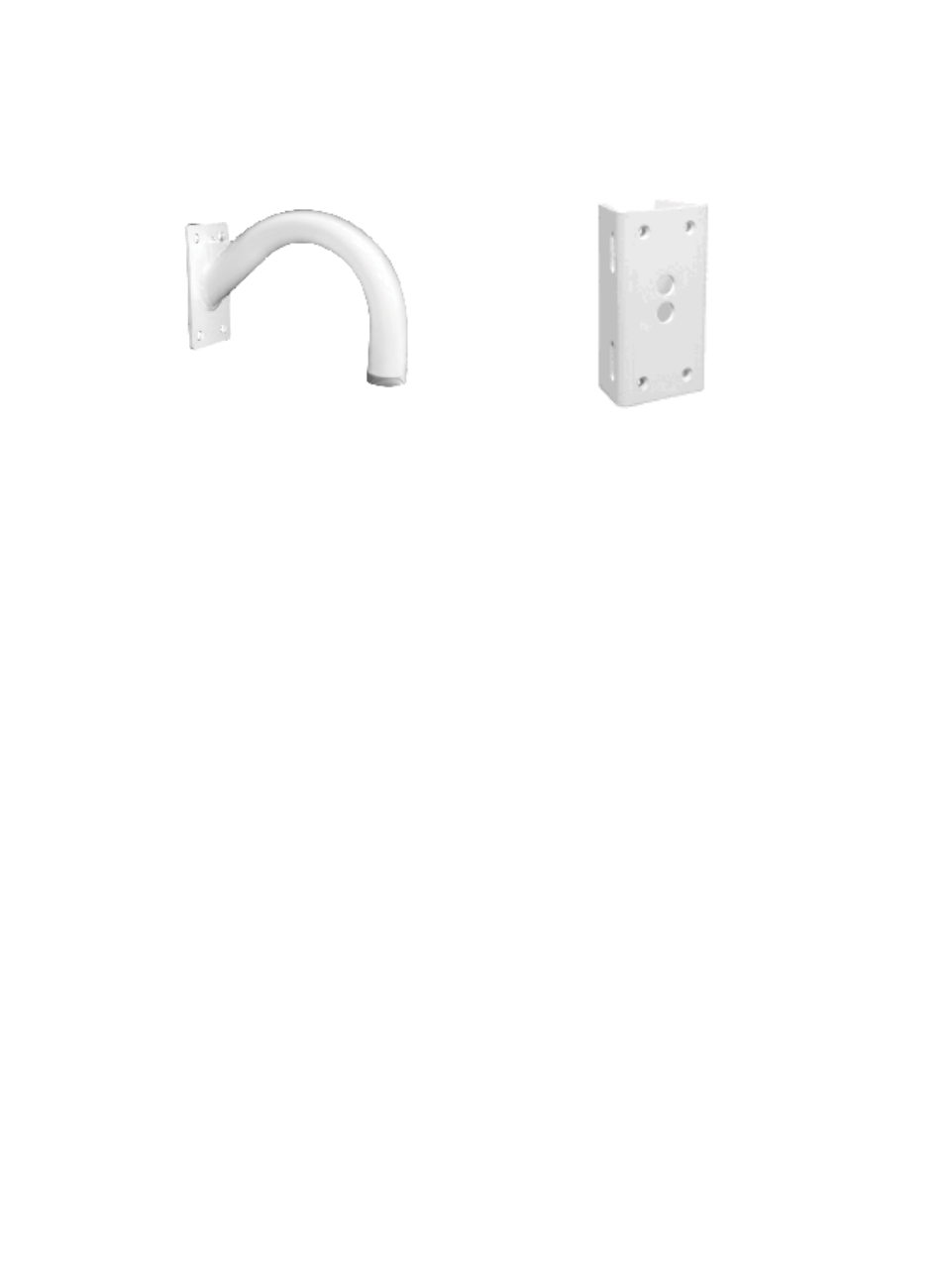
AP 7181 Access Point: Installation Guide
10
2.10.1 Pole Mounted Installations
The optional Wall Gooseneck can also be used with the Pole Adapter for pole
mounting.
The Wall Gooseneck dimensions are 10x12x6 inches and it weighs 4 pounds. The Pole
Adapter dimensions are 4x2.62x7 inches and it weighs 3 pounds.
The Gooseneck attaches to the Yoke, which can be attached to the top or the bottom of
the AP 7181. Secure the Gooseneck and adaptor to the pole using band clamps with the
threaded portion pointing either up or down.
If using a bottom mount, drill a 1/4 inch diameter hole at the lowest point on the bend
to allow water to drain from the Gooseneck.
2.11 Installing an AP 7181
The following guidelines and procedures should be observed when installing an AP
7181 device.
2.11.1 Required Tools
The following is a list of the minimal tool set required to install an AP 7181 device:
• 24 mm Socket and driver - for cable gland
• 22 mm Socket and driver - for GE1 and GE2 port caps
• 19 mm Socket and driver - for Console port cap
• 21 mm Socket and driver - for set screw
• 8 mm Socket and driver - for ground screw
• 6 mm Allen Wrench bit - for mounting bracket (Yoke)
• T27 Torx bit - for the Sun Shields
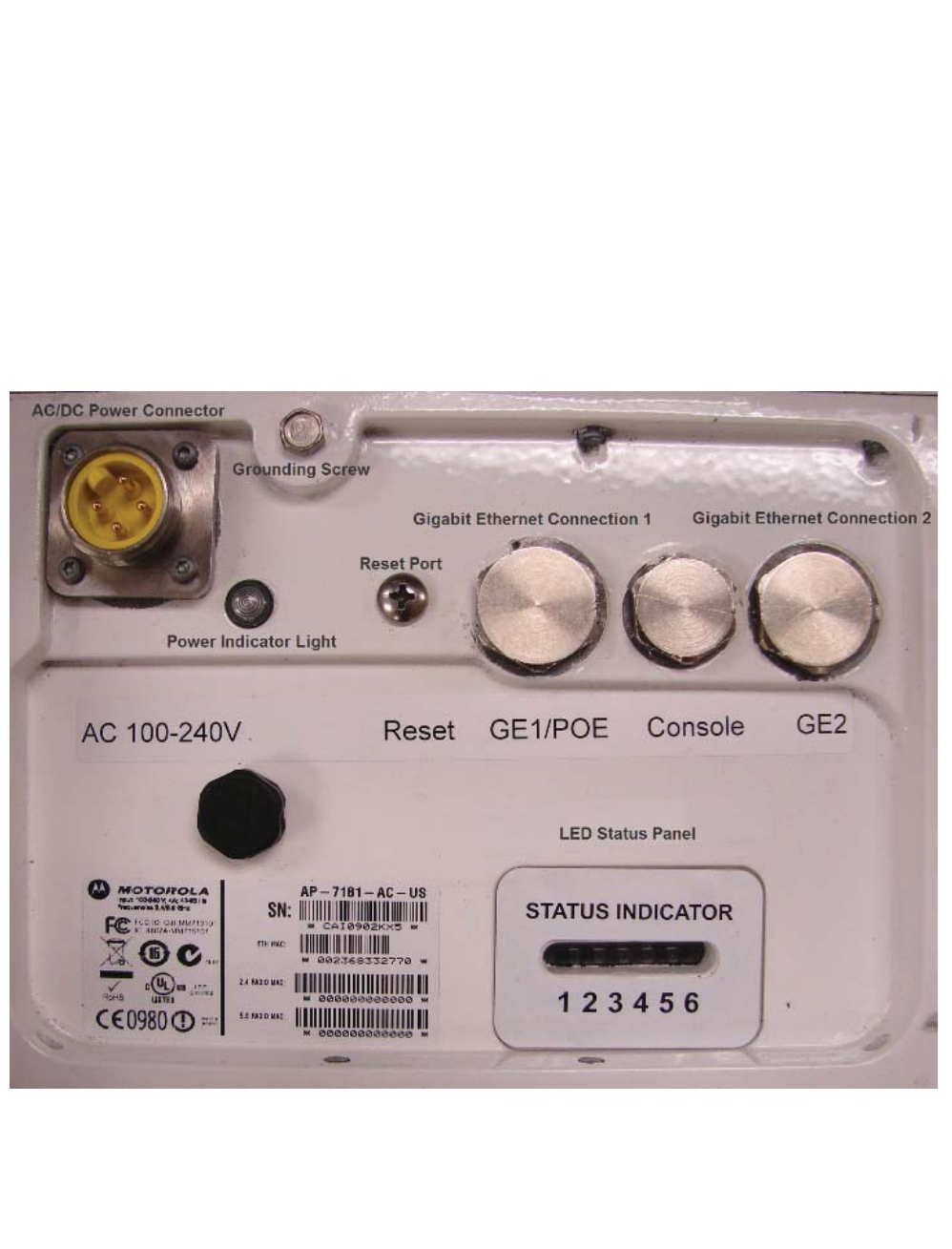
Hardware Installation 11
• Torque Screwdriver - for the Sun Shields
• Torque Wrench
• Adjustable Wrench
• Standard Level
• Tube of Lithium Grease
2.11.2 AP 7181 Connections and Ports
The power cable and grounding connections, power indicator light, Ethernet and reset
ports, and LED Status Panel on the bottom the AP 7181 are shown in the figure below.
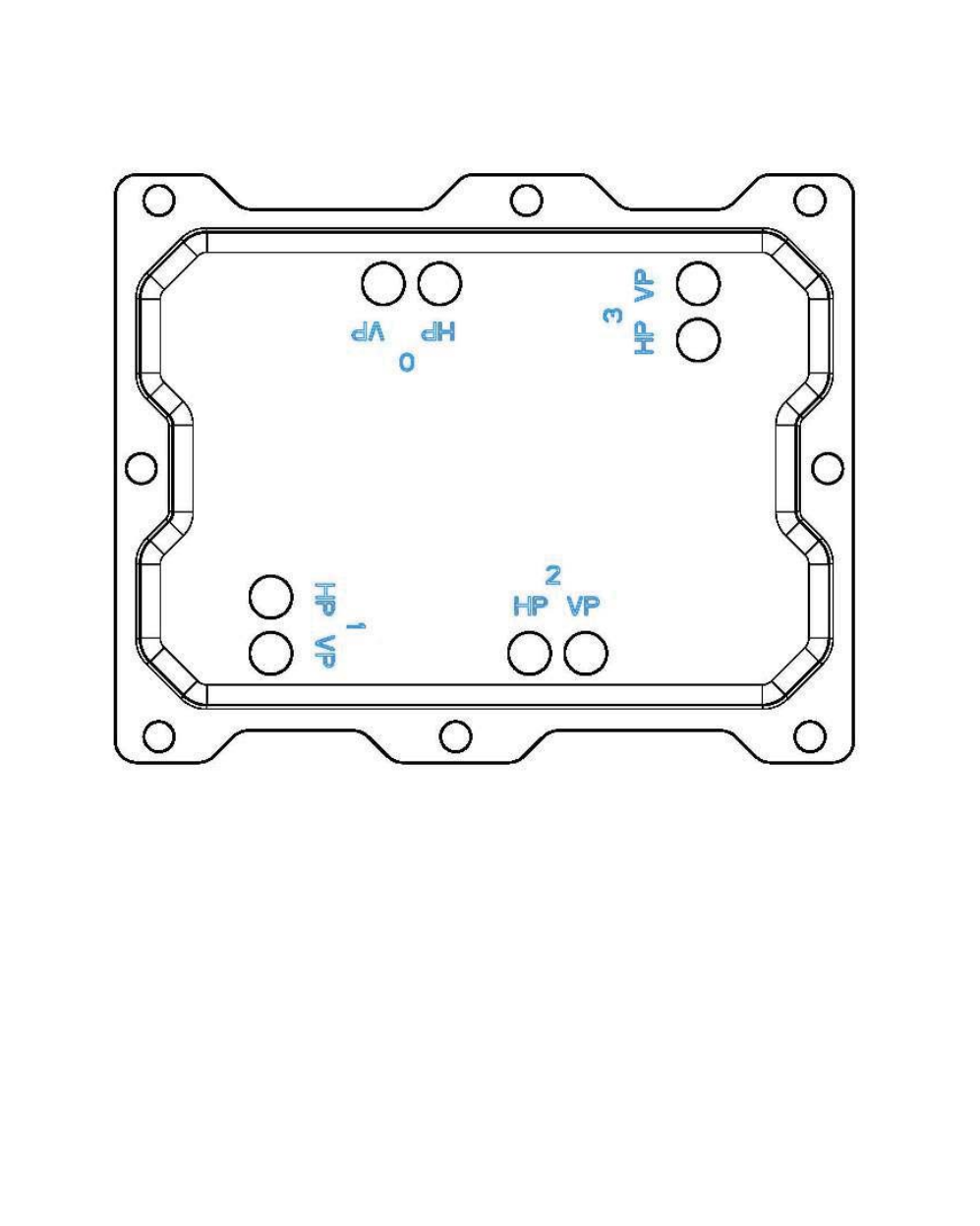
AP 7181 Access Point: Installation Guide
12
The Horizontal (HP) and Vertical (VP) connectors for the antenna cables are loacted on the
top of the AP 7181.
All Radome antenna panel cables are labeled as HP or VP. Attach each cable to the
corresponding connector when performing a Remote Panel Antenna Installation or any
other procedure which requires attaching antenna cables to the connectors.
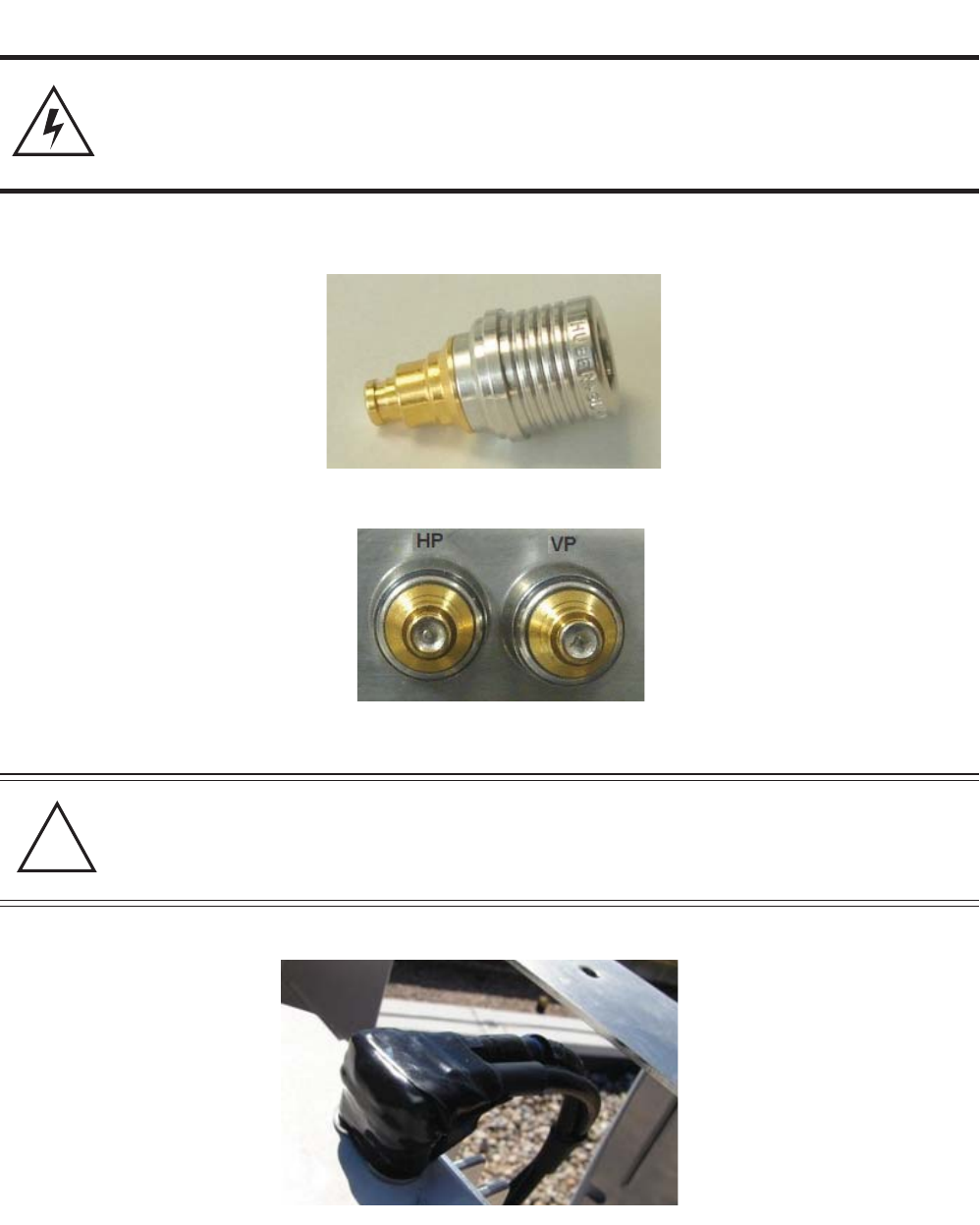
Hardware Installation 13
WARNING! When disconnecting the antenna cables from the unit or
removing an antenna panel and replacing it with a Blank panel,
terminators MUST be placed on the unused horizontal and
vertical connectors on the top of the unit.
CAUTION It is also recommended that the antenna cable connectors and
terminators on the horizontal and vertical connectors on the top
of the AP 7181 be wrapped with both mastic tape and electrical
tape.
!

AP 7181 Access Point: Installation Guide
14
2.11.3 LED Status Indicator Panel
There are six LEDs on the AP 7181 which are visible on the bottom of the unit
through light pipes.The LEDs have the following display characteristics and
functionality:
LED 1 LED 2 LED 3
LED 4 - 5
GHz
LED 5 - 2.4
GHz LED 6
Blinking
Red
indicates
booting.
Solid Red
defines a
failure
condition.
White
defines
normal
operation
Green
defines
normal GE1
operation.
Yellow
defines a
collision
Green
defines
normal GE2
operation.
Yellow
defines a
collision
Amber
defines 5
GHz radio as
configured.
Emerald
defines 2.4
GHz radio as
configured.
Not used
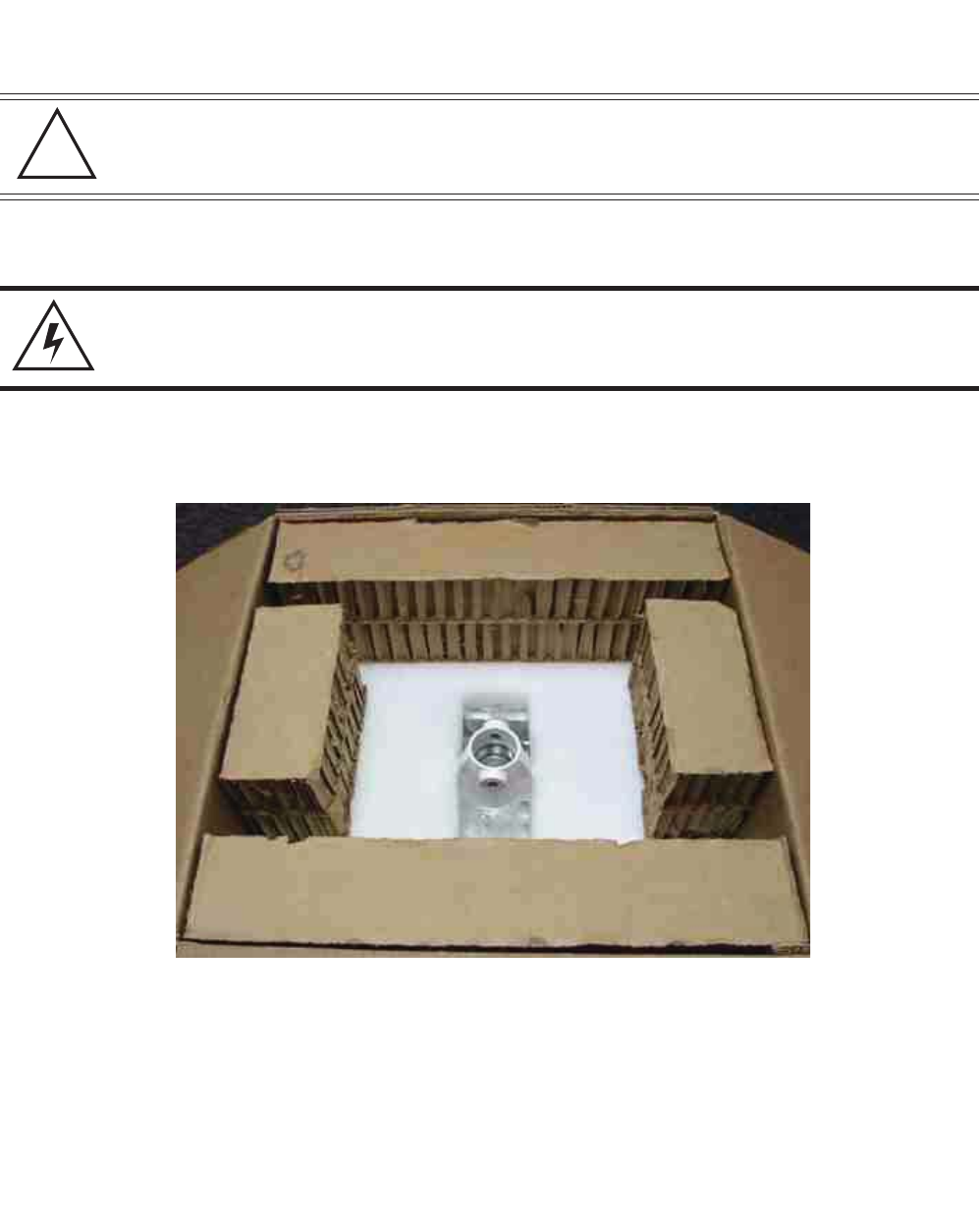
Hardware Installation 15
2.11.4 Removing the AP 7181 Kit from the Shipping Carton
1. Open the shipping carton and remove top packaging material.
CAUTION Never lift an AP 7181 using the Radome antenna panels or
other plastic parts. Always lift the unit by the Yoke or metal
antenna rings.
WARNING! An AP 7181 weighs 39 pounds. Use all appropriate cautions
when lifting and consider a two man lift when necessary.
!
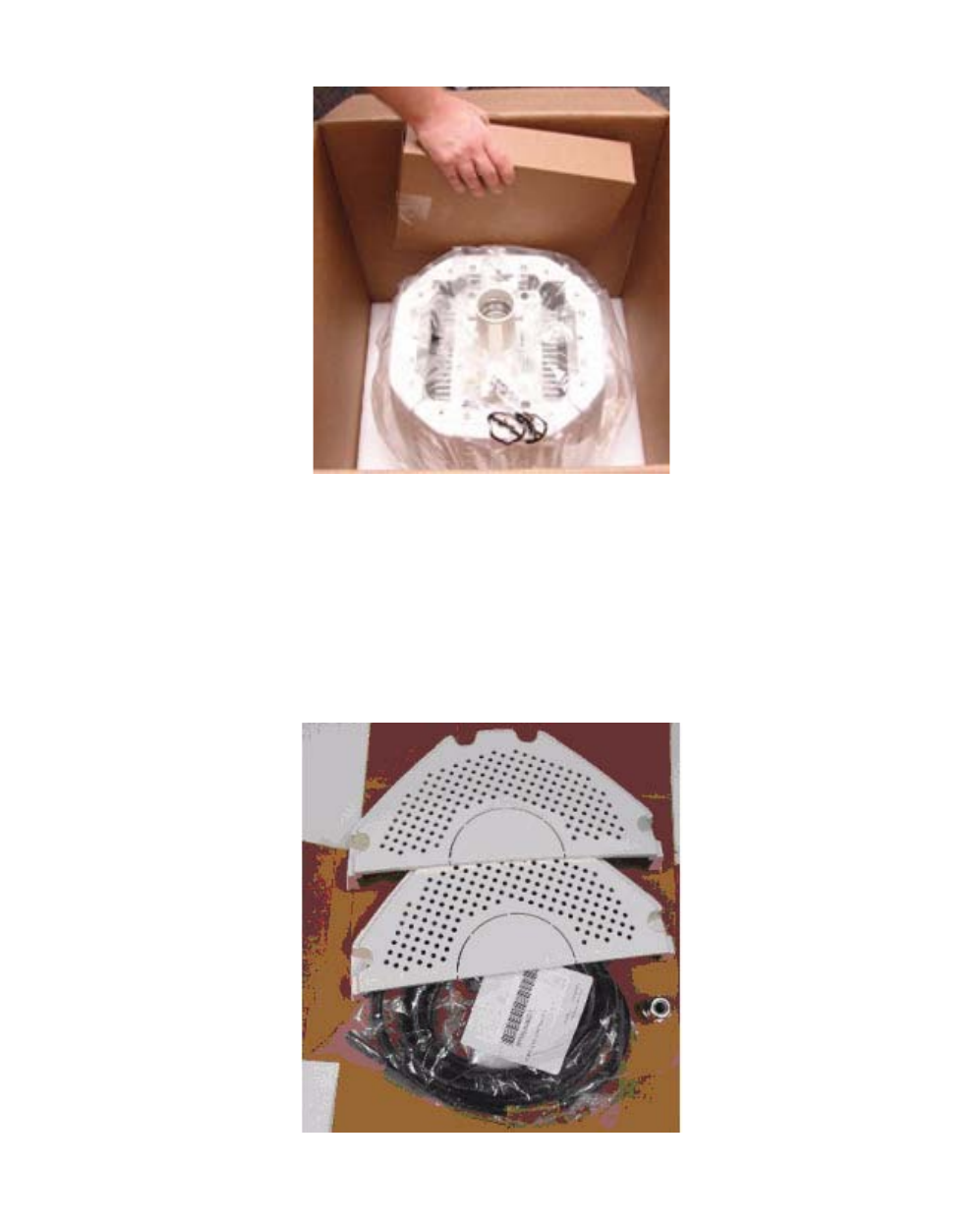
AP 7181 Access Point: Installation Guide
16
2. Remove the accessories pack from the shipping carton.
In the accessories box, you will find the following items:
• Water Proof Ethernet Adaptor (Cable Gland) (Part number: 09009302001)
• Power Cable (Part number: 30009307001, 30009308001, or 30009315001)
• Sun Shields with Captive Screws (Part number: HKLN4446A)
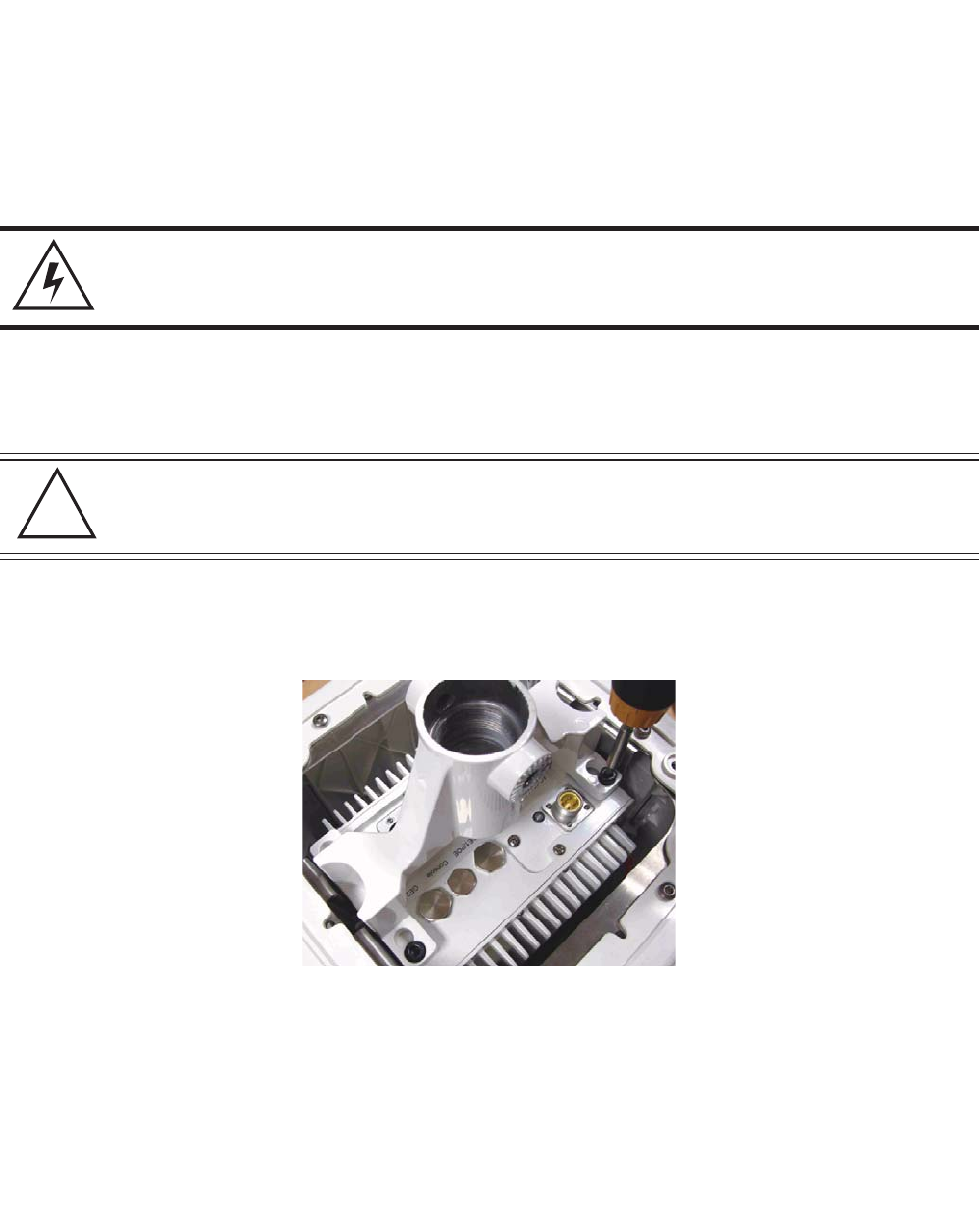
Hardware Installation 17
3. Open the plastic bag covering the unit.
4. Roll the plastic bag to the bottom of the shipping carton and using the Yoke or
Antenna Ring, carefully remove the unit from the box . Using this method will help
prevent damage to the antenna assembly.
2.11.5 Staging the Device Prior to Installation
1. Place on solid surface with the Yoke facing up.
2. Using the 6mm Allen Wrench, loosen the Allen head bolts to remove the Yoke.
WARNING! An AP 7181 weighs 39 pounds. Use all appropriate cautions
when lifting and consider a two man lift when necessary.
CAUTION Never lift an AP 7181 using the Radome antenna panels or
other plastic parts. Always lift the unit by the Yoke or metal
Antenna rings.
!
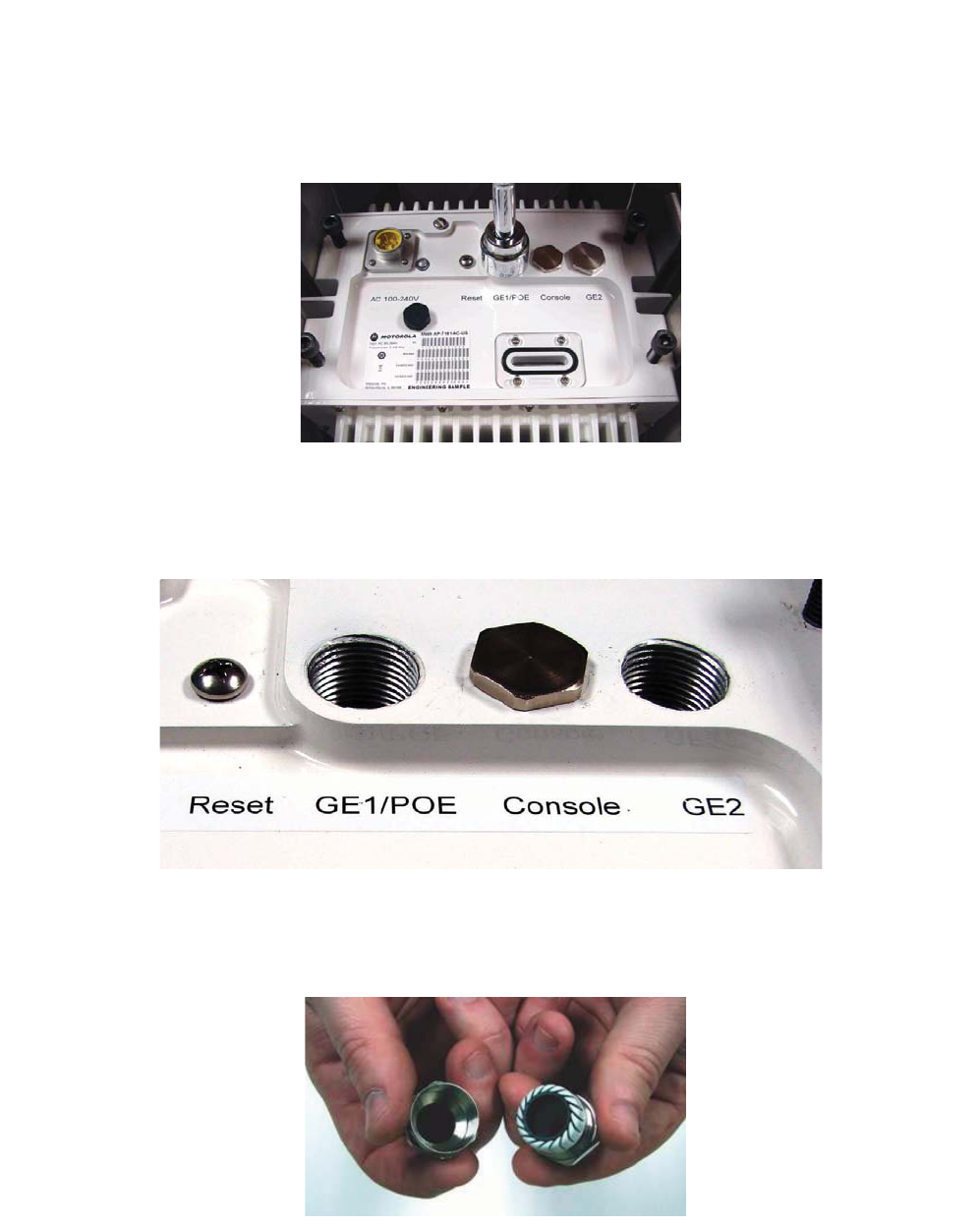
AP 7181 Access Point: Installation Guide
18
3. To gain access to the Ethernet and or console ports you will need to remove the
protective caps. A 22 mm socket will be required to remove the Ethernet port caps
covering Gigabit Ethernet ports GE1 and GE2. A 19 mm socket is required to
remove the console port cap (if required).
4. Using the 22 mm socket remove the port caps for Gigabit Ethernet GE1 and GE2.
5. Remove the cap on the cable gland as shown below.
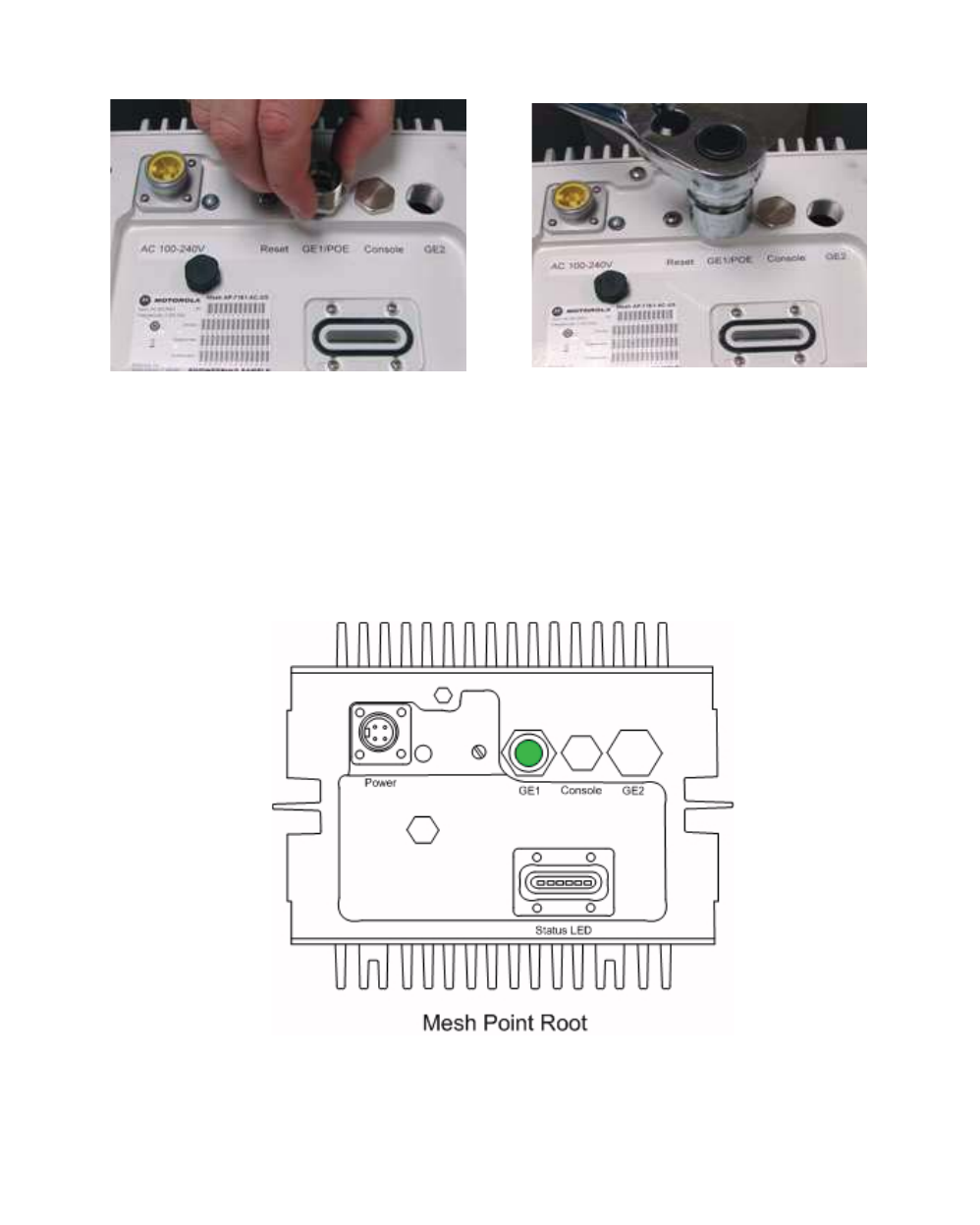
Hardware Installation 19
6. Carefully hand tighten the gland into Gigabit port GE1. Once the gland is snug, use
a 24 mm socket and finishing tighten the gland.
If the node is going to be configured as a Mesh Point Root node (Mesh Point Root nodes
have a direct wired Ethernet connection to the core network or an Ethernet connection to a
wireless backhaul) a cable gland will be required for Gigabit Ethernet port GE1.
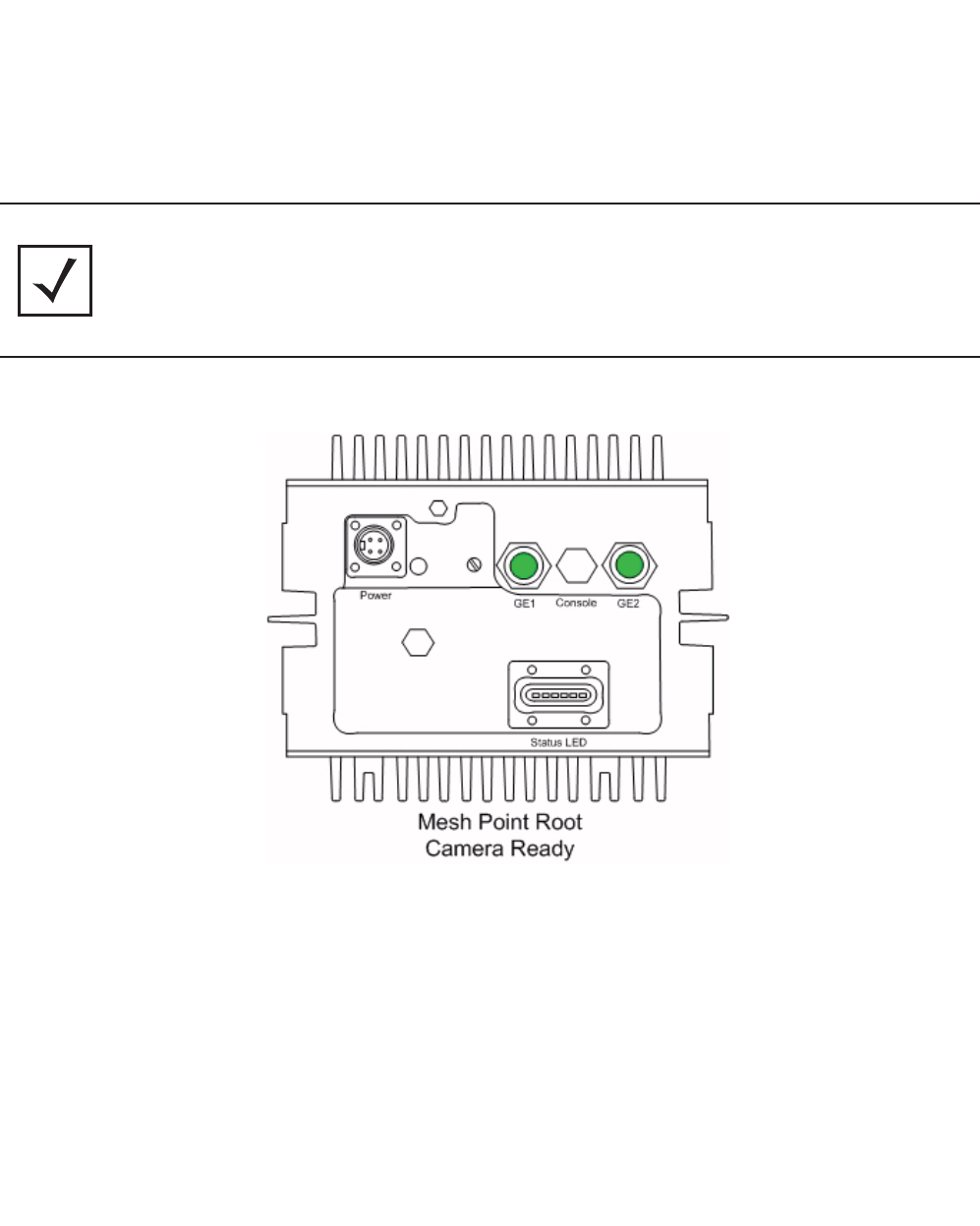
AP 7181 Access Point: Installation Guide
20
If the Mesh Point Root node is also going to have an external device attached (e.g.
surveillance camera) an additional cable gland will be required for Gigabit Ethernet port
GE2 (make sure the WAN port GE2 has been configured to permit an attached external
device during the configuration process).
NOTE The AP 7181 supports 802.af compliant Power over Ethernet
(PoE) on Ethernet port GE1 and can provide power to an external
PoE capable device such as a surveillance camera. PoE is auto
sensing and is enabled when the AP-7181 senses a PoE capable
device.

Hardware Installation 21
If the device being staged is a Mesh Point node (no wired connection to the core network)
and no external device is going to be attached then no cable glands are required.
If the Mesh Point node is going to have an external device attached (e.g. surveillance
camera) a cable gland is required for Gigabit Ethernet port GE1.
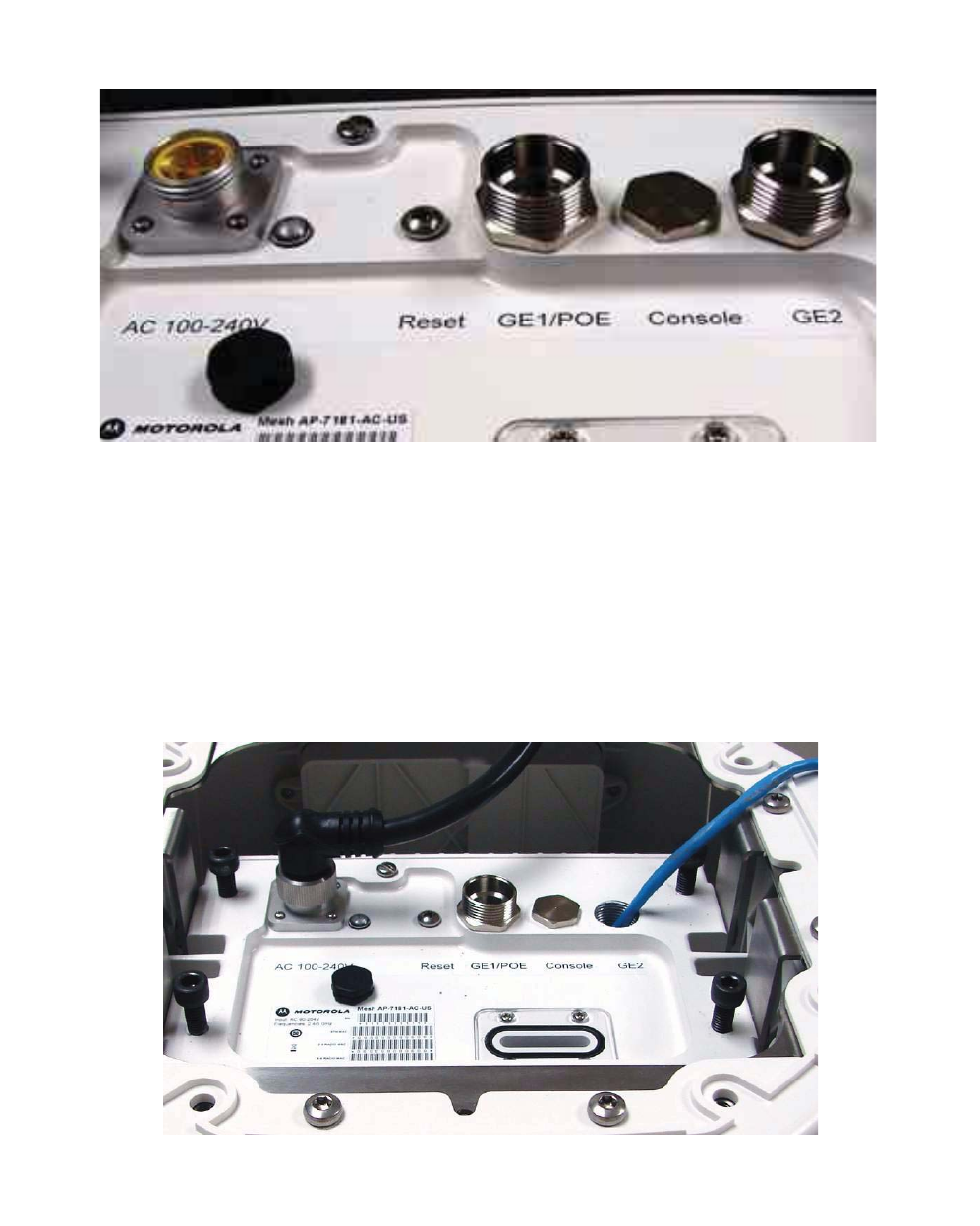
AP 7181 Access Point: Installation Guide
22
7. Repeat the process if a second cable gland is required.
8. Attach an Ethernet cable to Gigabit Ethernet port GE2 (to be used with an external
laptop for configuring the unit). You will also need to terminate the flying lead
power cable with the proper plug (for the country of operation) so the unit can be
powered for configuration. After preparing the power cable attach the cable to the
power port. Notice that the power connector is keyed. Next configure the unit.
Refer to Getting Started for initial device configuration.
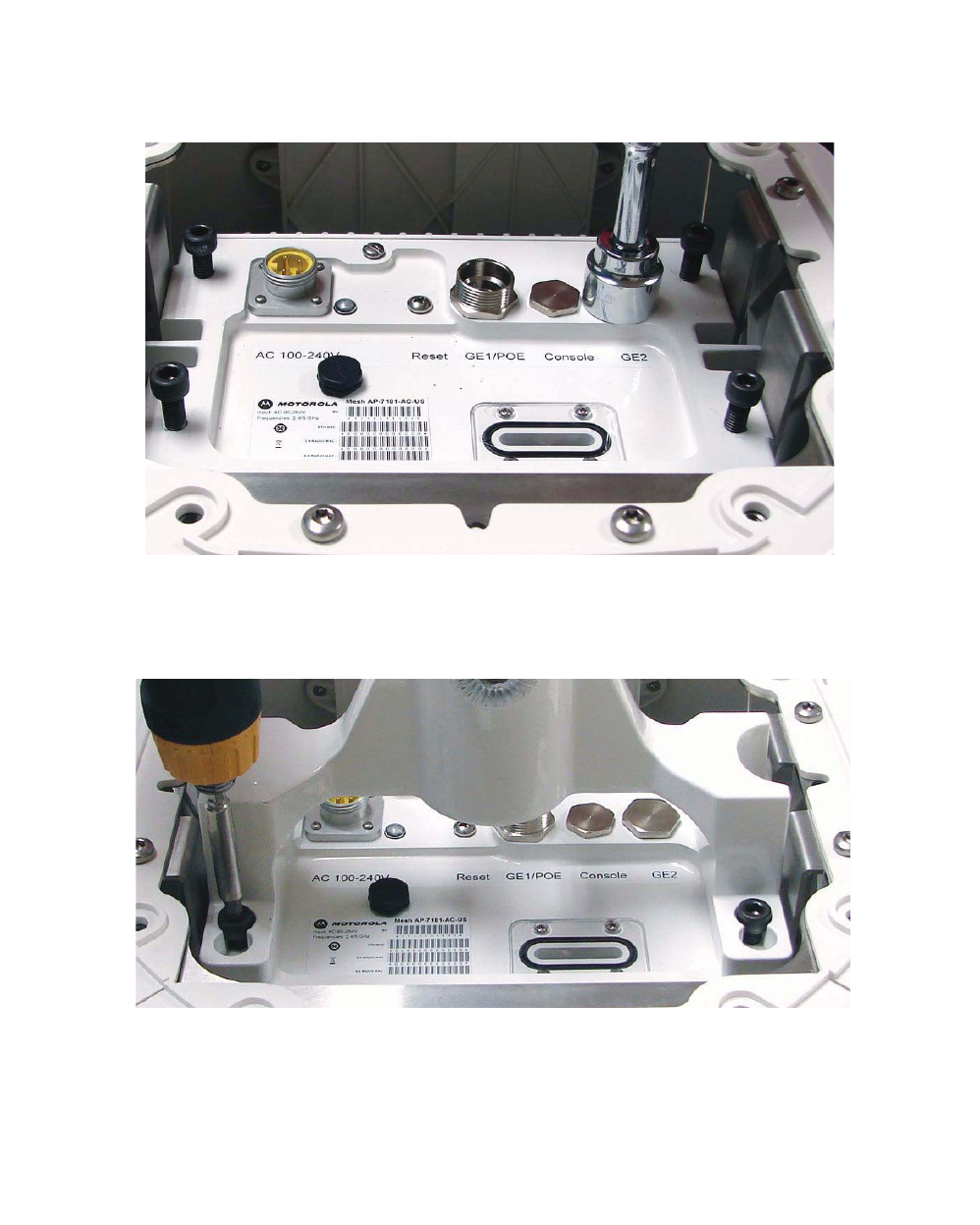
Hardware Installation 23
9. After the unit has been configured, if the GE2 port is not going to be used to attach
an external device to the AP7181, reattach the port cap. If the GE2 port is going to
be used to attach and external device, attach the cable gland to the GE2 port.
10. Reattach the Yoke.
11. Return the unit to the shipping carton for transport to the installation site. Due to
the nature of the electronic components and antenna array, using the shipping
carton is the most secure method for transport.
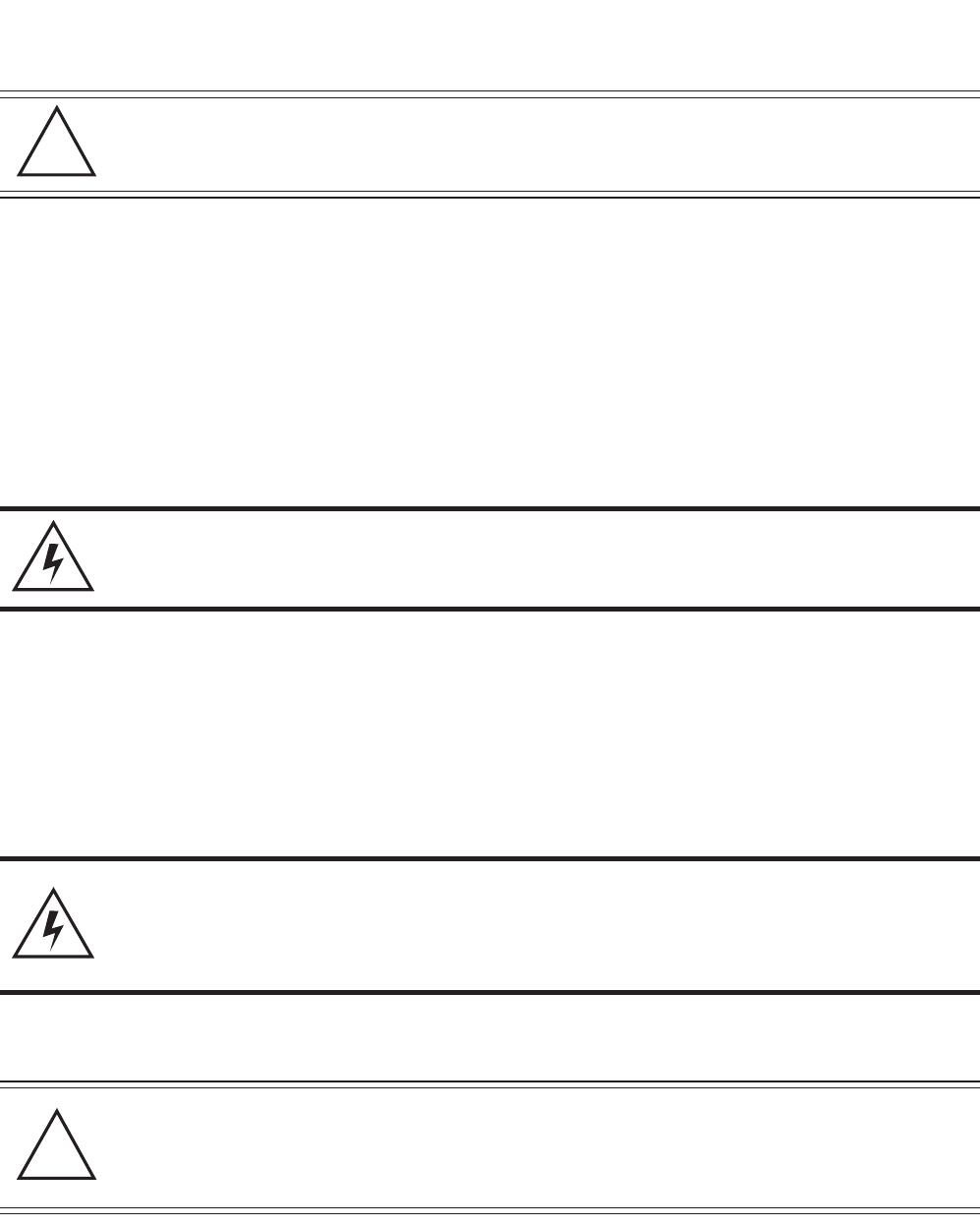
AP 7181 Access Point: Installation Guide
24
2.12 Field Installation
• Only trained and qualified personnel should install this equipment.
• Only a licensed electrician should install power cable / energize circuits.
• All device wiring must follow the National Electric Code (NEC) or wiring
requirements in the country of installation. All location building and structure
codes must be observed.
• Ensure that the power source for the AP 7181 is de-energized prior to installation.
• Avoid exposure to high voltage power sources.
• Avoid contact with overhead power lines.
• Avoid falling tools or equipment.
• Be aware of vehicular traffic in the vicinity of the work area.
CAUTION Observe the following precautions to avoid damage to the unit
during installation.
WARNING! Observe the following safety precautions to avoid personal
injury during installation.
WARNING! When disconnecting the antenna cables from the unit or
removing an antenna panel and replacing it with a Blank panel,
terminators MUST be placed on the unused connectors on the
top of the unit.
CAUTION It is also recommended that the antenna cable connectors and
terminators on the horizontal and vertical connectors on the top
of the AP 7181 be wrapped with both mastic tape and electrical
tape.
!
!
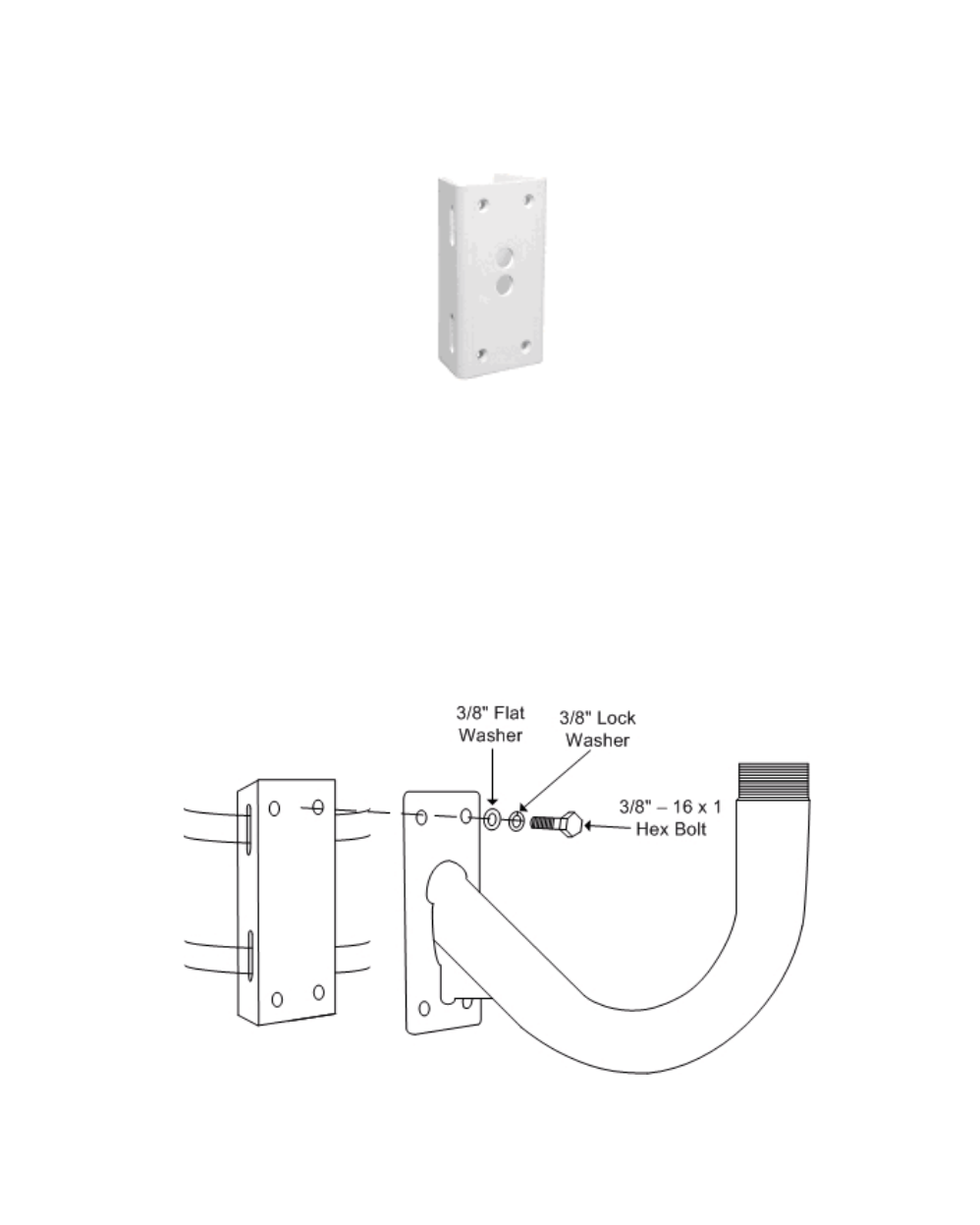
Hardware Installation 25
2.12.1 Bottom Mount Installation
The pole mount adapter (Part Number RLN6197A) will accommodate a banding strap up
to 1¼ inch width. Banding straps and the banding tool are not included when ordering the
pole mount adapter.
The pole mount adapter can be mounted to poles 3 inches to 15 inches in diameter and has
a load rating of 75 lbs.
1. Attach the pole mount adapter (or other mounting bracket hardware) to the
mounting asset and ensure that the mounting bracket is level.
2. Using the 4 hex head bolts (3/8"x16"x1") included with pole mount adapter (Part
Number RLN6197A), secure the Gooseneck to the pole mount adapter.
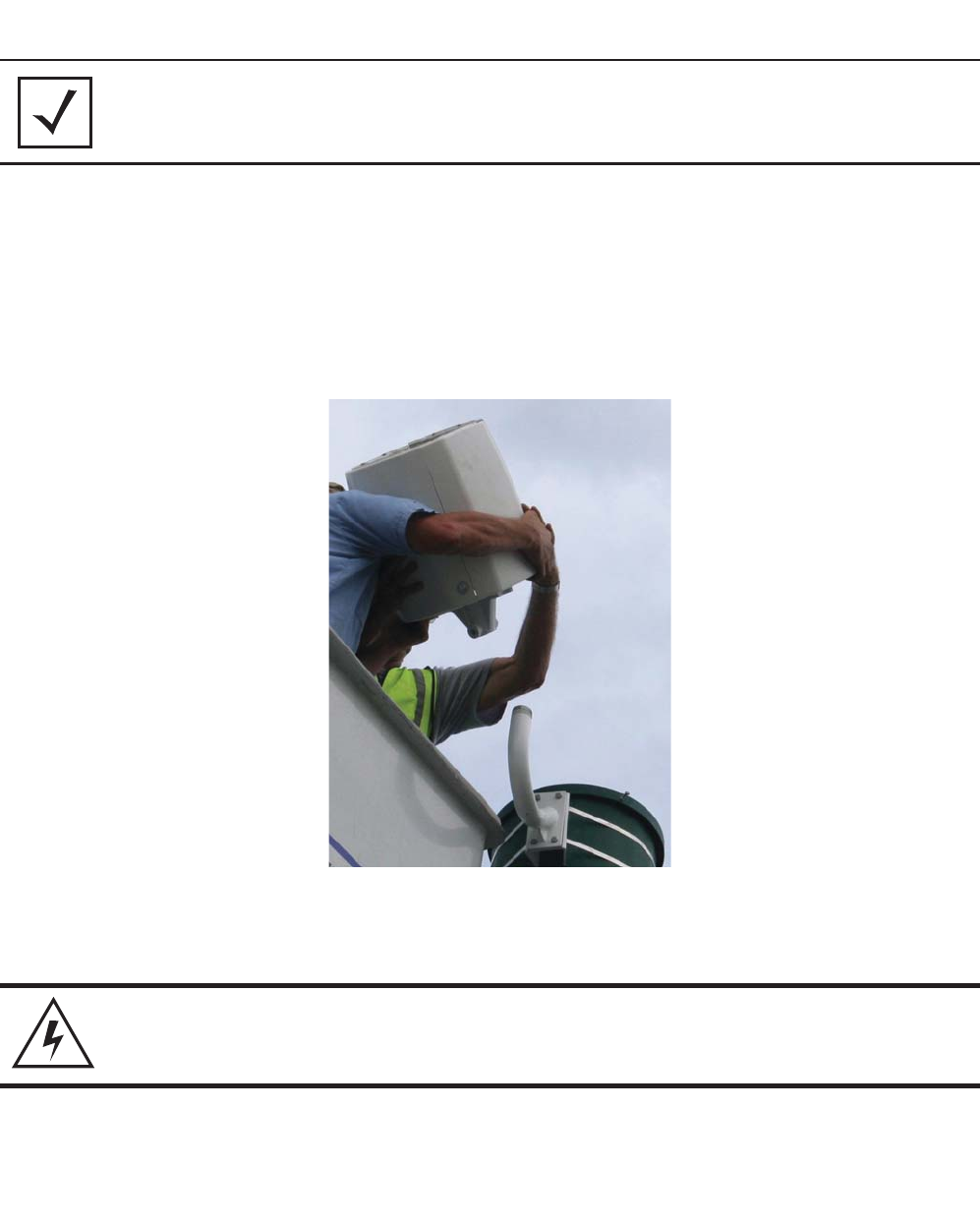
AP 7181 Access Point: Installation Guide
26
3. Carefully remove the unit from the shipping carton.
4. Place on a solid surface with the Yoke facing up.
5. Carefully lift device and align the Yoke with the Gooseneck. In the picture below
two professional installers in a bucket truck are lifting the unit onto the Gooseneck.
NOTE Apply lithium grease to the threads of the Gooseneck. This will
help prevent corrosion from occurring and facilitate removal of
the Yoke if the unit needs to be serviced.
WARNING! An AP 7181 weighs 39 pounds. Use all appropriate cautions
when lifting and consider a two man lift when necessary.
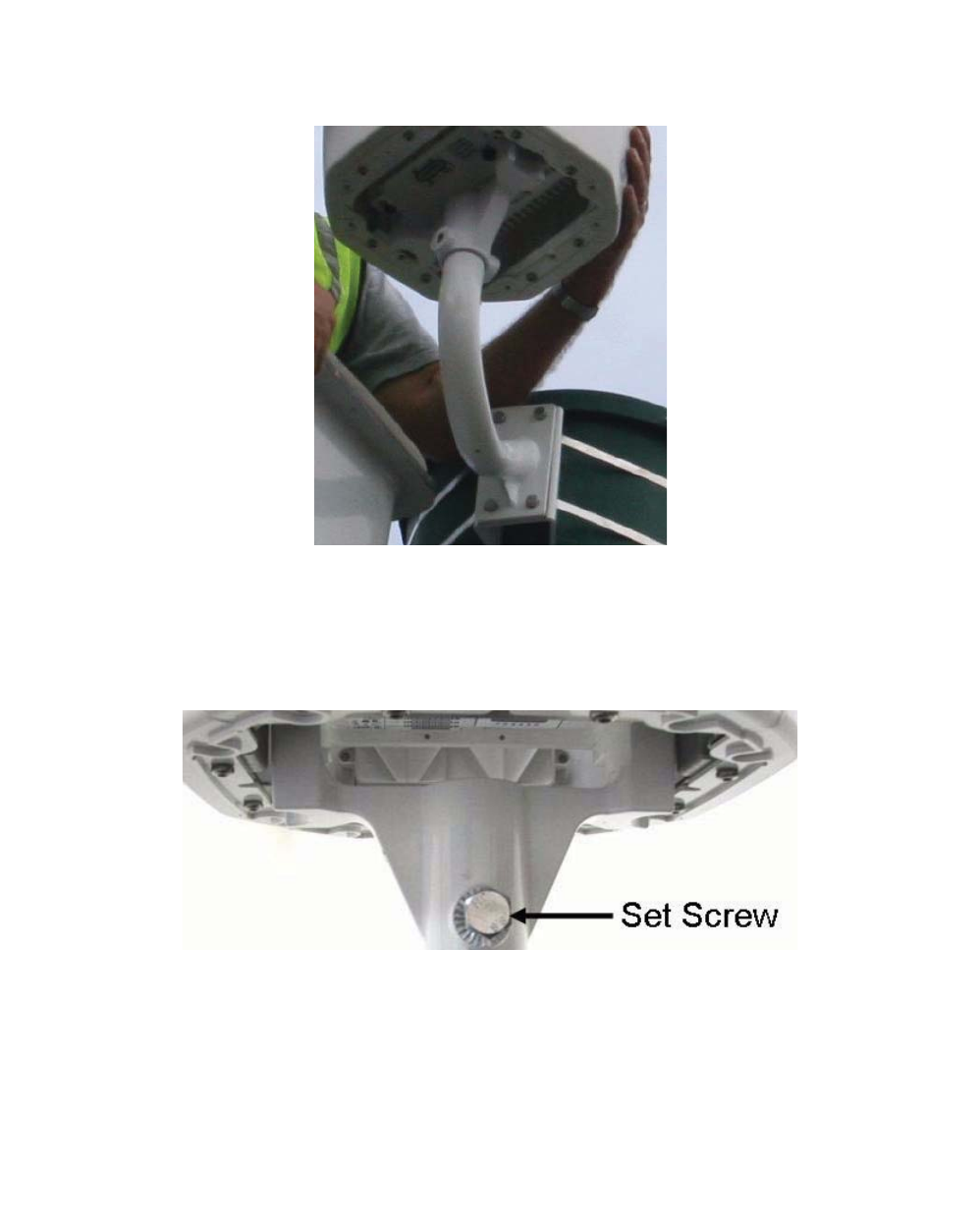
Hardware Installation 27
6. Attach the Yoke to the Gooseneck by rotating the device clockwise for a minimum
of four turns. Ensure that the device is level.
7. The two set screws can now be inserted to increase stability. Tighten the set screws
to between 214.2 and 250.0 inch pounds (lbf-in).
8. If the AP 7181 you are mounting is a Mesh Point Root node or a Mesh Point node
with an external device (e.g. surveillance camera) perform the required Ethernet
cabling.
The Ethernet cable gland is optimized for cables of diameter .39 to .55 inches. Smaller
diameter cables can achieve a watertight seal if the cable gland is properly tightened during
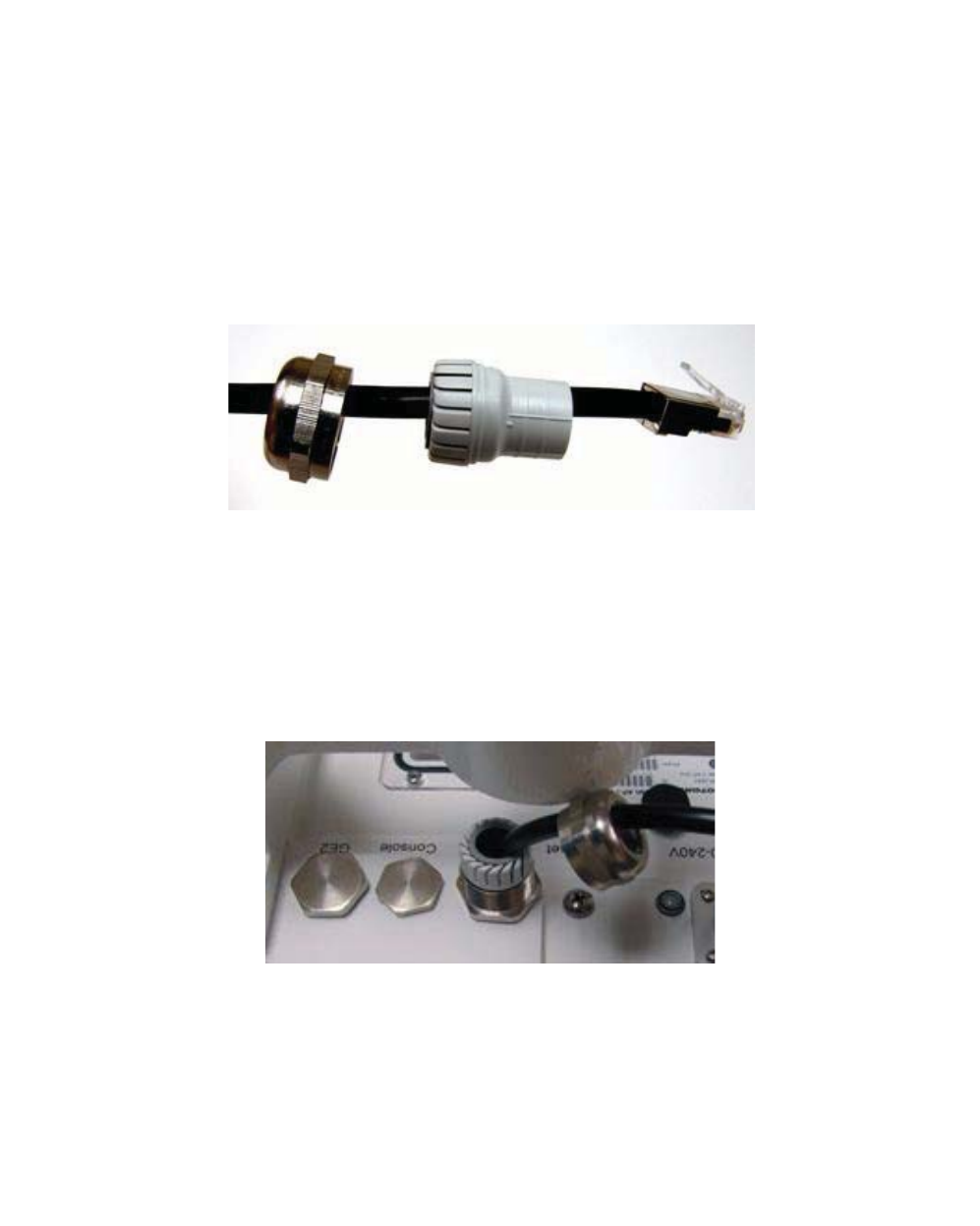
AP 7181 Access Point: Installation Guide
28
installation. It is recommended that an Outdoor- UV Rated, shielded cable is used in AP
7181 deployments. Some examples are:
• Superior Essex 04-001-55
• Best-Tronics BT-0562
In most cases Ethernet cable will need to be custom cut to length. After preparing the
Ethernet cable and attaching shielded RJ-45 end connectors feed the cable through the cable
gland cap and rubber insert as shown below.
9. Insert data cable through cable gland (i.e. the cable gland on Gigabit Ethernet port
GE1)
a. Connect the RJ45 Ethernet cable to the Ethernet port.
b. Hand tighten the cap for the cable gland.
.
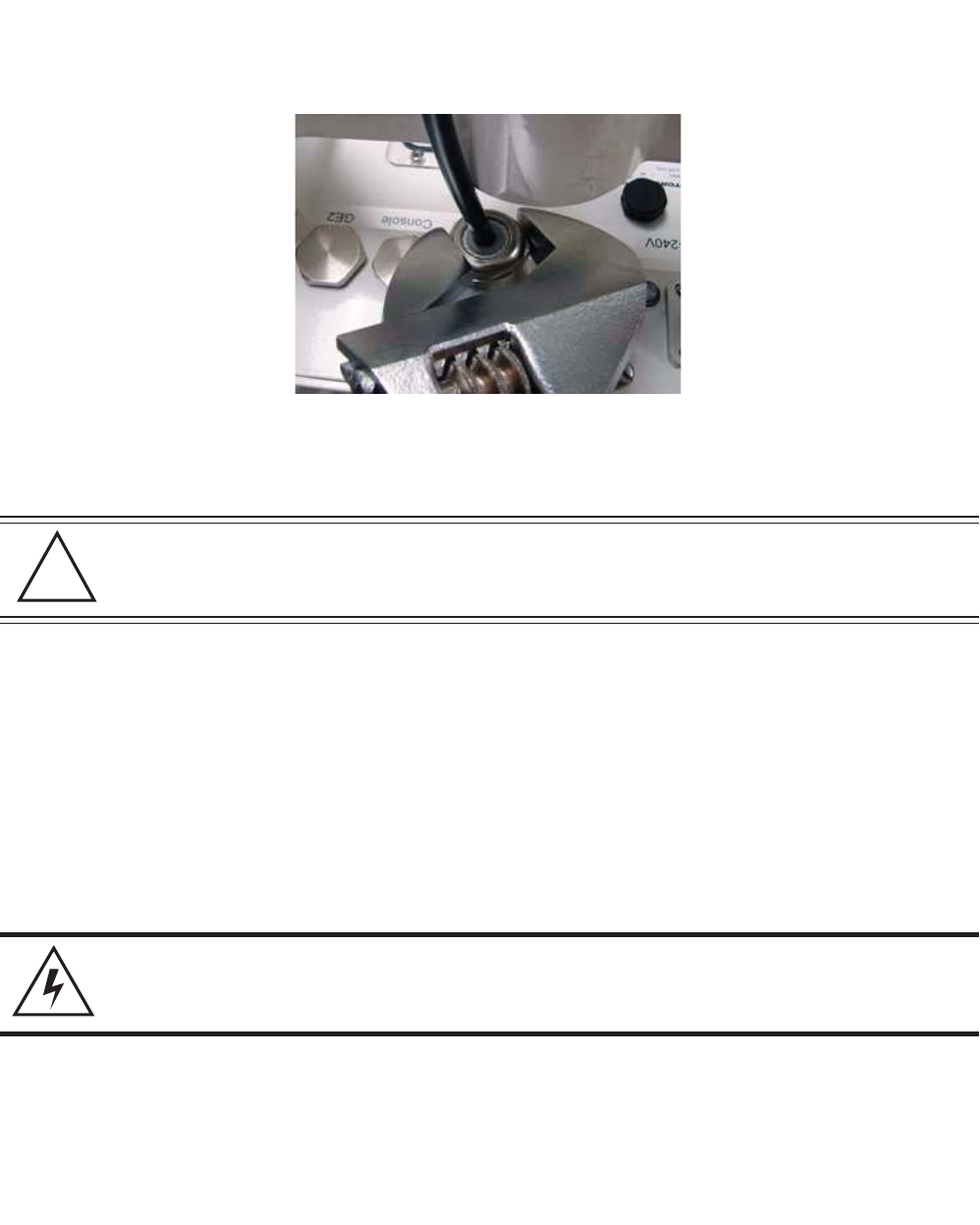
Hardware Installation 29
c. Using an adjustable wrench, tighten the cable grip until it fits snugly around the
Ethernet cable.
d. Repeat the process for additional Ethernet connections if required.
• Only trained and qualified personnel should install this equipment.
• Only a licensed electrician should install power cable / energize circuits.
• All device wiring must follow the National Electric Code (NEC) or wiring
requirements in the country of installation. All location building and structure
codes must be observed.
• Ensure that the power source for the AP 7181 is de-energized prior to installation.
• Avoid exposure to high voltage power sources.
• Avoid contact with overhead power lines.
• Avoid falling tools or equipment.
• Be aware of vehicular traffic in the vicinity of the work area.
CAUTION Observe the following precautions to avoid damage to the unit
during installation.
WARNING! Observe the following safety precautions to avoid personal
injury during installation.
!
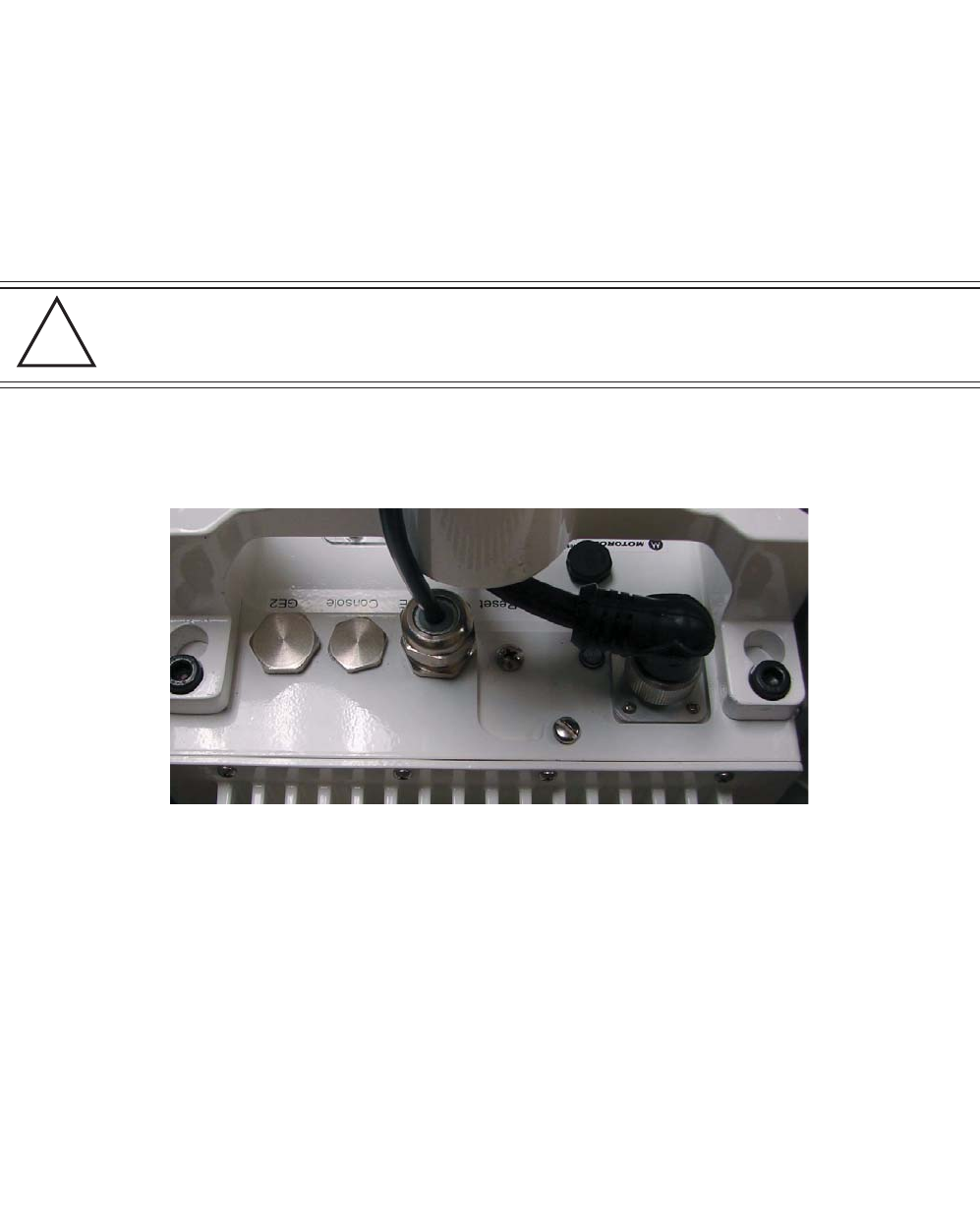
AP 7181 Access Point: Installation Guide
30
The power cable included with the AP 7181 is a flying lead cable. Most installations will
require the installer to install an additional power cable.
The AP 7181 flying lead power cables are 12 feet long. The installer should splice the
power cable to the AP 7181 flying lead cable in accordance to the National Electric Code
(NEC) or wiring requirements in the country of operation. Only outdoor rated power cable
should be used.
10. Once the power cable has been prepared, connect the power cable to the unit.
CAUTION AC versions of the AP 7181 require an input voltage of 100 -
240 VAC. DC versions require an input voltage of 41-58 VDC.
!
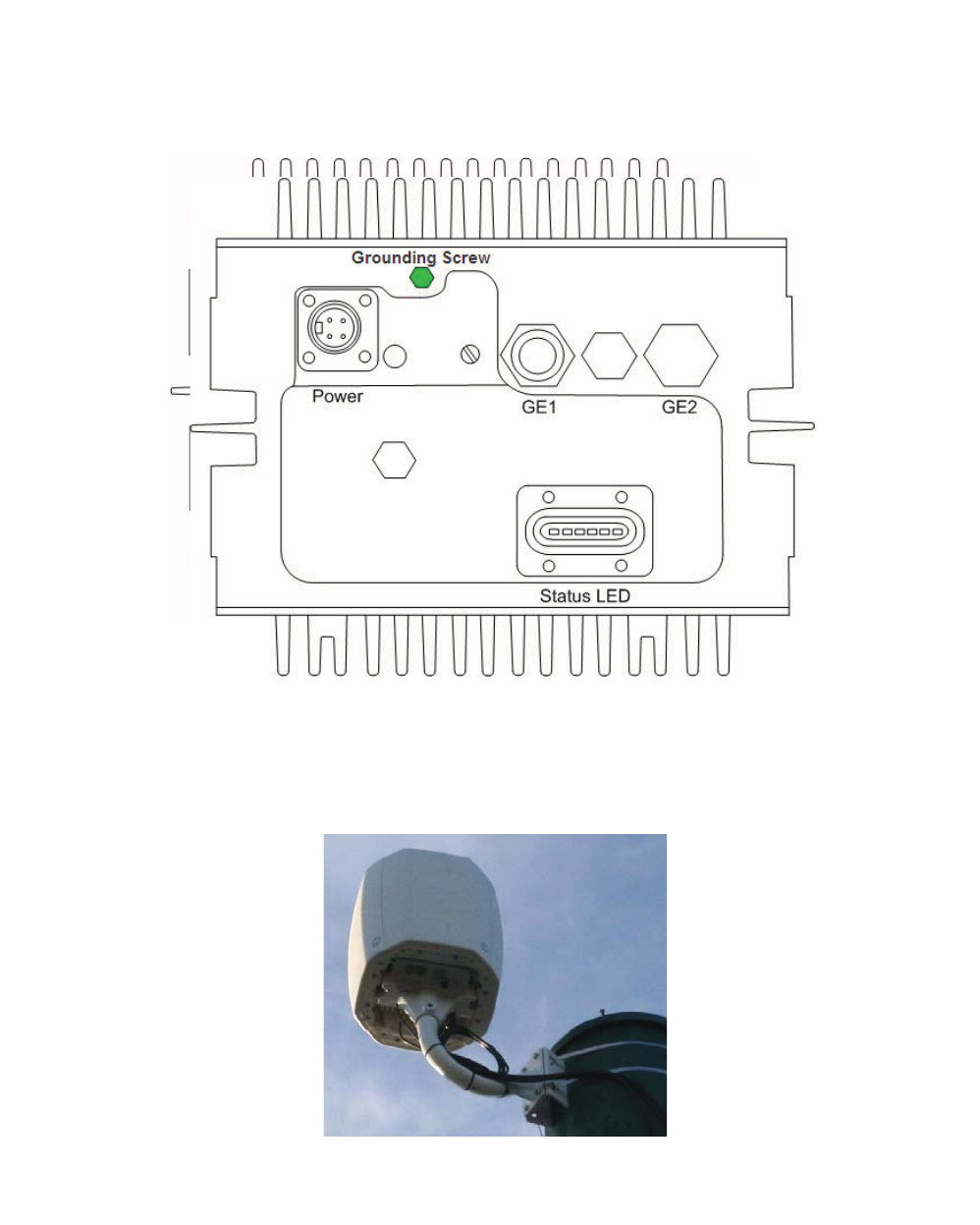
Hardware Installation 31
11. The unit must be grounded according to the Motorola R56 2005 Manual for
Standards and Guidelines for Communication Sites. The grounding screw is shown
below in green.
12. Secure and conceal the cables using UV resistant tie wraps. Tie wraps should be
used to secure the cables along the Gooseneck.
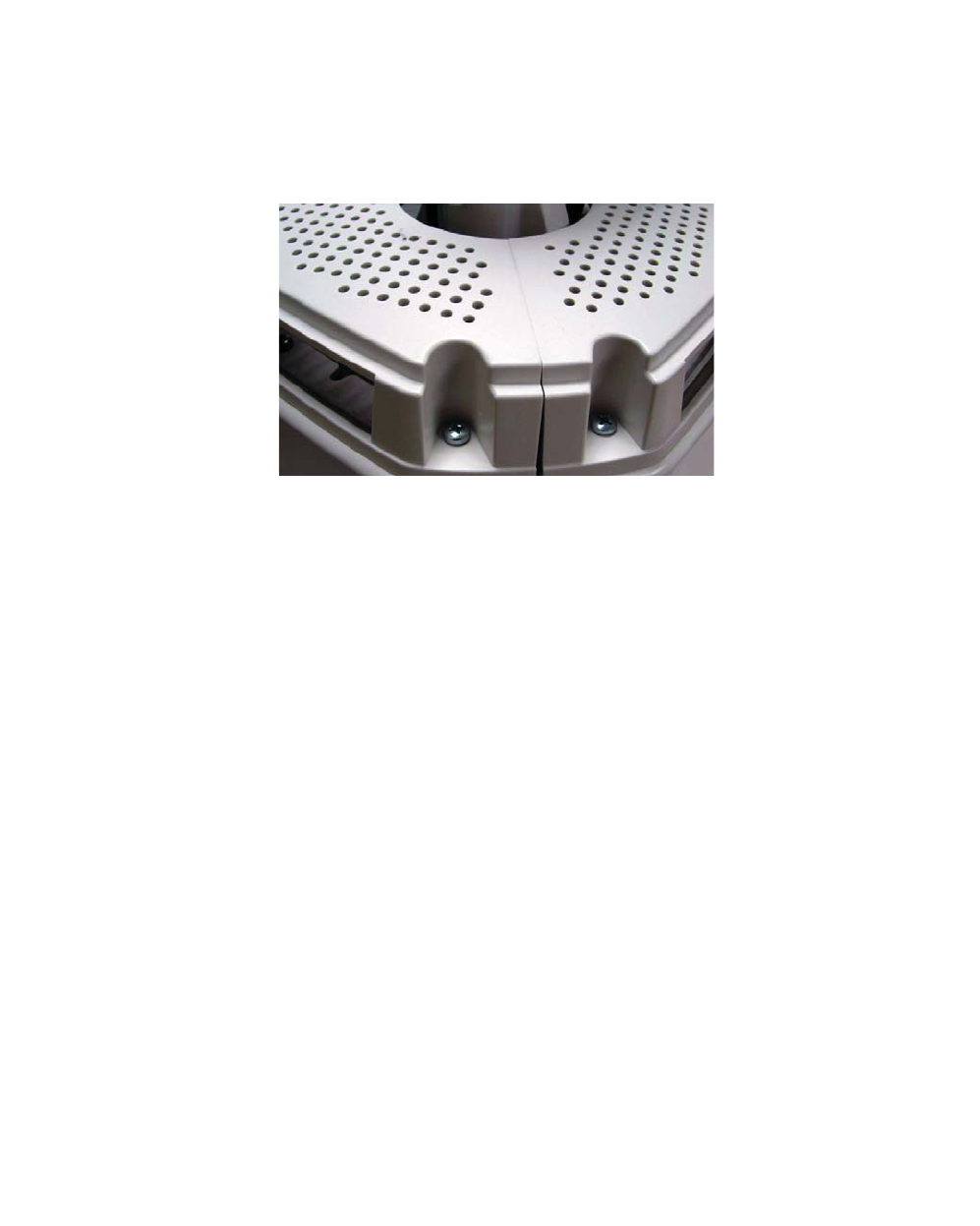
AP 7181 Access Point: Installation Guide
32
13. If desired, attach the sun shields to the top/bottom using the captive screws. If
attaching the sun shields to the bottom of the unit, first remove the knock out discs
in the center to fit around the Yoke. Tighten the captive screws to between 39.9 and
53.1 inch pounds (lbf-in).
14. Once physical installation is completed the circuit powering the AP 7181 can be
energized. Verify that the green power LED is lit and the unit is powered on.
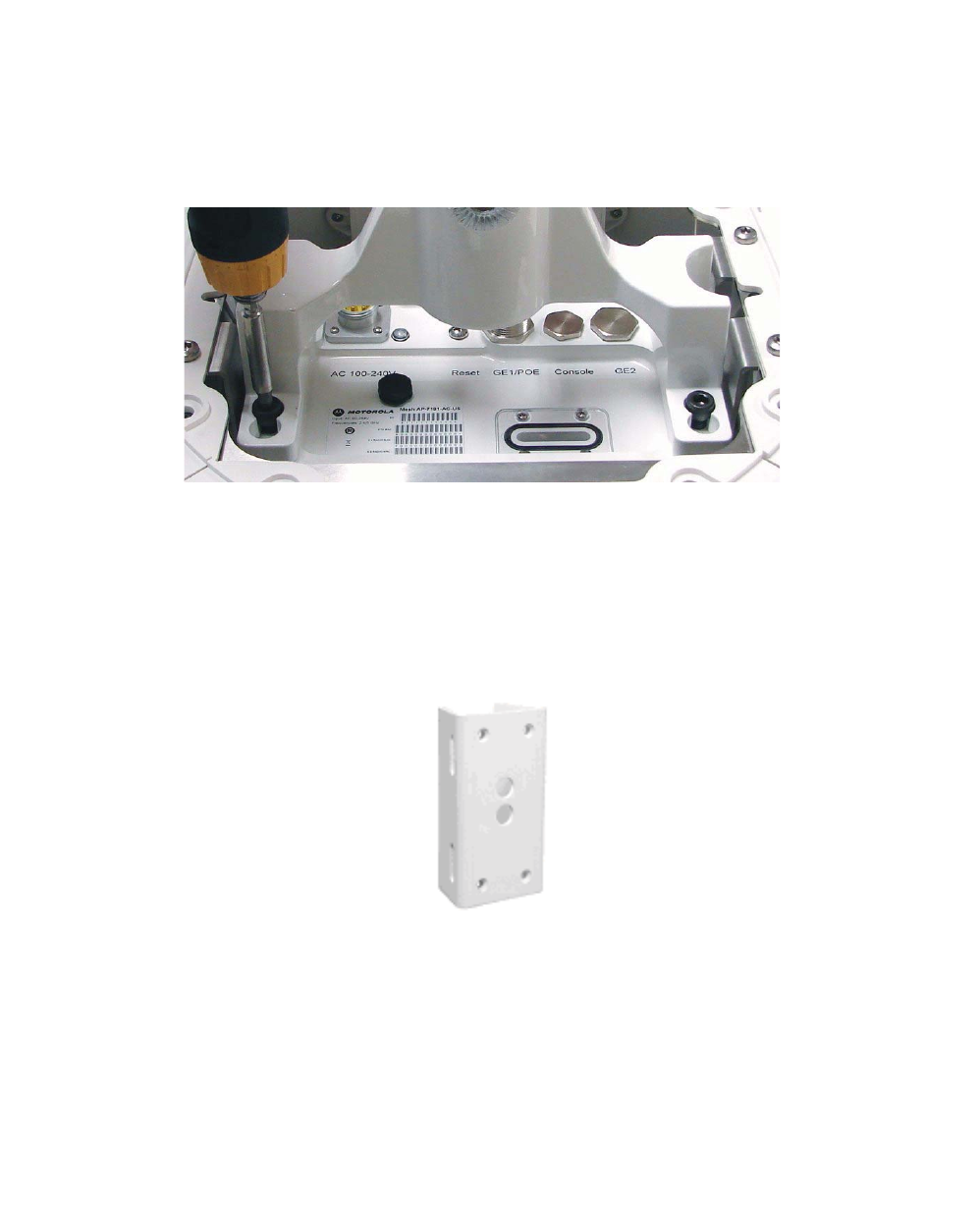
Hardware Installation 33
2.12.2 Top Mount Installation
1. Carefully remove the unit from the shipping carton.
2. Place on a solid surface with the Yoke facing up.
3. Remove the Yoke and the Allen socket head screws from the bottom of the unit.
The pole mount adapter (Part Number RLN6197A) will accommodate a banding strap up
to 1¼ inch width. Banding straps and the banding tool are not included when ordering the
pole mount adapter.
The pole mount adapter can be mounted to poles from 3 inches to 15 inches in diameter and
has a load rating of 75 lbs.
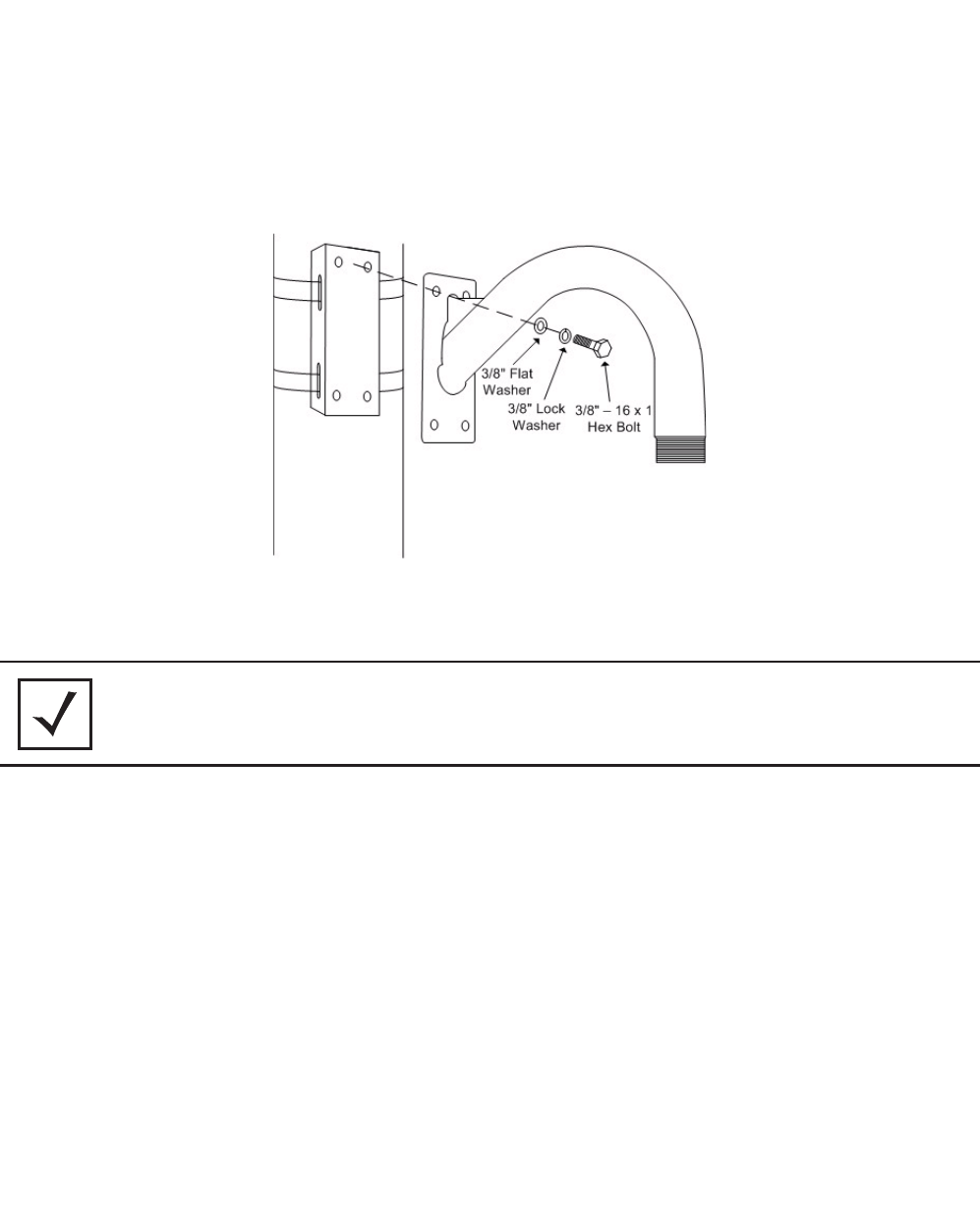
AP 7181 Access Point: Installation Guide
34
4. Attach the pole mount adapter (or other mounting bracket hardware) to the
mounting asset and ensure that the mounting bracket is level.
5. Using the 4 hex head bolts (3/8"x16"x1") included with pole mount adapter (Part
Number RLN6197A), secure the Gooseneck to the pole mount adapter.
NOTE Apply lithium grease to the threads of the Gooseneck. This will
help prevent corrosion from occurring and facilitate removal of
the Yoke if the unit needs to be serviced.
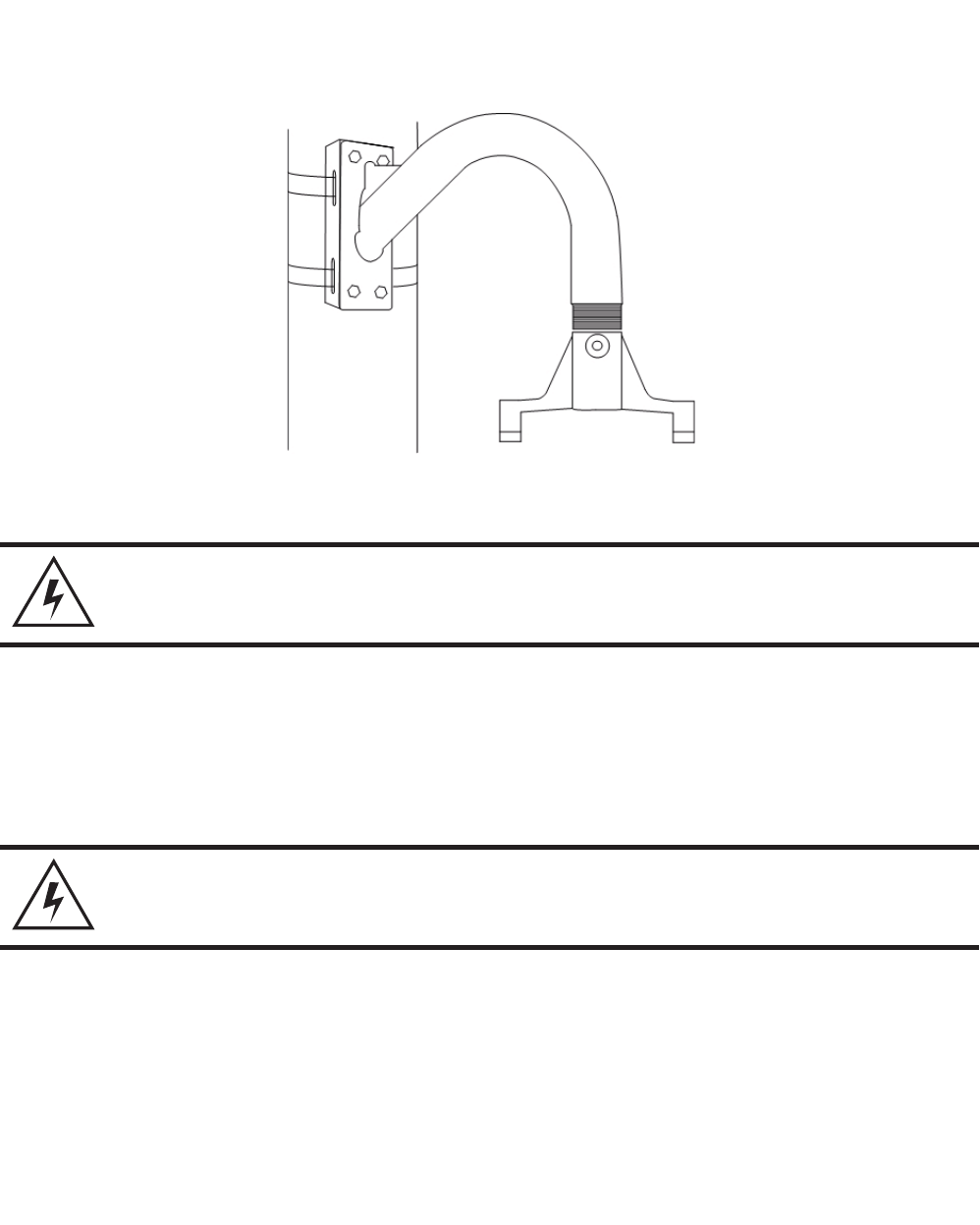
Hardware Installation 35
6. Attach the Yoke to the Gooseneck by rotating the device counter clockwise for a
minimum of four turns.
7. Ensure that the Yoke and the Mounting Bracket are level.
8. Loosely attach the Allen socket head screws to the top of the unit. Leave the screws
loose enough to attach the Yoke.
WARNING! Carefully align the Yoke with the Mounting Bracket to avoid
cross threading.
WARNING! An AP 7181 weighs 39 pounds. Use all appropriate cautions
when lifting and consider a two man lift when necessary.
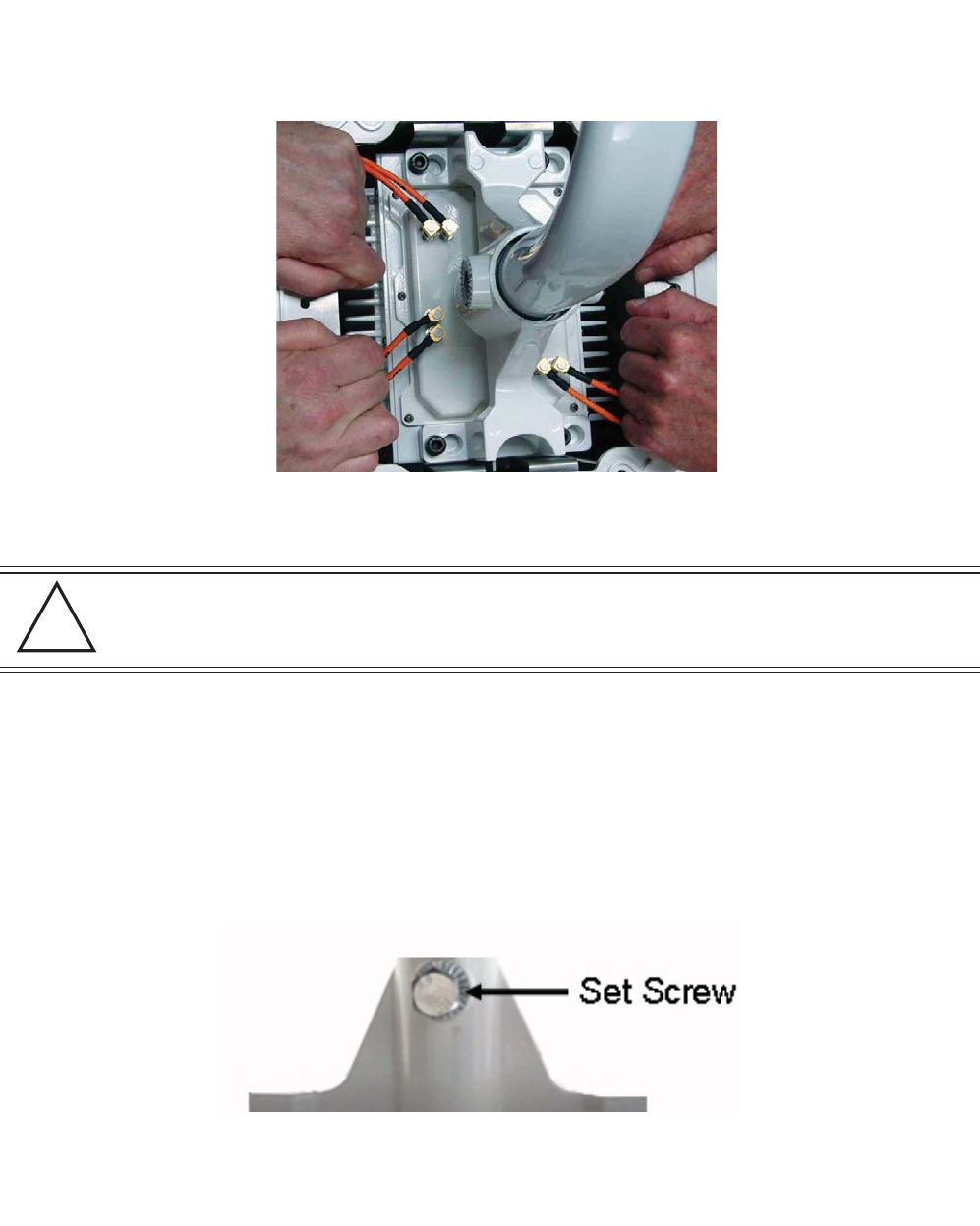
AP 7181 Access Point: Installation Guide
36
9. Carefully lift the unit into position, aligning the key slots for the Yoke with the
Allen socket head screws and slide the Yoke to the final position.
10. Torque the Allen socket head screws to between 108.7 and 145.0 Inch Pounds (lbf-
in).
11. The Set Screws can now be inserted to increase stability. Using a 21mm socket with
torque wrench, tighten the Set Screws to between 214.2 and 250.0 Inch Pounds
(lbf-in).
CAUTION Ensure that the Allen socket hex screws are tight and in the
locked position before releasing the full weight of the unit.
!
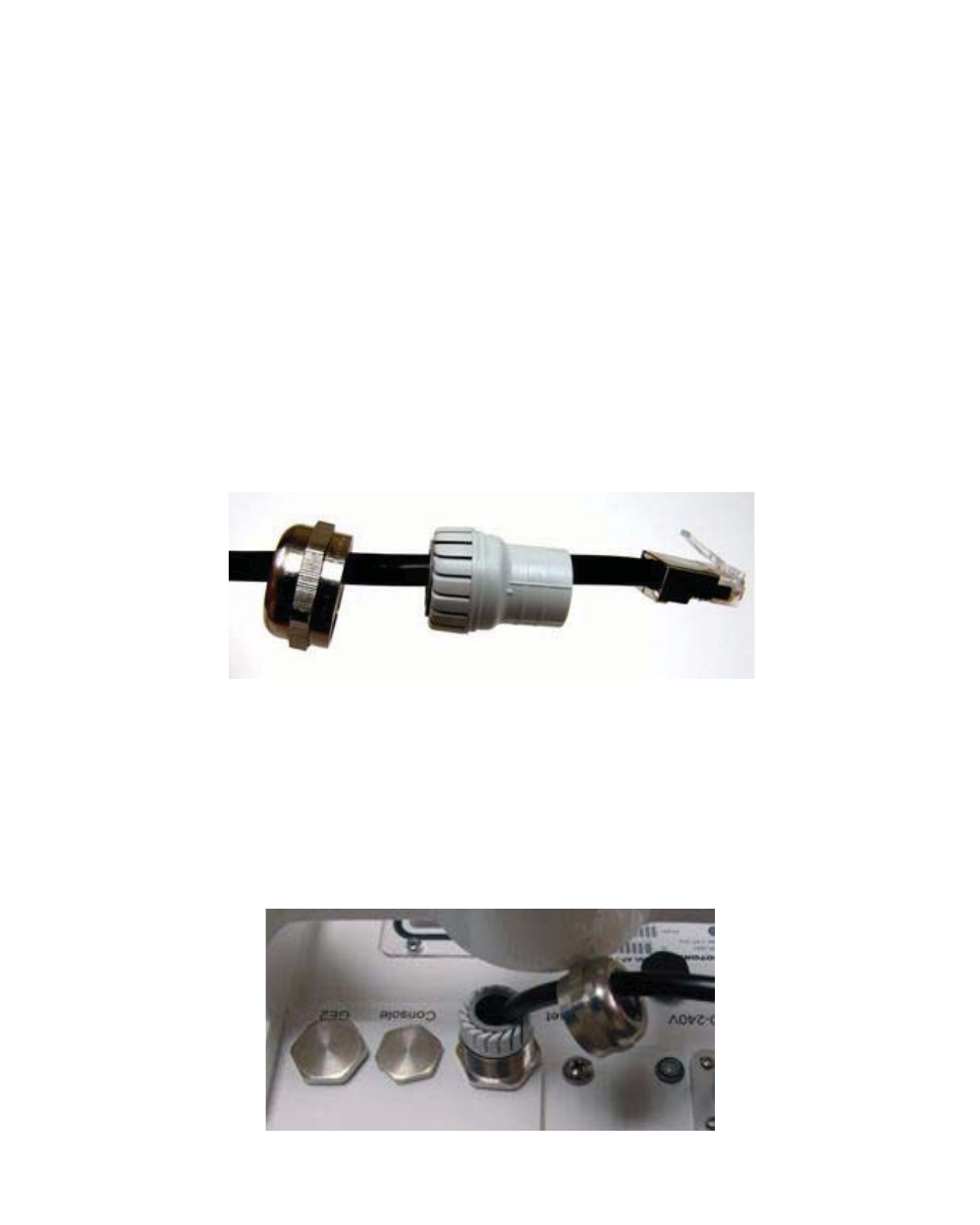
Hardware Installation 37
12. If the AP 7181 you are mounting is a Mesh Point Root node or a Mesh Point node
with an external device (e.g. surveillance camera) perform the required Ethernet
cabling.
The Ethernet cable gland is optimized for cables of diameter .39 to .55 inches. Smaller
diameter cables can achieve a watertight seal if the cable gland is properly tightened during
installation. It is recommended that an Outdoor- UV Rated, shielded cable is used in AP
7181 deployments. Some examples are:
• Superior Essex 04-001-55
• Best-Tronics BT-0562
In most cases Ethernet cable will need to be custom cut to length. After preparing the
Ethernet cable and attaching shielded RJ-45 end connectors feed the cable through the cable
gland cap and rubber insert as shown below.
13. Insert the data cable through cable gland (i.e. the cable gland on Gigabit Ethernet
port GE1)
a. Connect the RJ45 Ethernet cable to the Ethernet port.
b. Hand tighten the cap for the cable gland.
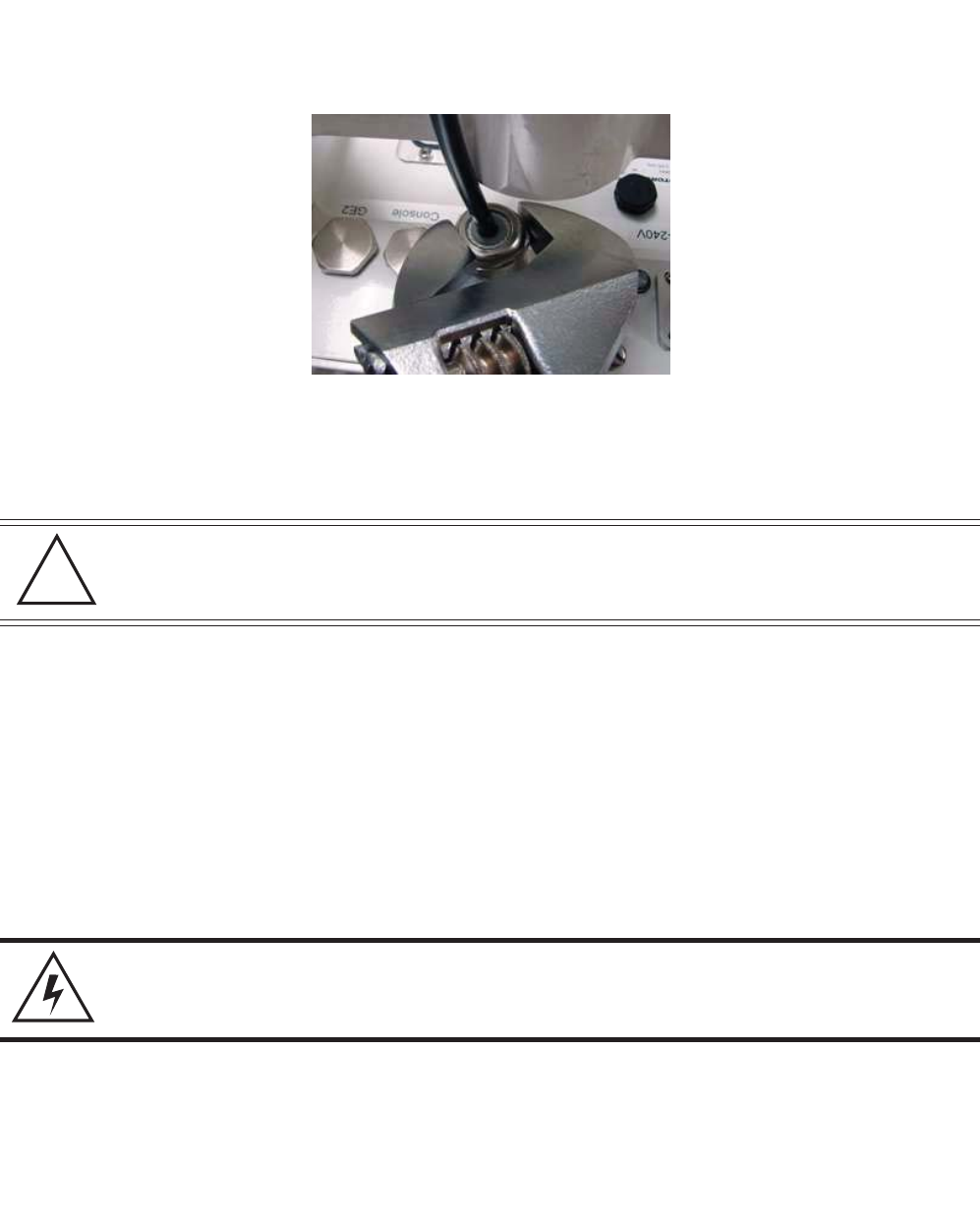
AP 7181 Access Point: Installation Guide
38
c. Using an adjustable wrench, tighten the cable grip until it fits snugly around the
Ethernet cable.
d. Repeat the process for additional Ethernet connections if required.
• Only trained and qualified personnel should install this equipment.
• Only a licensed electrician should install power cable / energize circuits.
• All device wiring must follow the National Electric Code (NEC) or wiring
requirements in the country of installation. All location building and structure
codes must be observed.
• Ensure that the power source for the AP 7181 is de-energized prior to installation.
• Avoid exposure to high voltage power sources.
• Avoid contact with overhead power lines.
• Avoid falling tools or equipment.
• Be aware of vehicular traffic in the vicinity of the work area.
CAUTION Observe the following precautions to avoid damage to the unit
during installation.
WARNING! Observe the following safety precautions to avoid personal
injury during installation.
!
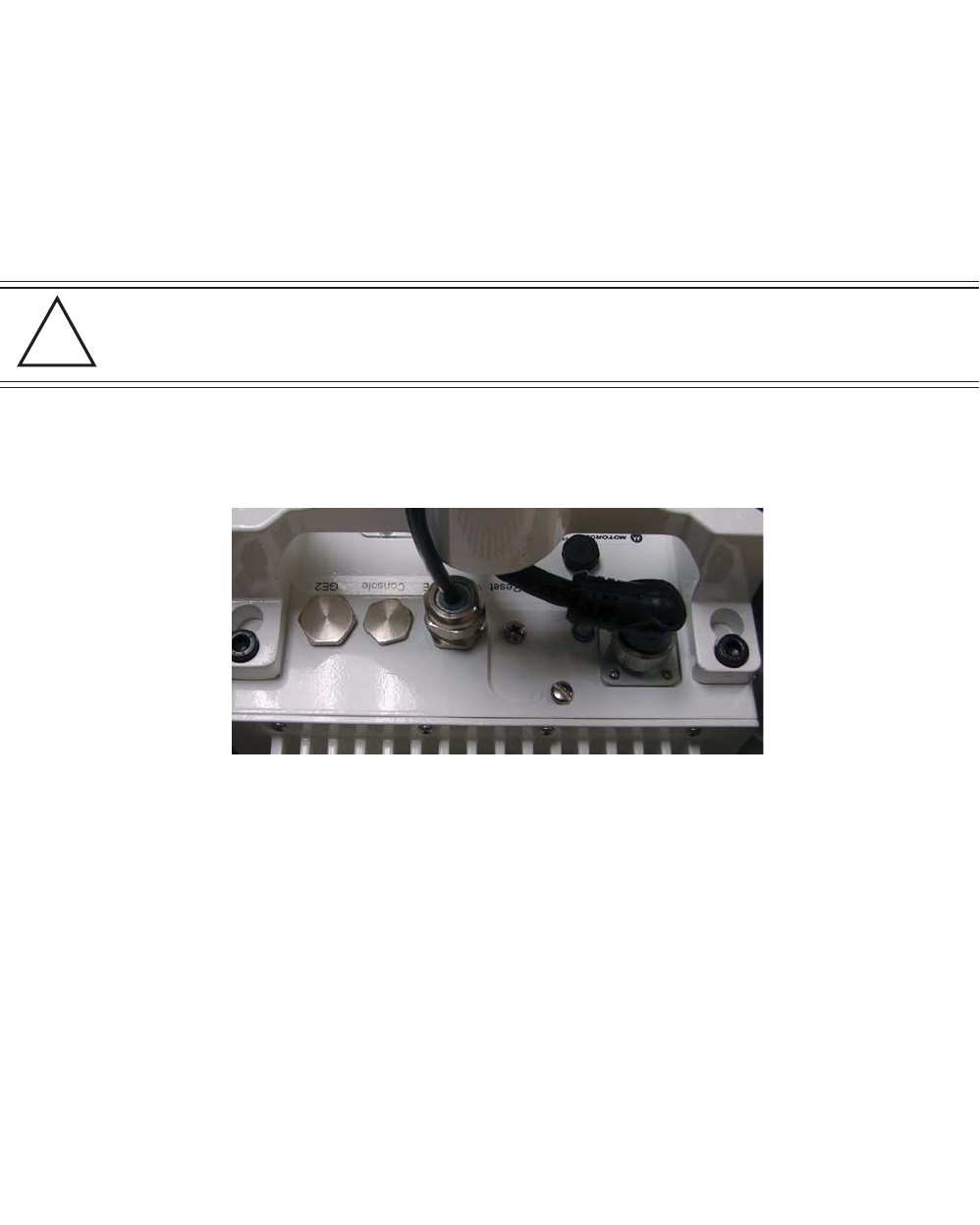
Hardware Installation 39
The power cable included with the AP 7181 is a flying lead cable. Most installations will
require the installer to install an additional power cable.
The AP 7181 flying lead power cables are 12 feet long. The installer should splice the
power cable to the AP 7181 flying lead cable in accordance to the National Electric Code
(NEC) or wiring requirements in the country of operation. Only outdoor rated power cable
should be used.
14. Once the power cable has been prepared, connect the power cable to the unit.
CAUTION AC versions of the AP 7181 require an input voltage of 100-
240 VAC. DC versions require an input voltage of 41-58 VDC.
!
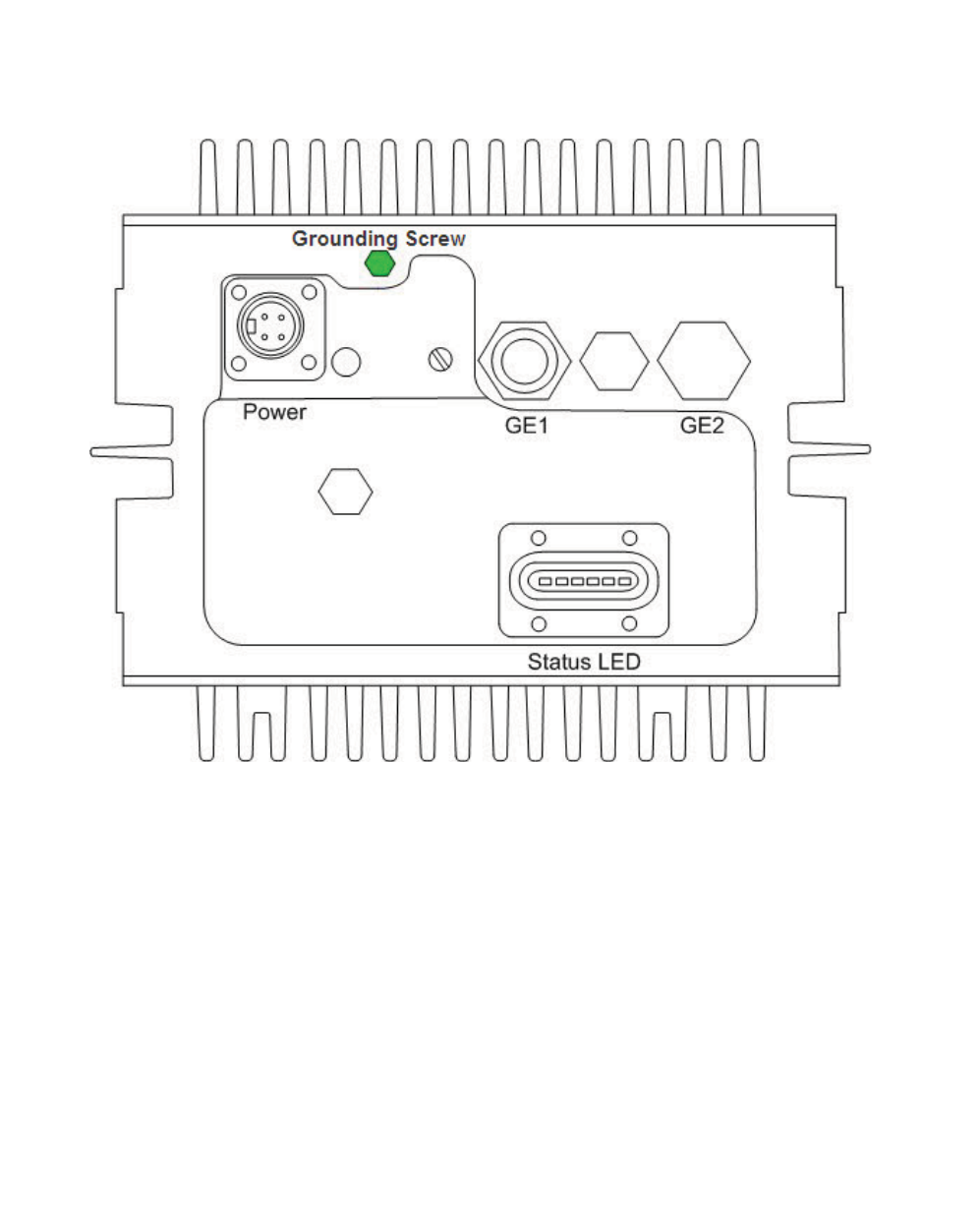
AP 7181 Access Point: Installation Guide
40
15. The unit must be grounded according to the Motorola R56 2005 Manual for
Standards and Guidelines for Communication Sites. The grounding screw is shown
below in green.
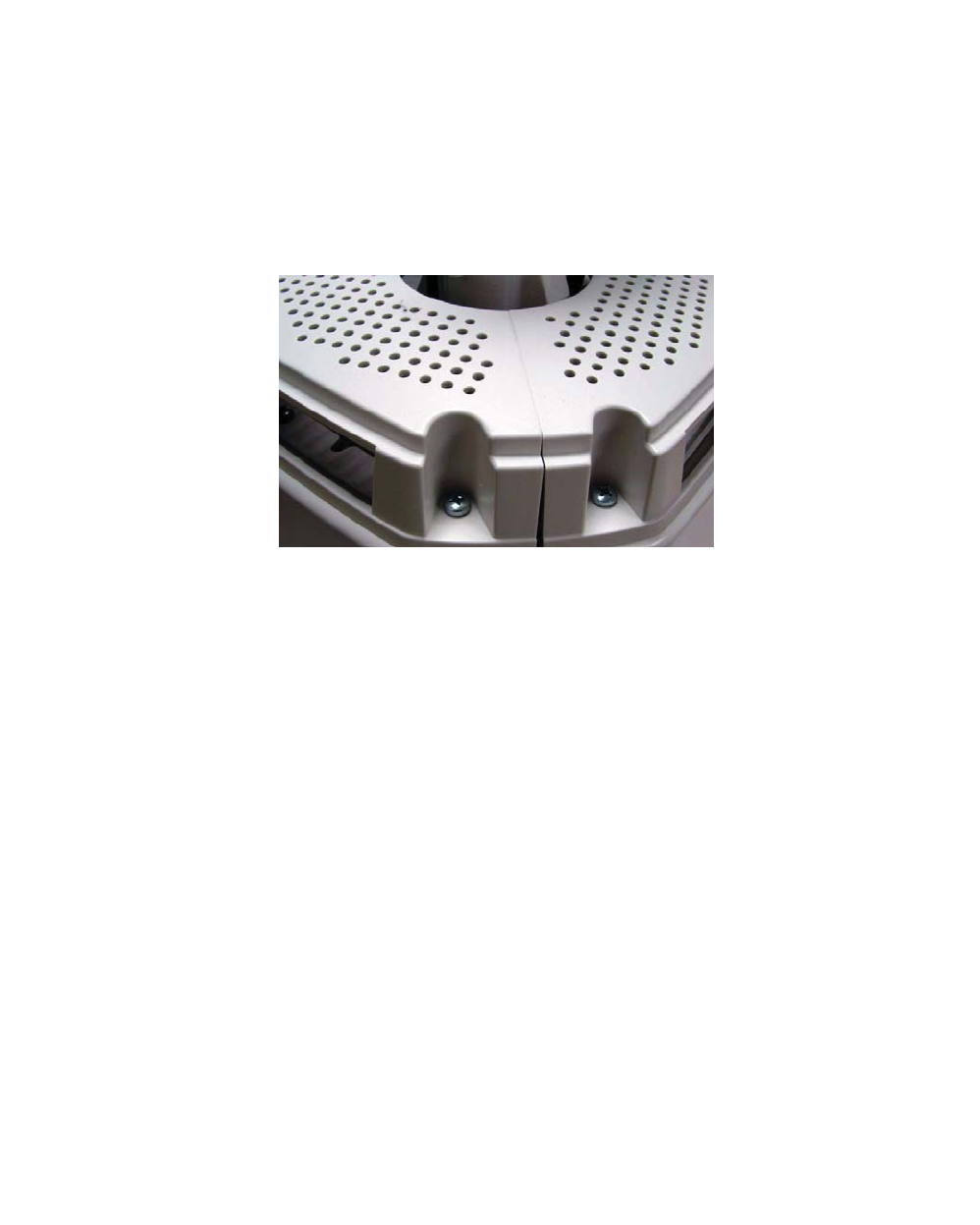
Hardware Installation 41
16. Secure and conceal the cables using UV resistant tie wraps. Tie wraps should also
be used to secure the cables along the Gooseneck.
17. If desired, attach the sun shields to the top/bottom using the captive screws. If
attaching the sun shields to the bottom of the unit, first remove the knock out discs
in the center to fit around the Yoke. Tighten the captive screws to between 39.9 and
53.1 inch pounds (lbf-in).
Once physical installation is completed the circuit powering the AP 7181 can be energized.
Verify that the green power LED is lit and the unit is powered on.
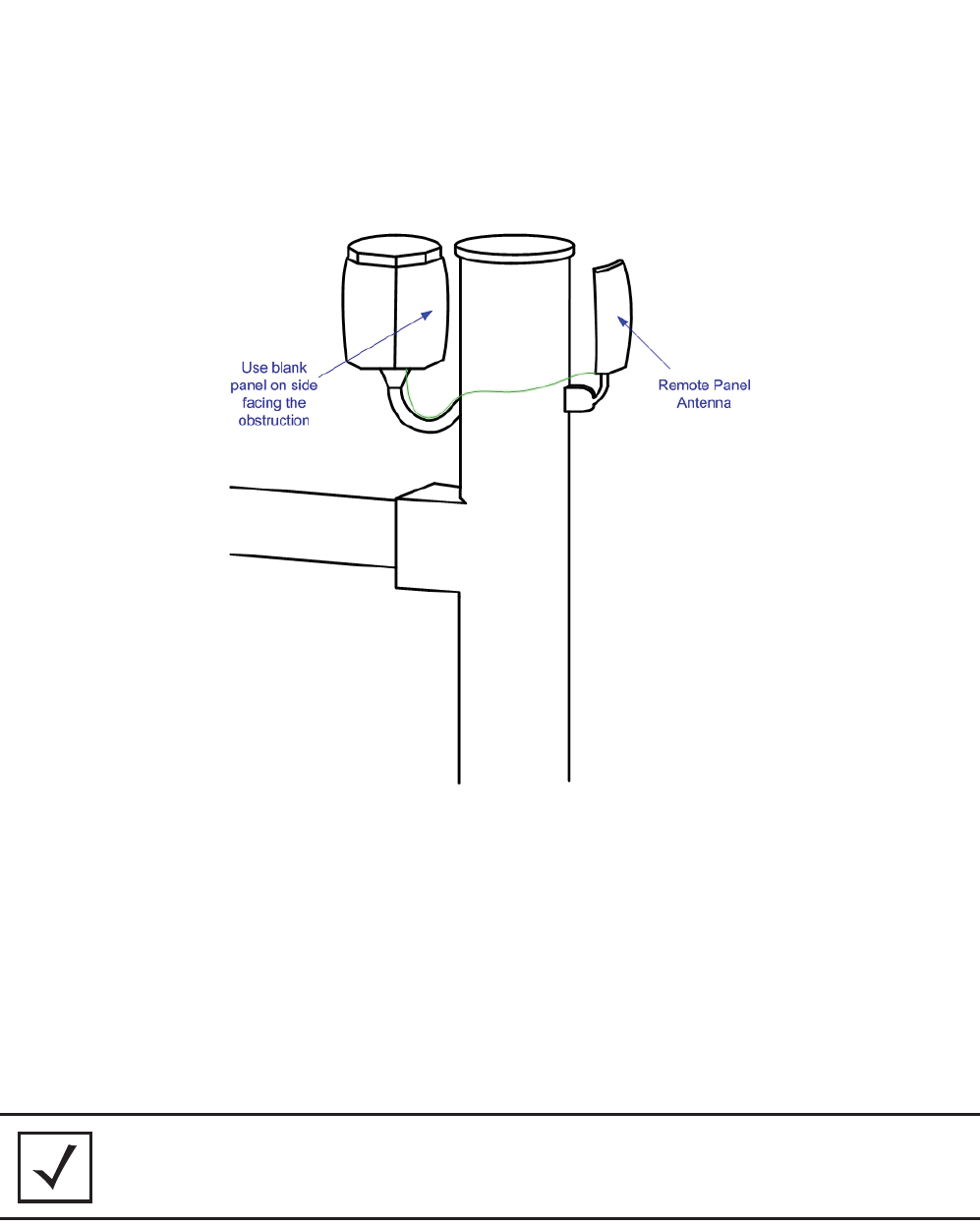
AP 7181 Access Point: Installation Guide
42
2.13 Remote Panel Antenna Installation
When choosing a deployment location to optimize performance, it may be necessary to
mount a device such that one of the antenna panels may be obstructed. For example, traffic
light poles can completely obscure one of the panels in the AP 7181 antenna array. The
Remote Panel antenna kit can be used to address this use case.
In addition to the standard hardware, the following items are also required for installing a
Remote Panel antenna:
• Antenna Extension Cables (6 or 10 feet)
• Canopy Subscriber Module (SM) Mounting Bracket
• Terminators for the Horizontal (HP) and Vertical (VP) antenna connections on the
top of the unit
NOTE In addtion to the required tools , you will need a cordless drill and
a 3.6 mm bit to predrill the hole for the set screw on the Canopy
SM Mounting Bracket.
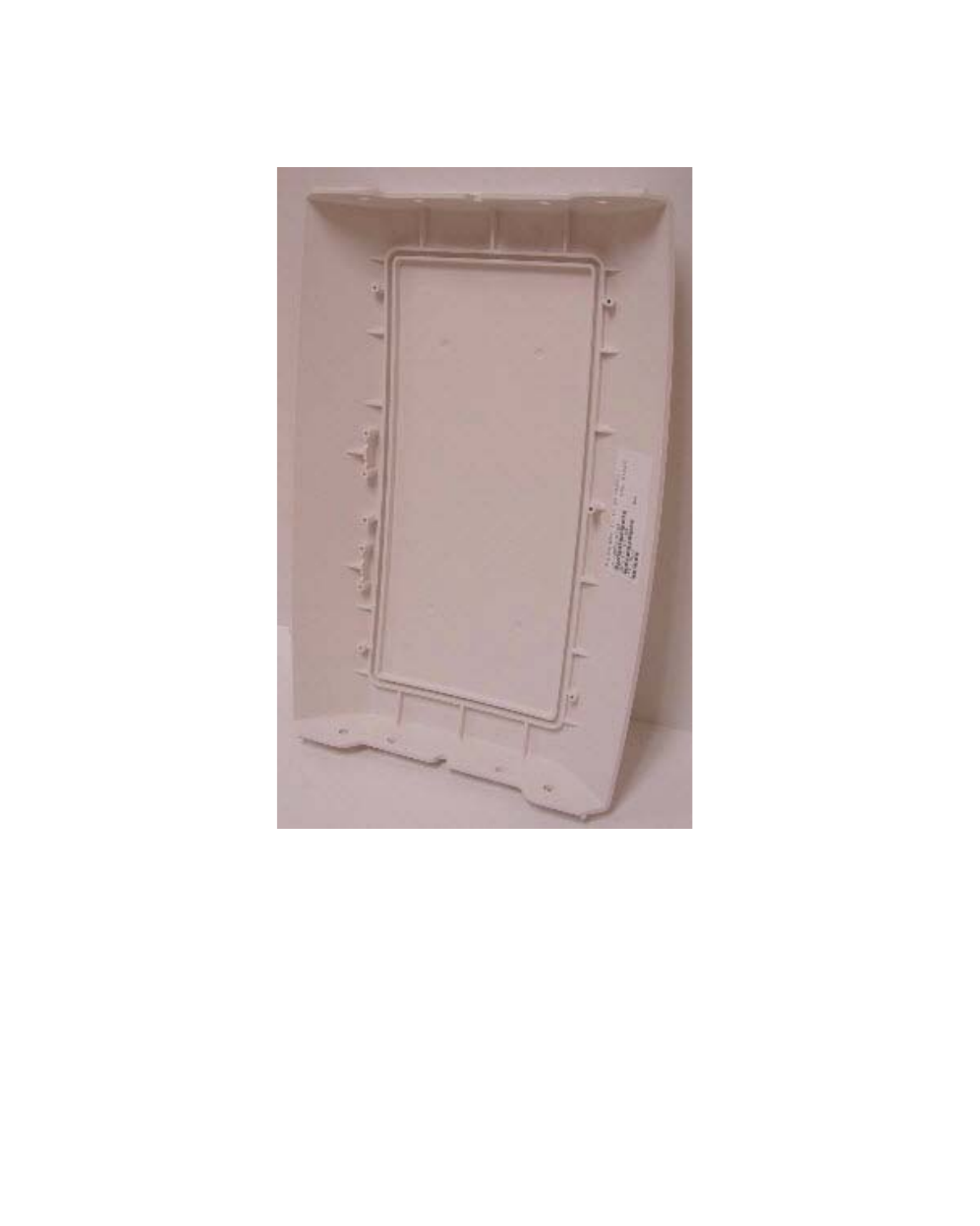
Hardware Installation 43
When the Remote Panel antenna installation is used, a Blank antenna panel should be
attached to cover the side of the device facing the obstruction. Using a Blank antenna panel
will help protect the interior of the AP 7181.
Blank antenna panels can also be used when a device is installed directly against a wall or
the side of a building. See Installing the Blank Antenna Panel.
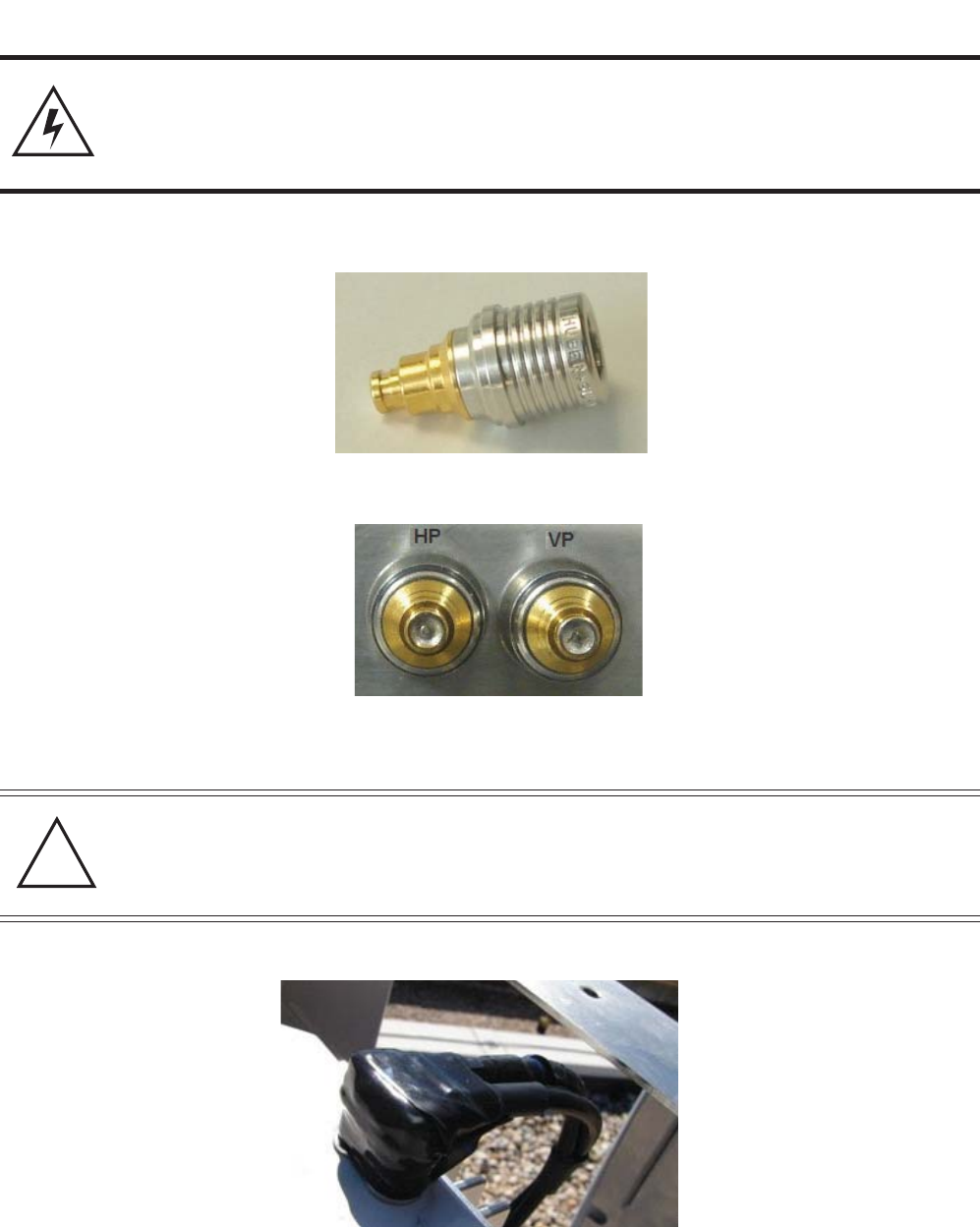
AP 7181 Access Point: Installation Guide
44
WARNING! When disconnecting the antenna cables from the unit or
removing an antenna panel and replacing it with a Blank panel,
terminators MUST be placed on the unused horizontal and
vertical connectors on the top of the unit.
CAUTION It is also recommended that the antenna cable connectors and
terminators on the horizontal and vertical connectors on the top
of the AP 7181 be wrapped with both mastic tape and electrical
tape.
!
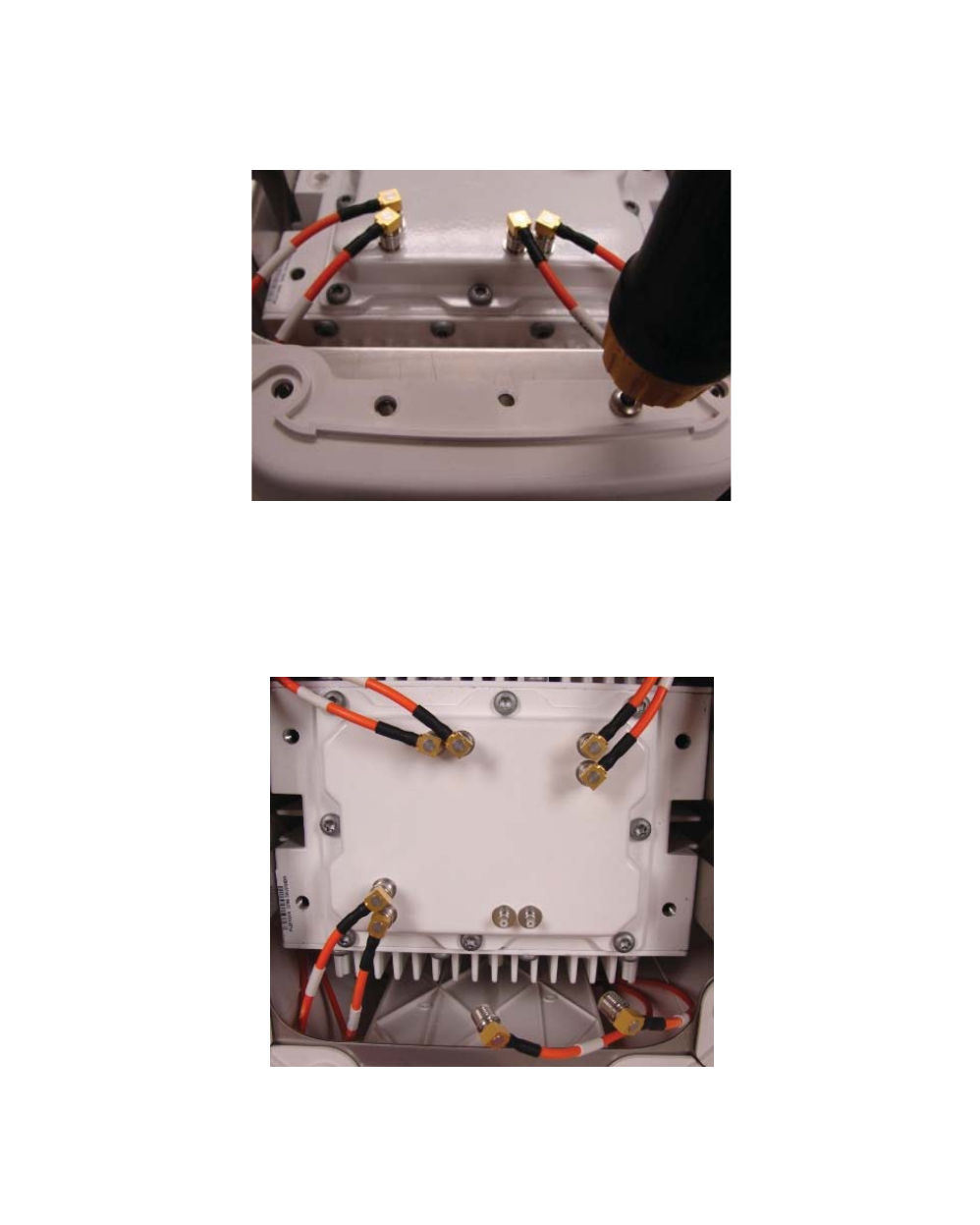
Hardware Installation 45
2.13.1 Preparing the AP 7181
To prepare the AP 7181 for installation using the Remote Panel antenna:
1. Remove the screws for one of the four Radome antenna panels.
2. Grasp the lower part (barrel) of the antenna cable connector and carefully detach
the antenna cables from the connectors on the device. Remove the Radome antenna
panel.
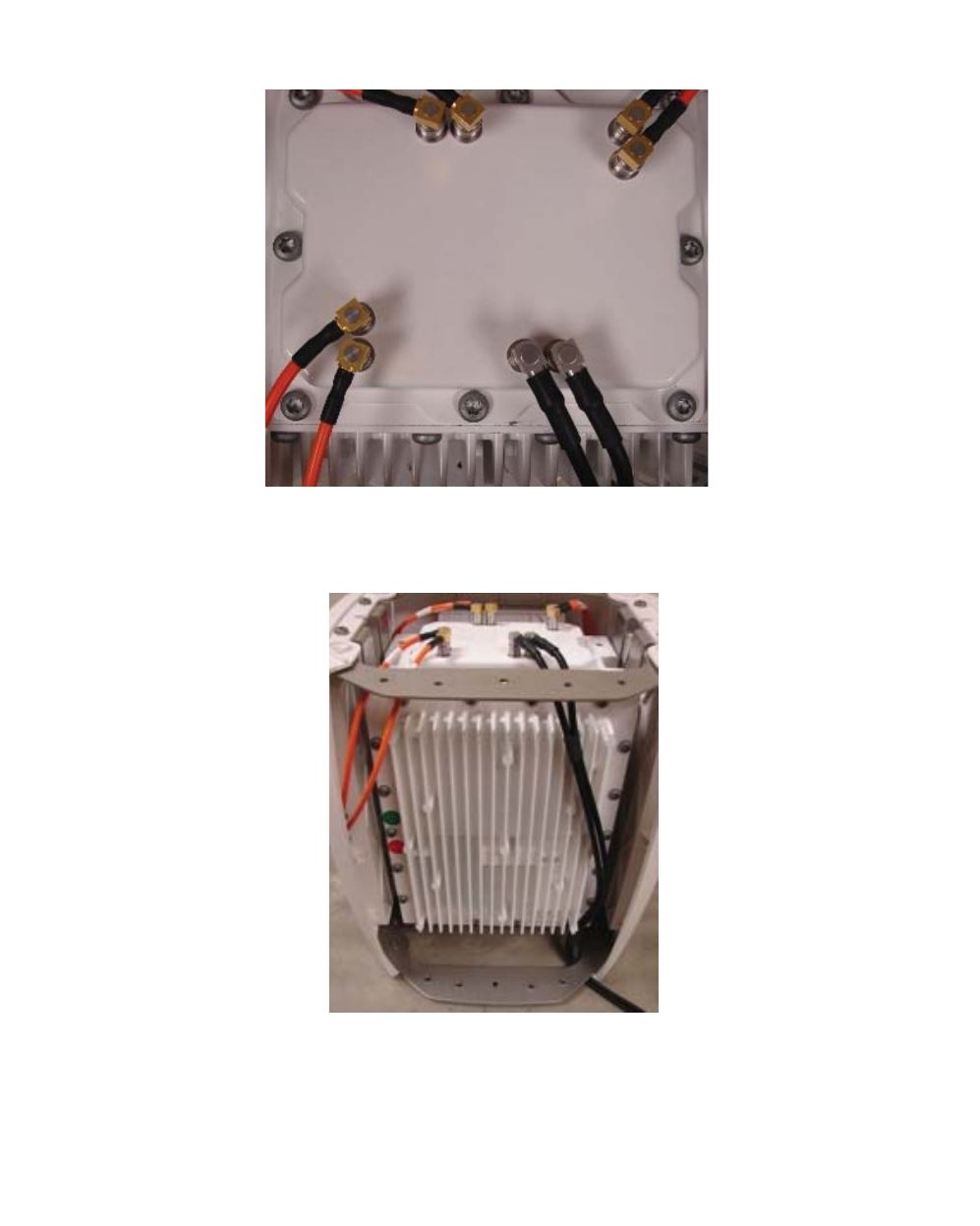
AP 7181 Access Point: Installation Guide
46
3. Attach the extension cable for the Remote Antenna panel to the device.
4. Carefully route the extension cable inside the antenna rings on the device.
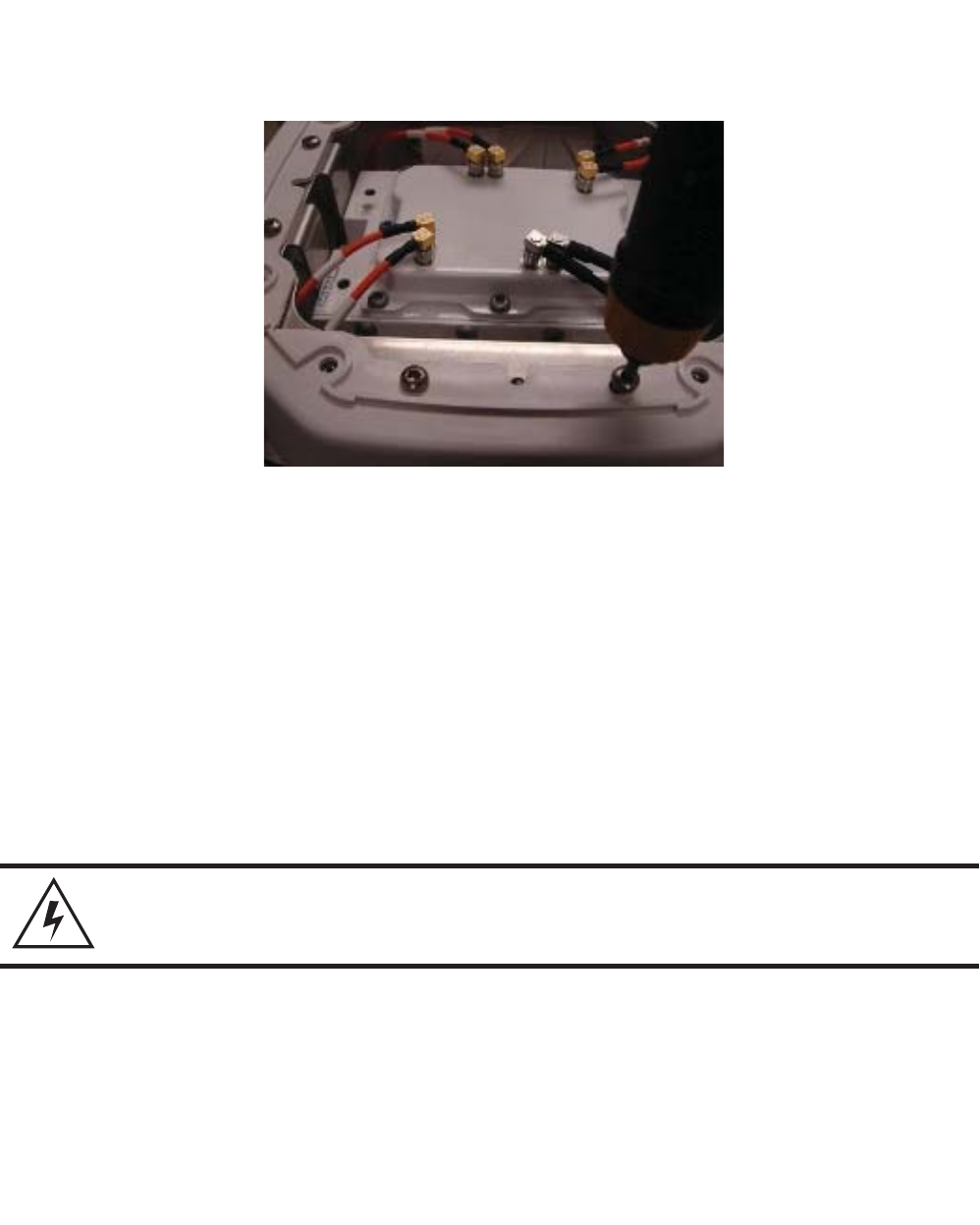
Hardware Installation 47
5. Using the four screws provided, attach a Blank antenna panel to the unit to cover
the side of the device where the functional antenna panel was removed.
6. Return the unit to the shipping carton for transportation to the installation site.
7. Collect the Radome panel that was removed from the unit and all other hardware
and tools required for the installation.
2.13.2 Installing the Remote Panel Antenna
To complete the installation of the Remote Panel antenna at the site:
1. At the installation site, install the AP 7181 using the appropriate Field Installation
procedure.
2. Assemble the Canopy SM Mounting Bracket using the instruction sheet supplied
with the hardware.
3. Test fit the Canopy SM Mounting Bracket at the installation site, positioning the
bracket so that when the Remote Panel antenna is attached, it will be oriented to
support line-of-sight communication with other devices.
WARNING! DO NOT apply power to the unit until the Remote Panel
installation procedure is complete.
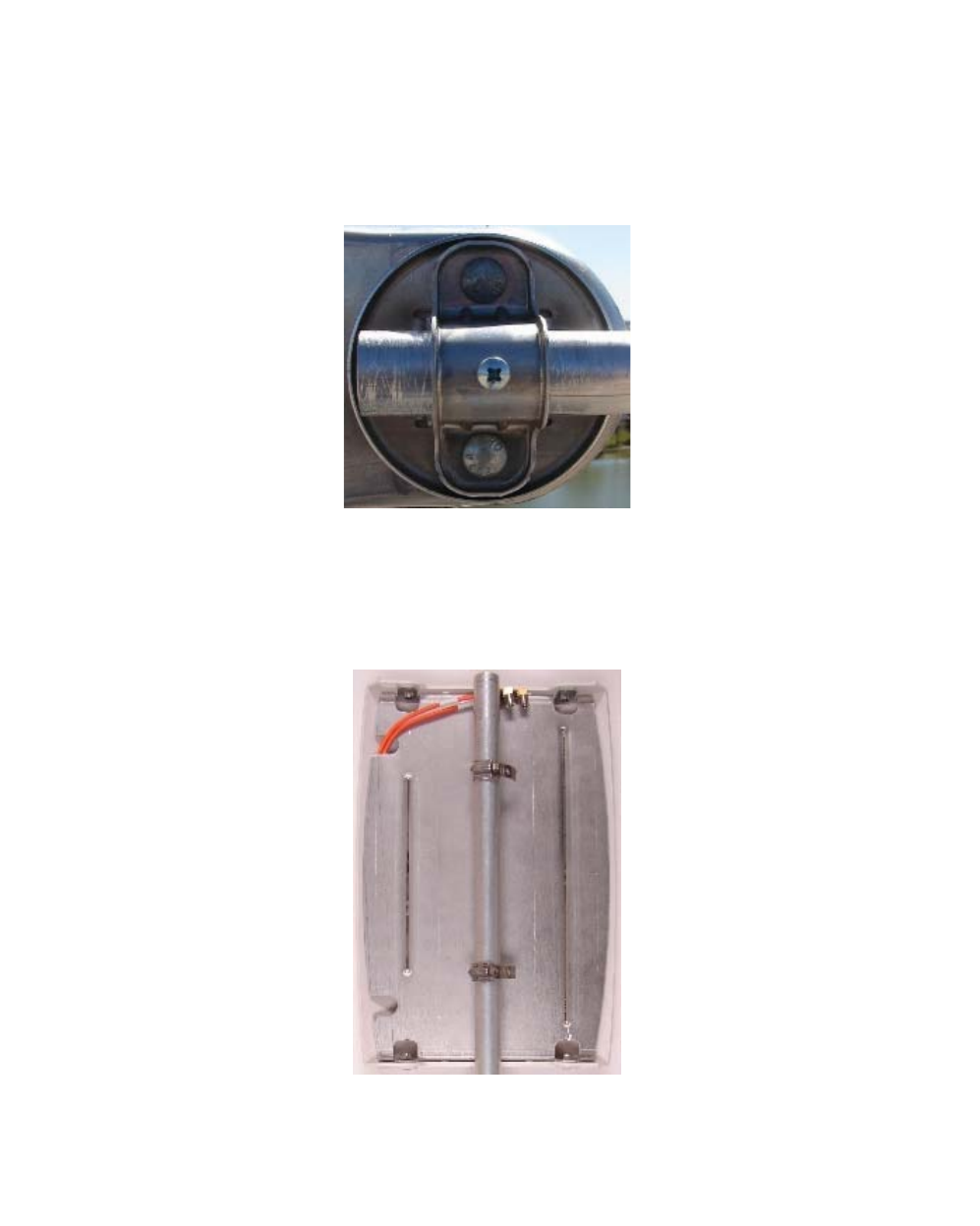
AP 7181 Access Point: Installation Guide
48
4. Tighten the nuts on the mounting bracket so that the support arm remains in the
desired position.
5. Use a cordless drill and a 3.6 mm bit to drill the hole for the set screw on the
mounting bracket.
6. Insert and tighten the M4.8 set screw for the mounting bracket.
7. Using the supplied clamps, attach the Remote Antenna panel to the mounting
bracket.
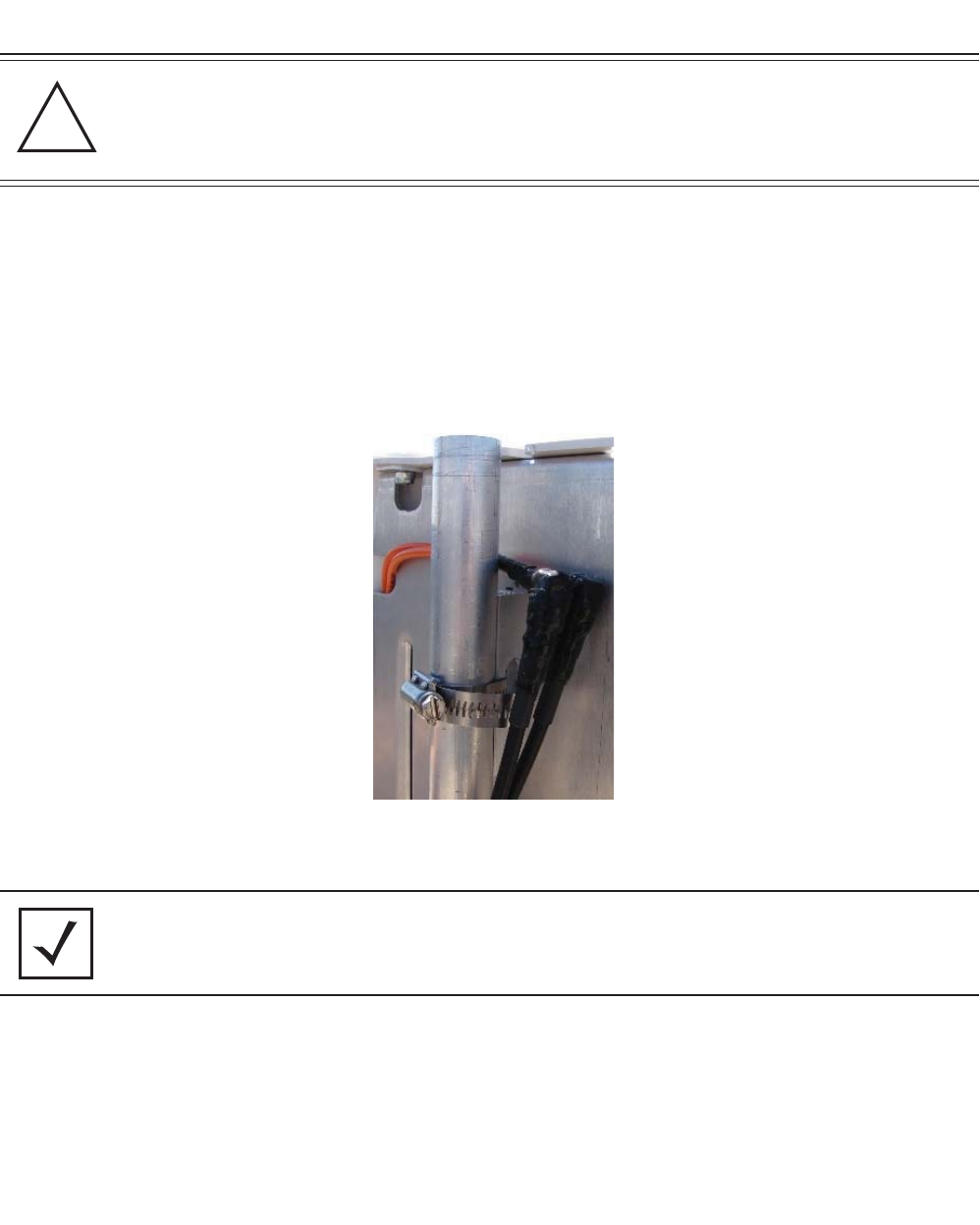
Hardware Installation 49
8. Complete the installation of the mouting bracket using the appropriate method for
the installation requirements.
9. Attach the extension cable from the AP 7181 to the connectors on the Remote
Mount antenna panel and wrap the connections with Mastic tape and Electrical
tape.
CAUTION When adjusting the Remote Mount antenna panel on the
mounting bracket, ensure that the mounting bracket does not
extend past the top of the antenna panel to comply with wind
loading requirements.
NOTE Both 6 and 10 foot extension cables are available. The extension
cables can be configured in a daisy chain if additional length is
required.
!
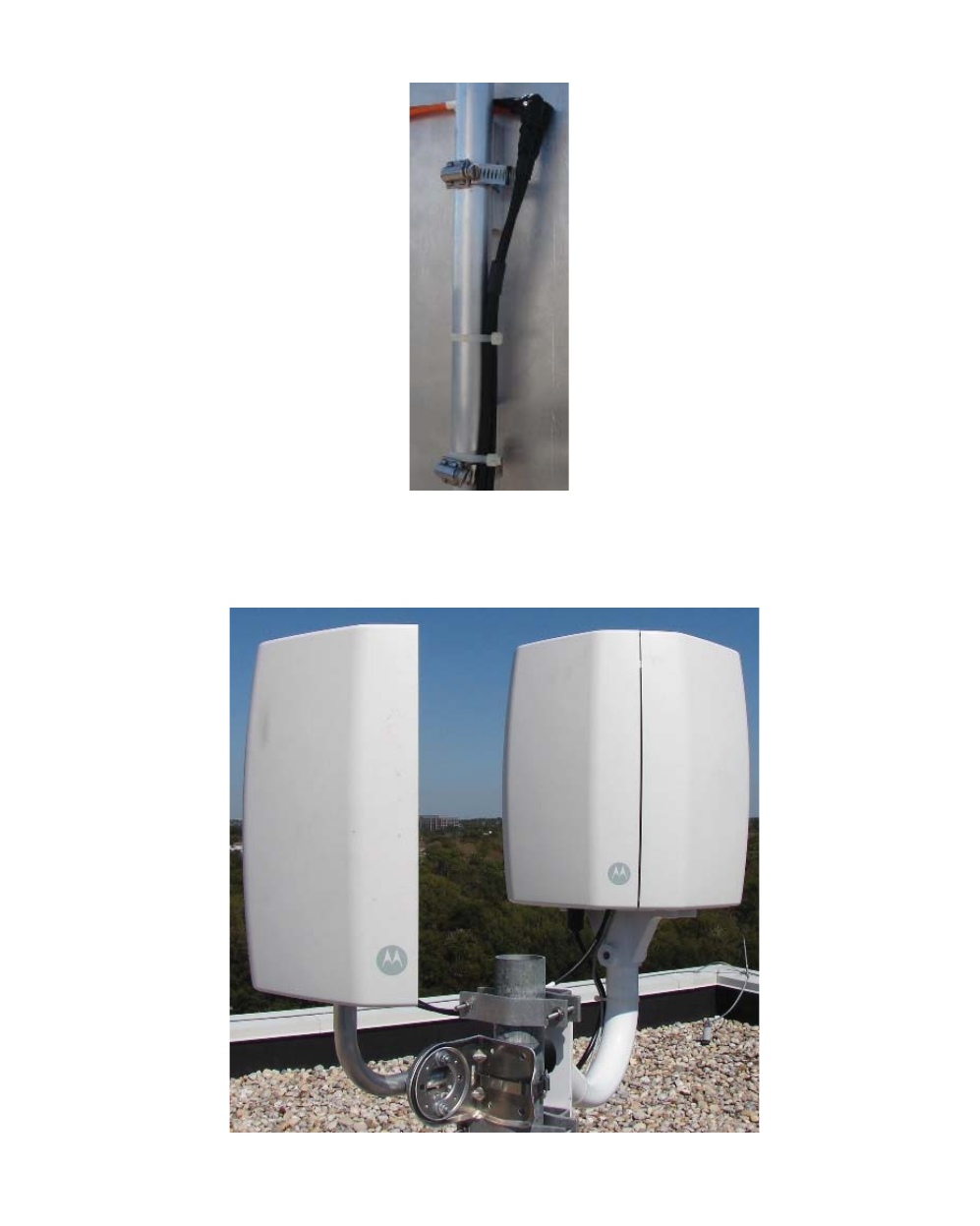
AP 7181 Access Point: Installation Guide
50
10. Secure the cables to the mounting bracket using UV resistant tie wraps.
11. After the Remote Panel installation is complete, apply power to the AP 7181
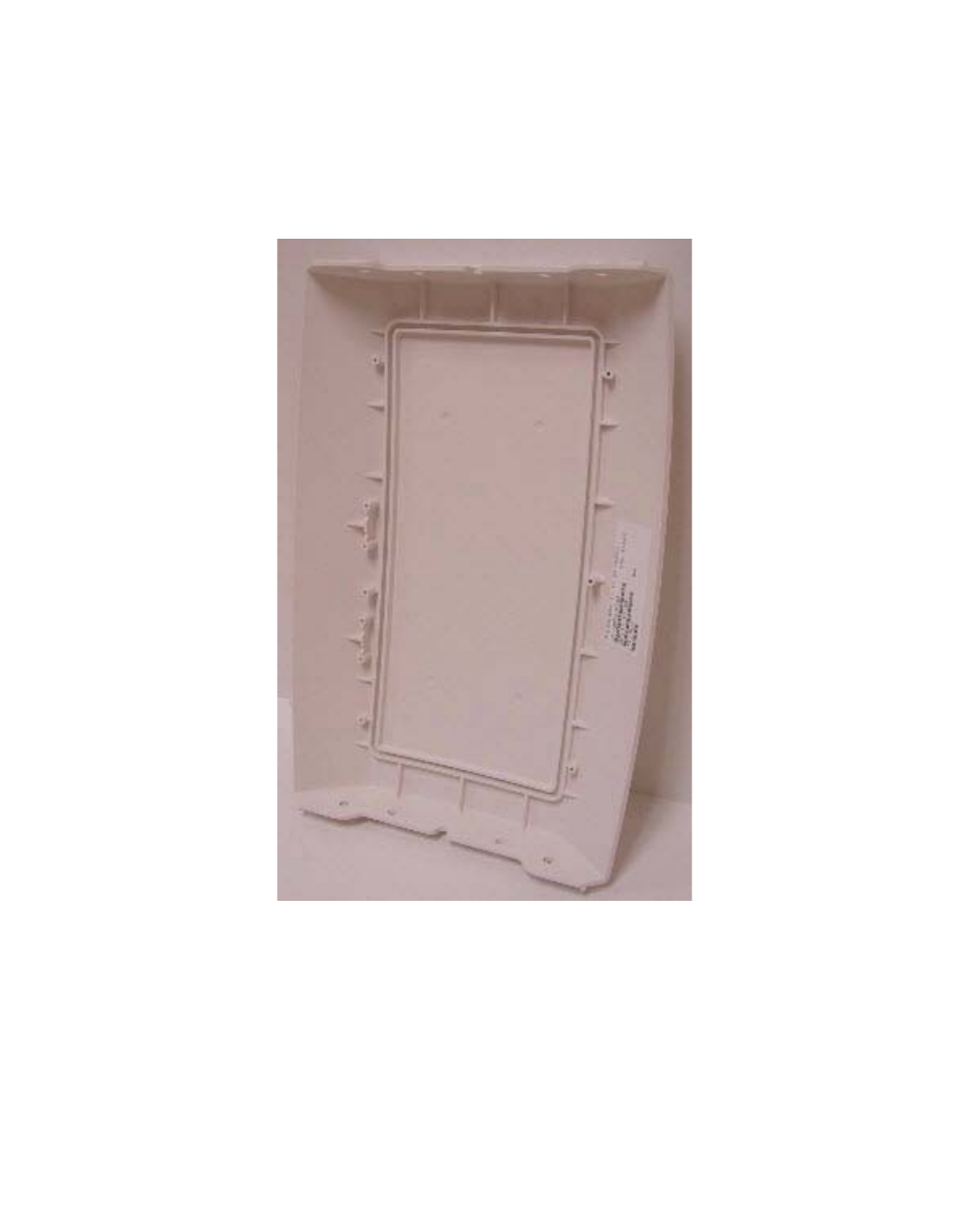
Hardware Installation 51
2.13.3 Installing the Blank Antenna Panel
In addition to Remote Panel antenna installations, Blank antenna panels can also be used if
the unit is going to be placed directly against a wall or building. The Radome antenna
should be removed and the Blank panel should be attached to side of the unit that will be
facing any obstruction.
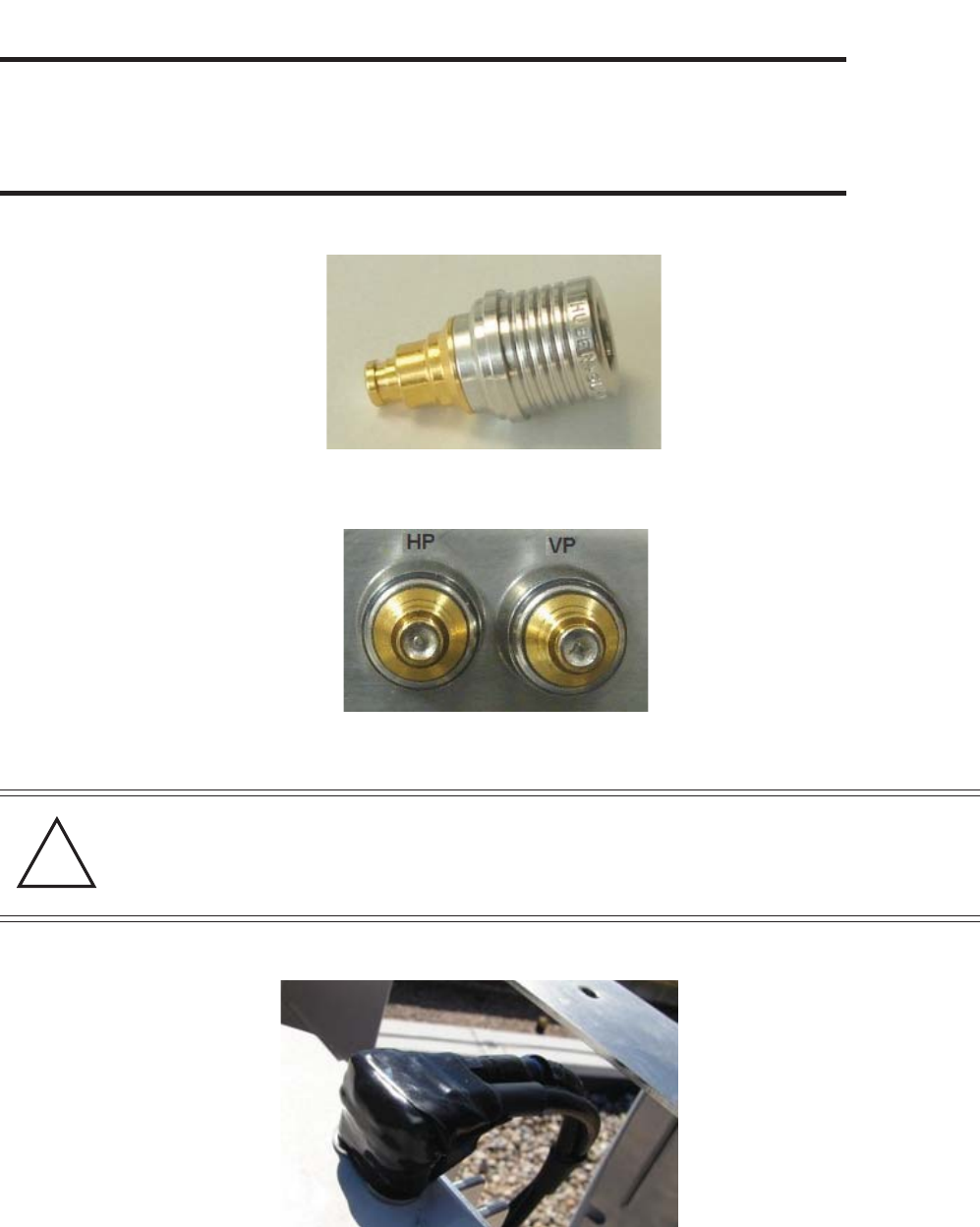
AP 7181 Access Point: Installation Guide
52
WARNING! When disconnecting the antenna cables from the unit or
removing an antenna panel and replacing it with a Blank panel,
terminators MUST be placed on the unused horizontal and
vertical connectors on the top of the unit.
CAUTION It is also recommended that the antenna cable connectors and
terminators on the horizontal and vertical connectors on the top
of the AP 7181 be wrapped with both mastic tape and electrical
tape.
!
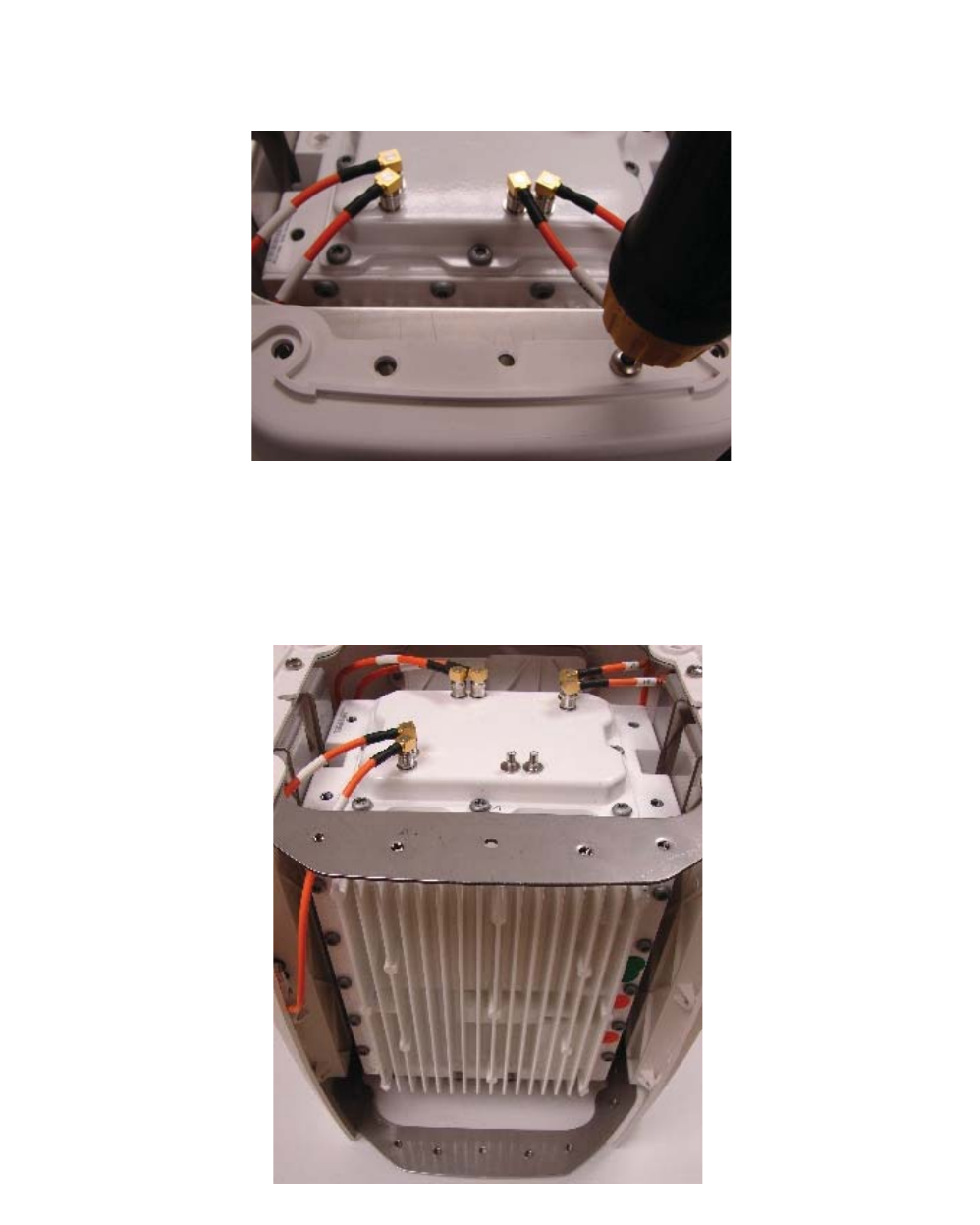
Hardware Installation 53
To install a Blank antenna panel:
1. Remove the screws for one of the four Radome antenna panels.
2. Grasp the lower part (barrel) of the antenna cable connector and carefully detach
the antenna cables from the connectors on the device. Remove the Radome antenna
panel.
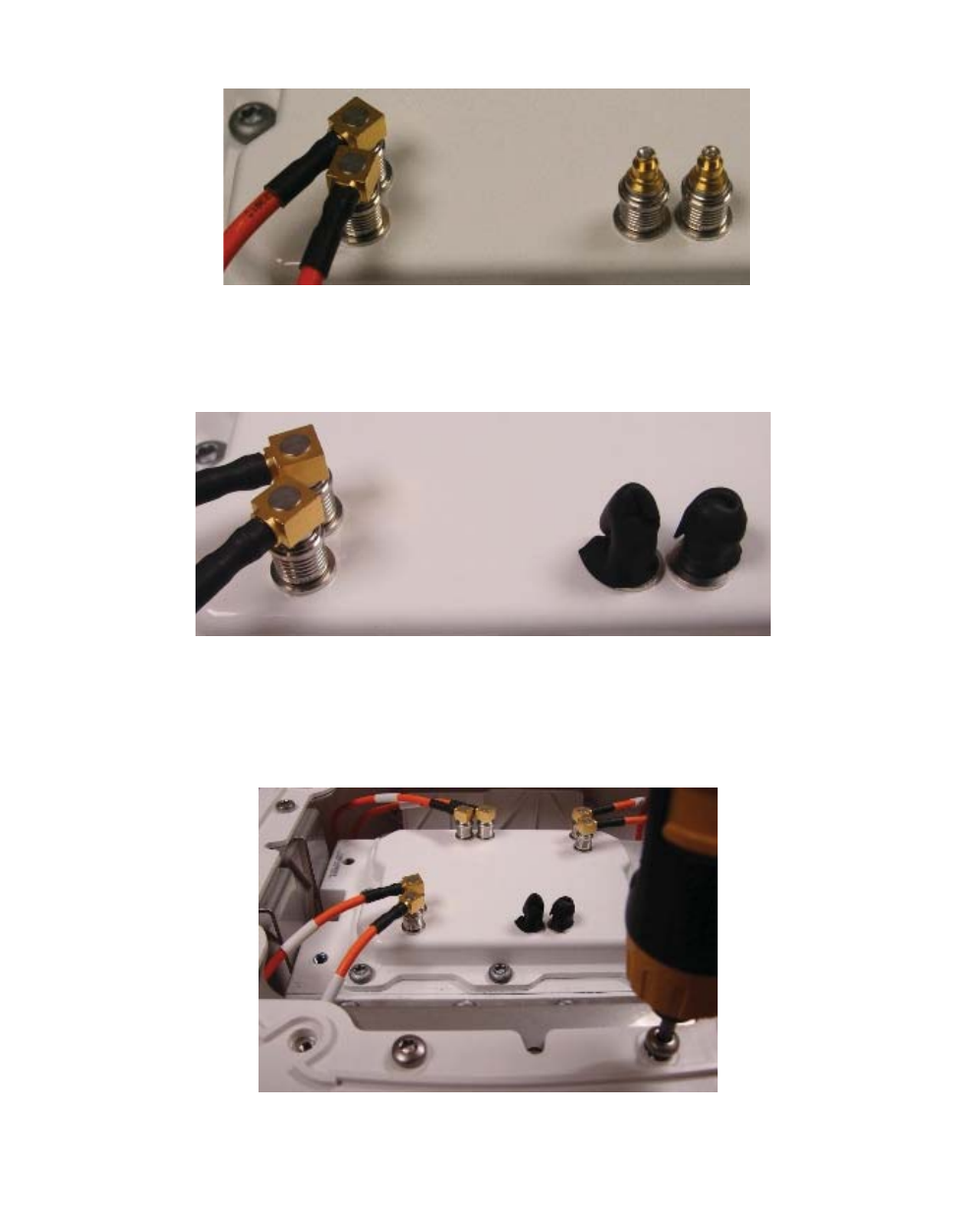
AP 7181 Access Point: Installation Guide
54
3. Attach the terminators to the antenna cable connectors.
4. Wrap the terminators with mastic tape and electrical tape.
5. Using the four screws provided, attach a Blank antenna panel to the unit to cover
the side of the device where the functional antenna panel was removed.

Getting Started 55
3 Getting Started
Use the following procedures to configure and setup up the AP 7181.
3.1 Initially Connecting to the Access Point
The AP 7181 can be staged and configured using one of several connection techniques.
Managing the access point includes viewing network statistics and setting configuration
options. The access point requires one of the following connection methods to manage the
network:
• Secure Java-Based WEB UI - (use Sun Microsystems JRE 1.5 or higher available
from Sun's Web site. Disable Microsoft's Java Virtual Machine if installed). For
information on using the Web UI to set access point default configuration, refer to
Basic Device Configuration or chapters 4 through 7 of the AP 7181 Access Point
Product Reference Guide.
• Command Line Interface (CLI) via Serial, Telnet and SSH. The access point CLI
is accessed through the RS232 port, via Telnet or SSH. The CLI follows the same
configuration conventions as the device user interface with a few documented
exceptions. For details on using the CLI to manage the access point, refer to chapter
8 of the AP 7181 Access Point Product Reference Guide.
• Config file - Readable text file; Importable/Exportable via FTP, TFTP and HTTP.
Configuration settings for an access point can be downloaded from the current
configuration of another access point meeting the import/export requirements.
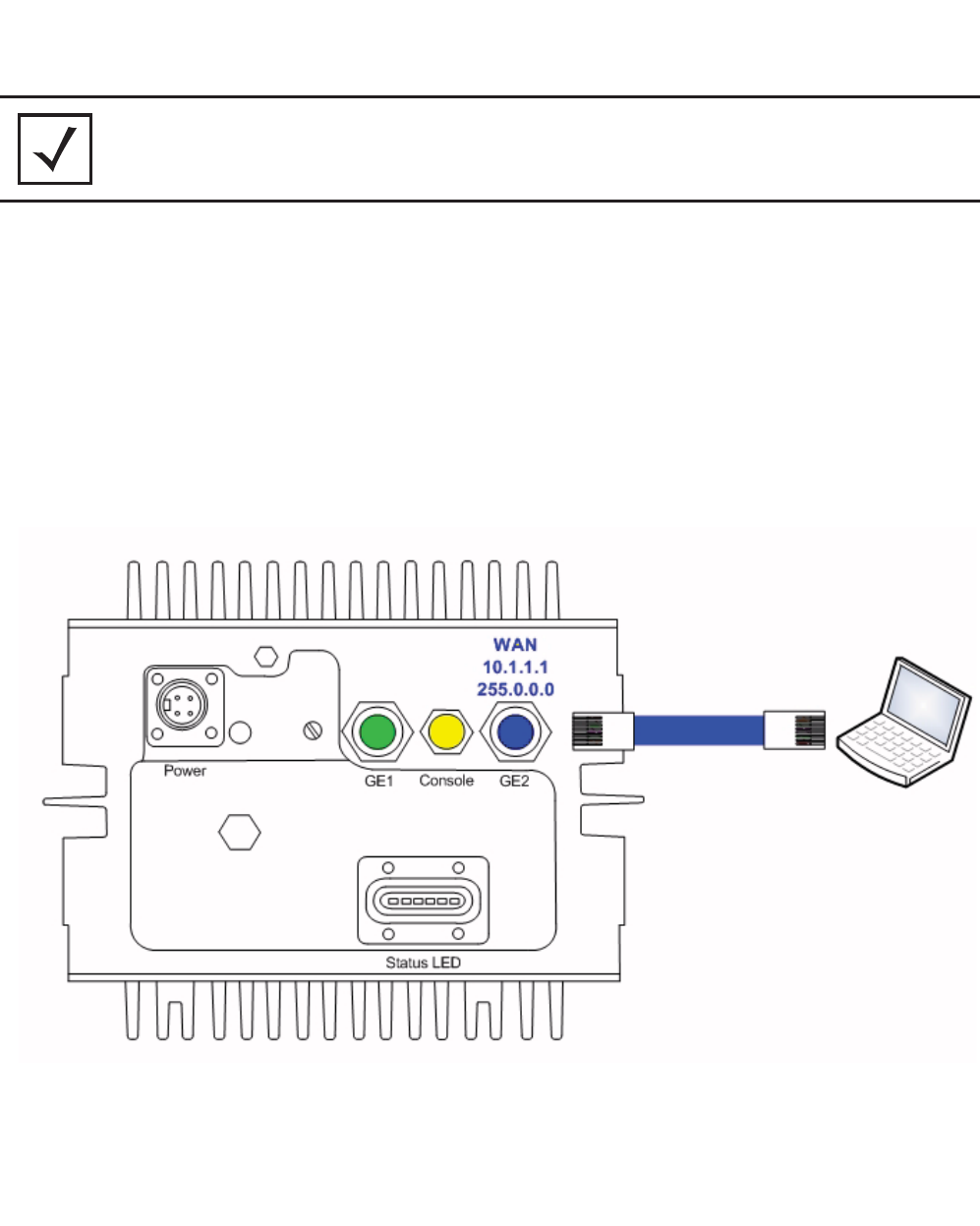
AP 7181 Access Point: Installation Guide
56
3.1.1 Connecting to the Access Point Using the WAN Port
To initially connect to the access point using the access point's WAN port:
1. Connect AC power to the access point.
2. The WAN (or GE2) port default is configured with an IP address of 10.1.1.1.
Configure a laptop with an IP address of 10.1.1.2 / 255.0.0.0 and connect to the
GE2 port.
3. Launch a browser and enter the access point's static IP address (10.1.1.1). The
default password is "motorola”.
NOTE These procedures are only valid for initially connecting to an
AP 7181.
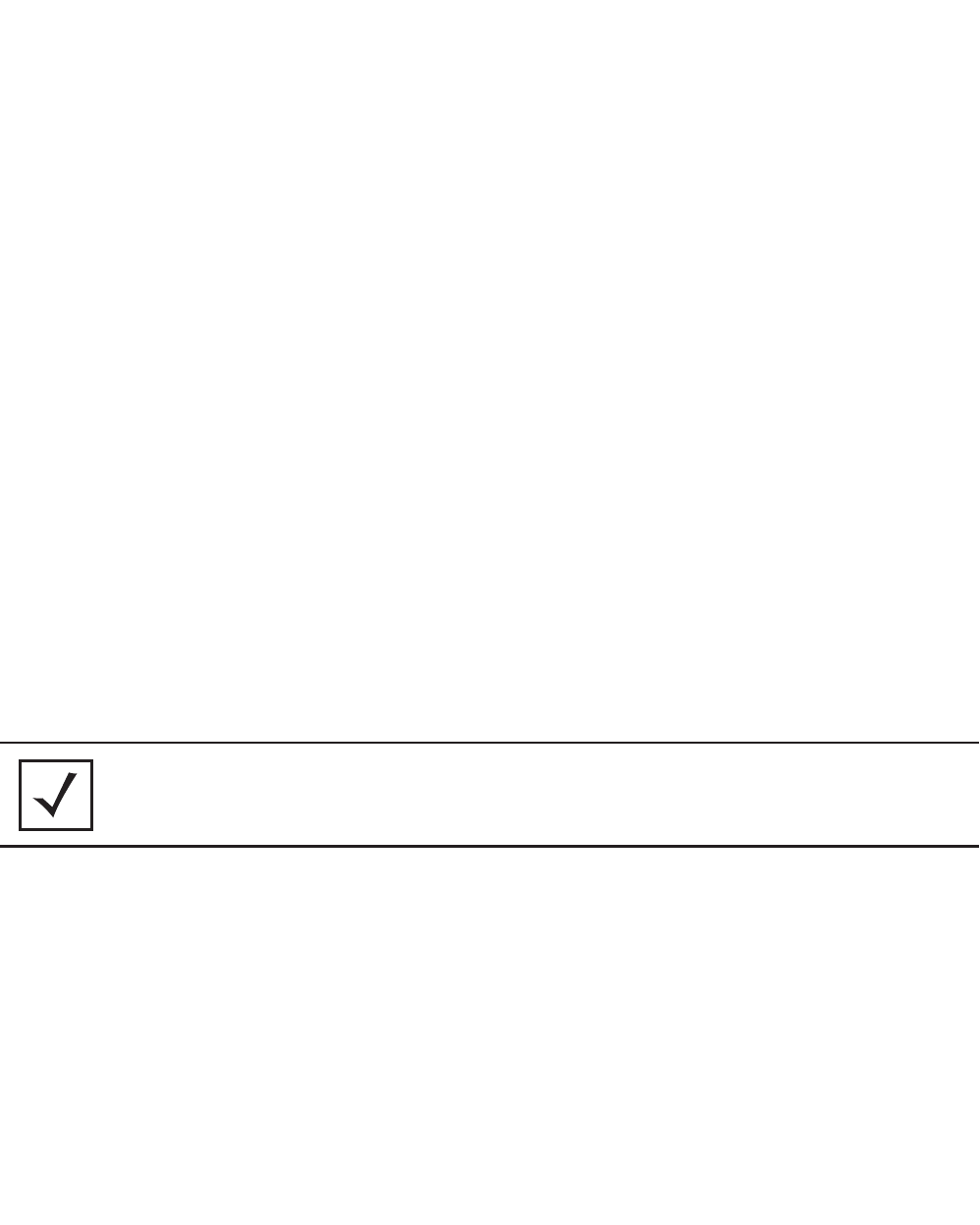
Getting Started 57
3.1.2 Connecting to the Access Point Using the LAN Port
To initially connect to the access point using the access point's LAN port:
1. The LAN (or GE1/POE) port default is set to DHCP. Connect the access point's
GE1/POE port to an Ethernet segment with access to a DHCP server. The access
point will automatically receive an IP address.
2. To view the IP address, connect one end of a null modem serial cable to the access
point and the other end to the serial port of a computer running HyperTerminal or
similar emulation program
• Configure the following settings:
• Baud Rate - 115200
• Data Bits - 8
• Stop Bits - 1
• No Parity
• No Flow Control
3. Press <ESC> or <Enter> to access the access point CLI.
4. Enter the default username of "admin" and the default password of "motorola."
5. Since this is the first time you are logging into the access point, you will be
prompted to enter a new password and set the county code.
6. At the CLI prompt (admin>), type "summary."
7. The access point's LAN IP address will be displayed.
8. Connect a laptop on the same Ethernet segment as the access point (e.g. set the
laptop for DHCP so it receives an IP address from the same DHCP server)
NOTE AP 7181 units configured for deployment in the US will not
prompt the user for a country code.
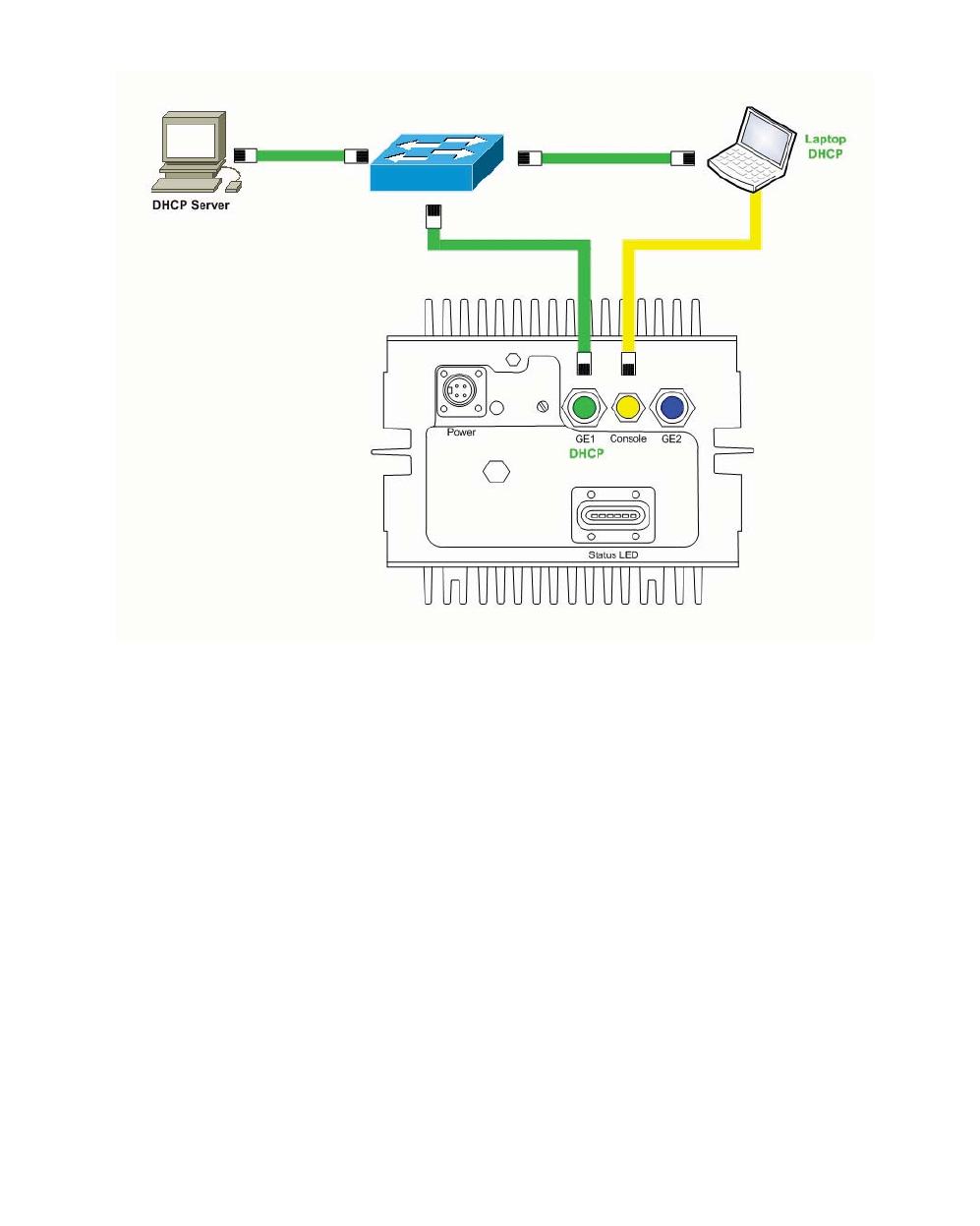
AP 7181 Access Point: Installation Guide
58
9. Using a Web browser, use the access point's IP address to access the access point.
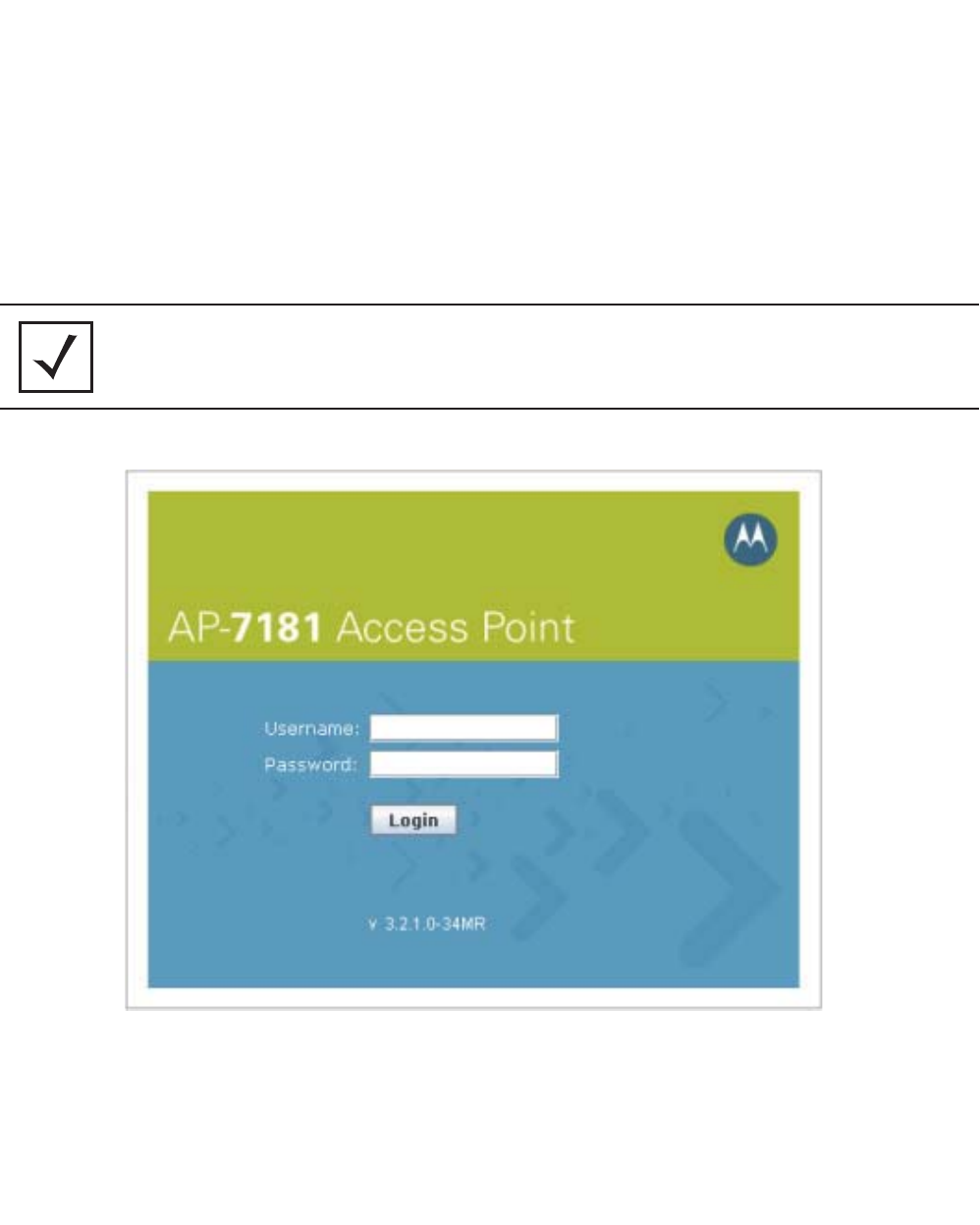
Getting Started 59
3.2 Basic Device Configuration
For the basic setup described in this section, the Java-based Web UI will be used to
configure the access point. Use the access point's LAN interface for establishing a link with
the access point. Configure the access point as a DHCP client. For optimal screen
resolution, set your screen resolution to 1024 x 768 pixels or greater.
1. Open a browser. If you used the WAN method, point your browser to 10.1.1.1. If
you used the LAN method, point your browser to the IP address provided by the
DHCP server.
NOTE For optimum compatibility, use Java Runtime Environment 1.5 or
higher and disable the Microsoft Java Virtual Machine.
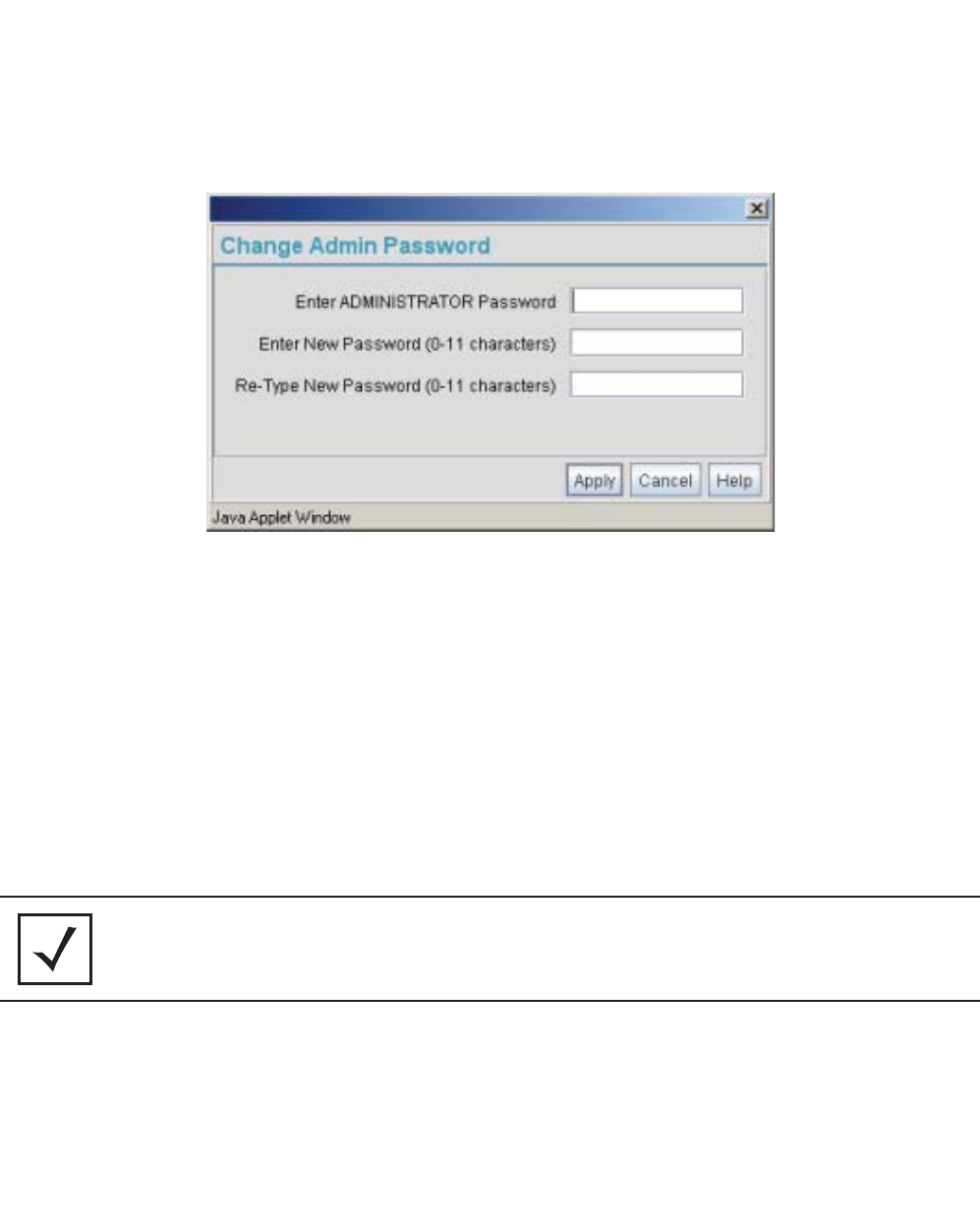
AP 7181 Access Point: Installation Guide
60
2. Log in using admin as the default Username and motorola as the default Password.
Use your new password if it has been updated from default.
3. If the default login is successful, the Change Admin Password window displays.
Change the password.
Enter the current password and a new admin password in fields provided. Click Apply.
Once the admin password has been updated, a warning message displays stating the access
point must be set to a country.
The export function will always export the encrypted Admin User password. The import
function will import the Admin Password only if the access point is set to factory default.
If the access point is not configured to factory default settings, the Admin User password
WILL NOT be imported.
NOTE For optimum compatibility, use Java Runtime Environment 1.5 or
higher and disable the Microsoft Java Virtual Machine.
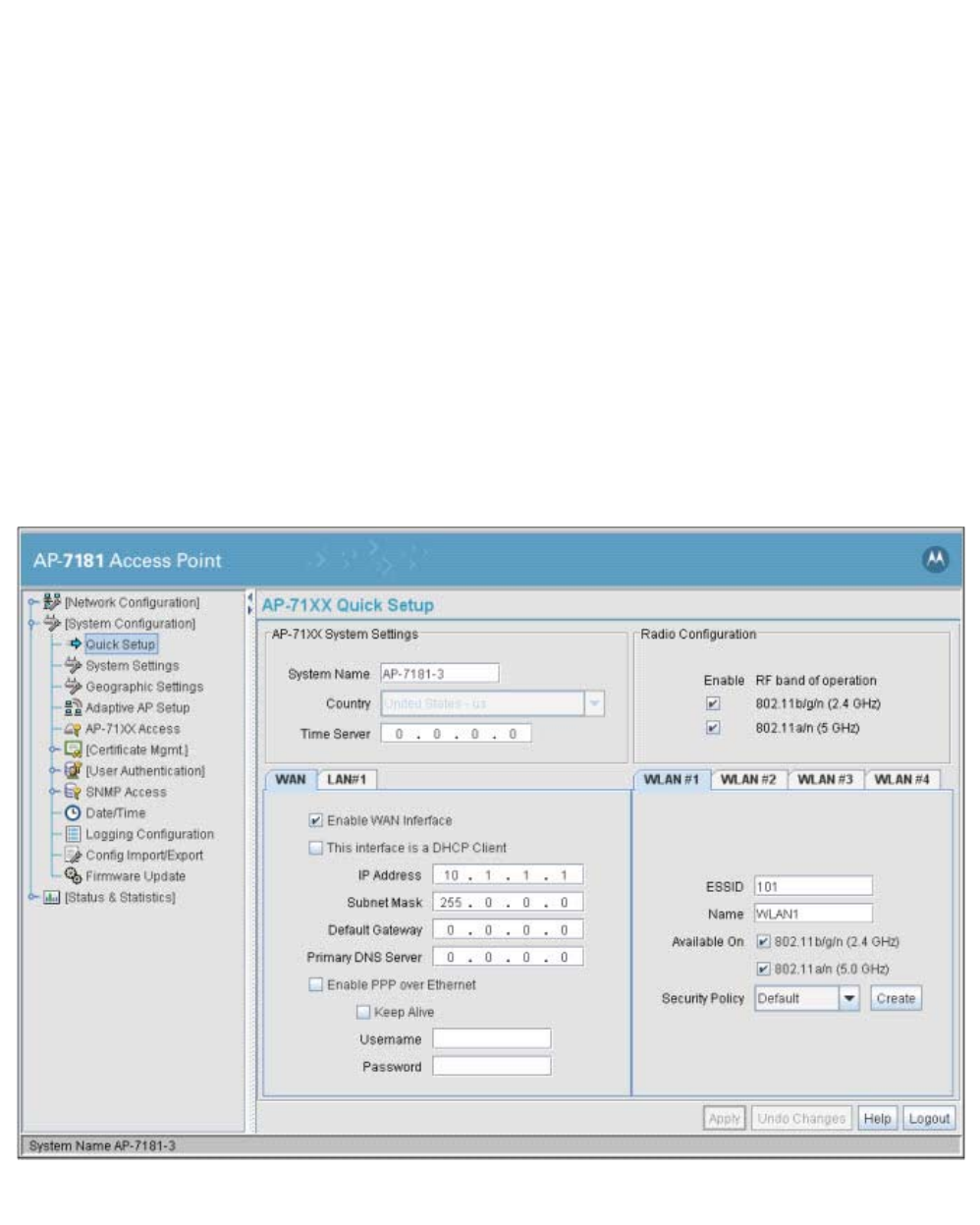
Getting Started 61
3.2.1 Configuring Device Settings
Many of the most important parameter settings located on the configuration pages
throughout the menu tree have been consolidated on the Quick Setup screen to facilitate
getting the unit up and running quickly. Configure a set of minimum required device
settings within the Quick Setup screen. When you change the settings in the Quick Setup
screen, the values also change for other screens where these parameters are displayed.
Additionally, if the values are updated in these other screens, the values initially set within
the Quick Setup screen will be updated.
Basic Settings
To define a basic access point configuration:
1. If the Quick Setup screen is not already displayed, select System Configuration -
> Quick Setup from the menu tree.
2. Enter a System Name for the access point.
The System Name is useful if multiple devices are being administered.

AP 7181 Access Point: Installation Guide
62
3. Optionally enter the IP address of the server used to provide system time to the
access point in the Time Server field.
Once the IP address is entered, the access point's Network Time Protocol (NTP)
functionality is engaged automatically. Refer to the AP 7181 Product Reference
Guide for information on defining alternate time servers and setting a
synchronization interval for the access point to adjust its displayed time and more
detailed information on setting alternate time servers and setting a synchronization
interval for the access point to adjust its displayed time.
4. Enable the radio(s) using the Enable checkbox(es) in the Radio Configuration
field. If using a single radio access point, enable the radio then select either 2.4
GHz or 5.x GHz from the RF Band of Operation field.
IP Settings
The LAN 1 interface on the AP 7181 supports several different functions. The IP address
assigned to the LAN (by DHCP or via a static address) is the management IP address for
the access point. By default, the LAN 1 interface is tied to physical port GE1 and is
configured for DHCP.
Mesh Point Root nodes are gateway nodes. AP 7181 nodes that are configured as Mesh
Point Roots will utilize the LAN 1 interface (GE1) to connect to the core network.
Nodes that are Non Root Mesh Points also utilize LAN 1 since the IP address of LAN 1 is
the management IP address of the access point. LAN 1 is set to DHCP by default and Non
Root Nodes will receive their IP address over the mesh network. Non Root nodes can also
use GE1 to connect to external devices such as a surveillance camera.
NOTE DNS names are not supported as a valid IP address. The user is
required to enter a numerical IP address.
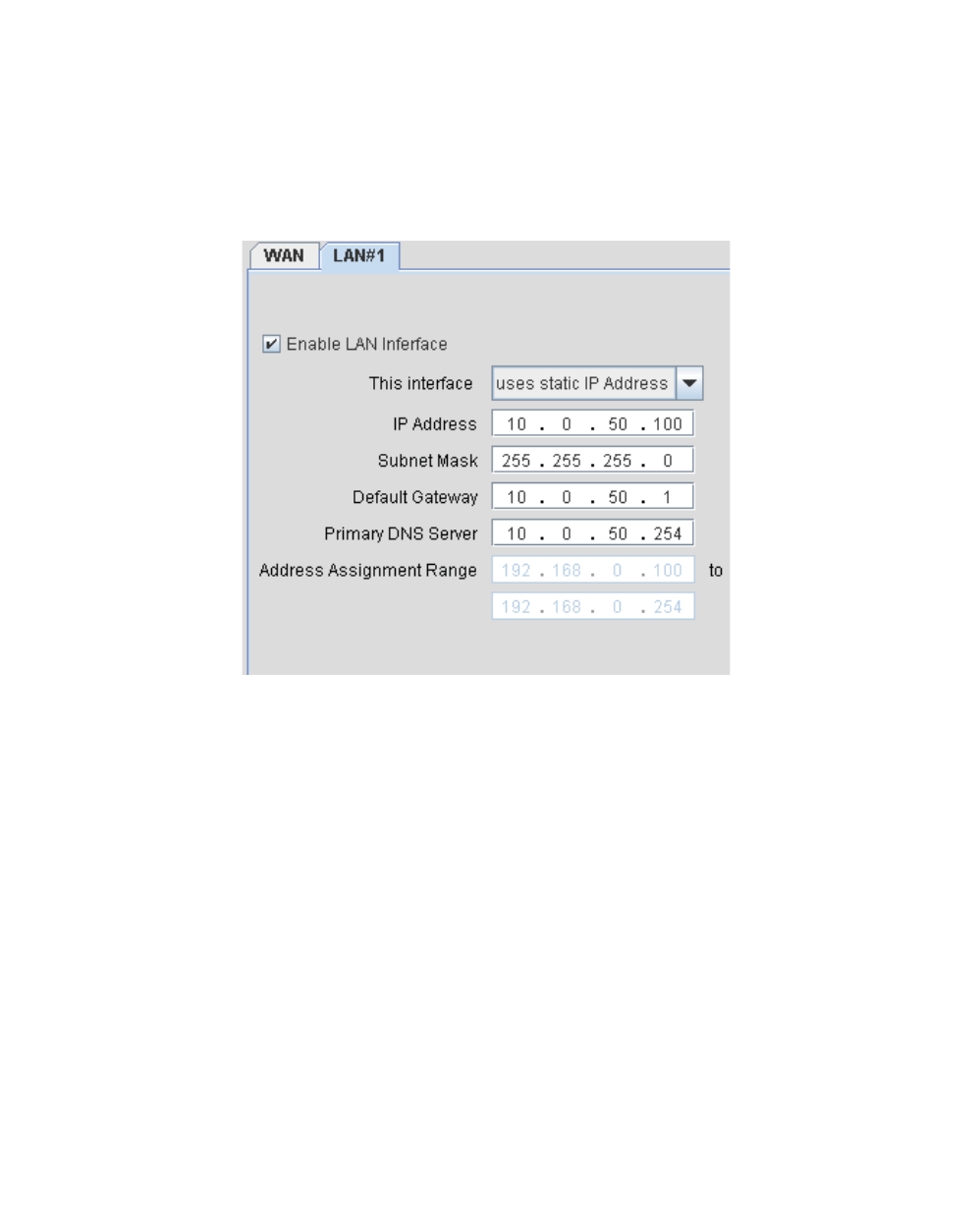
Getting Started 63
To configure the IP Settings:
1. Click the LAN tab to set a minimum set of parameters to use the access point LAN
interface.
2. Select the Enable LAN Interface checkbox to forward data traffic over the access
point's LAN connection. The LAN connection is enabled by default.
3. Use the This interface drop-down menu to specify how network address
information is defined over the access point's LAN connection. Select DHCP
Client if the access points will receive an IP address from the core network via
DHCP. DHCP is a protocol that includes mechanisms for IP address allocation and
delivery of host-specific configuration parameters, such as IP address, network
mask, and gateway, from a DHCP server to a host.
4. Select DHCP Server to use the access point as a DHCP server over the LAN
connection. Select the Bootp client option if network addressing is provided by a
Bootp server.
5. If using the static or DHCP Server option, enter the network-assigned IP Address
of the access point.
6. The Subnet Mask defines the size of the subnet.The first two sets of numbers
specify the network domain. The next set of numbers specifies the subset of hosts
within a larger network. These values help divide a network into sub networks and
simplify routing and data transmission.
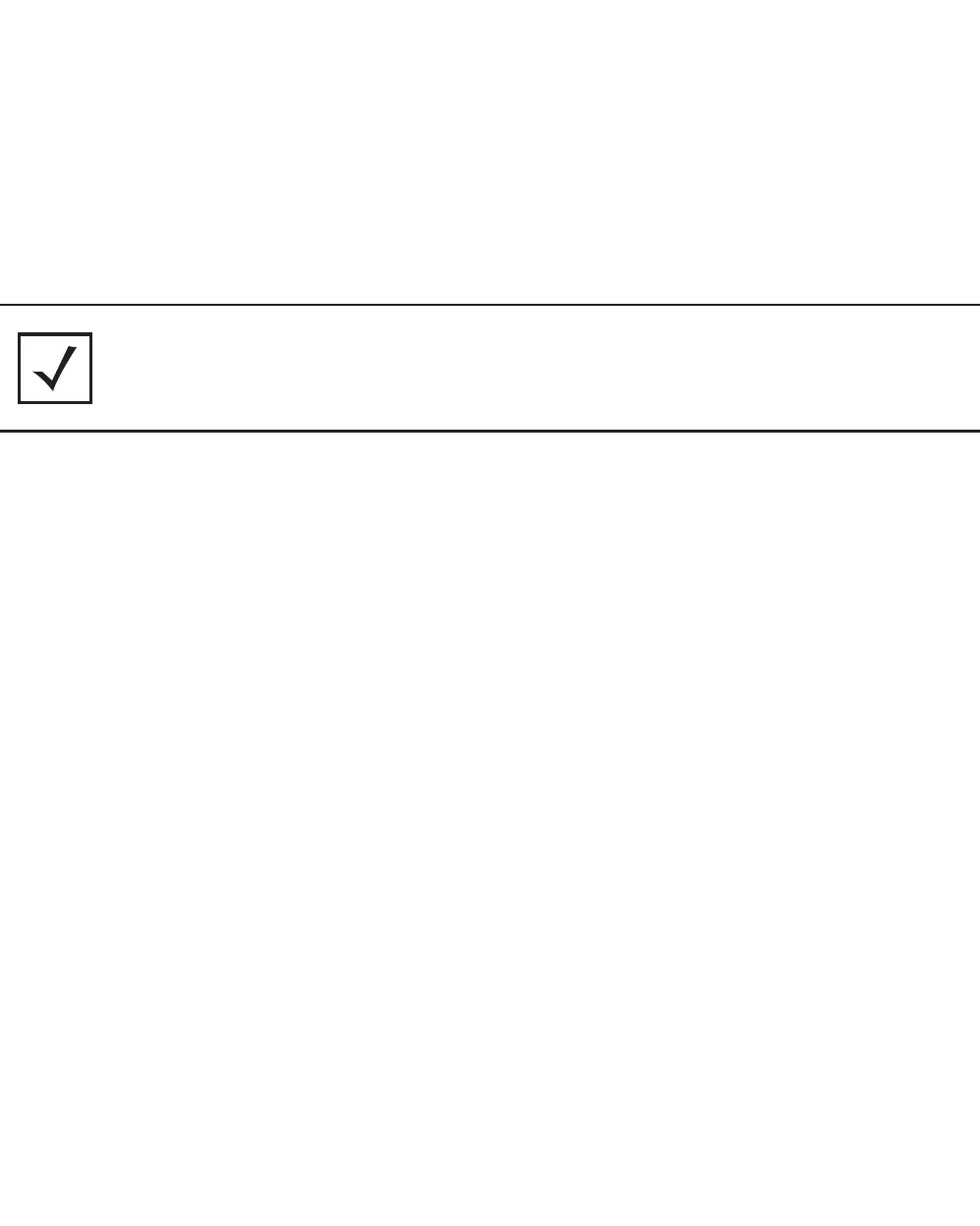
AP 7181 Access Point: Installation Guide
64
7. If using the static or DHCP Server option, enter a Default Gateway to define the
numerical IP address of a router the access point uses as a default gateway on the
Ethernet.
8. If using the static or DHCP Server option, enter the Primary DNS Server numeric
IP address.
9. If using the DHCP Server option, use the Address Assignment Range parameter
to specify a range of addresses to be reserved for mapping clients to IP addresses.
WLAN Quick Configuration
The Quick Setup page includes a WLAN section to support WLAN creation. By default,
a single WLAN is configured as ESSID 101, Open, Available on both radios.
1. WLANs 1-4 are available on the Quick Setup screen. Select the WLAN #1 tab to
define its ESSID and security scheme for basic operation.
a. Enter the Extended Services Set Identification (ESSID) and the name
associated with the WLAN. This name is will be identified by 802.11 stations
when searching for a network to connect to.
b. Use the Available On checkboxes to define whether the target WLAN is
operating in the 2.4 or 5.x GHz radio band. Ensure the radio selected has been
enabled.
2. Once the WLAN's radio designations have been made, the radio must be
configured in respect to intended 2.4 or 5 GHz radio traffic and the antennas used.
Select Network Configuration -> Wireless -> Radio Configuration -> Radio1
(or Radio2), and configure the Radio Settings field. If you know the Properties,
Performance and Beacon Settings for the radio, define those fields. Otherwise you
can accept the factory default settings.
3. Define the Channel Settings, Power Level and 802.11 mode with respect to the 2.4
or 5.x GHz 802.11b/g/n or 802.11a/n radio traffic and anticipated gain of the
antennas.
NOTE If a manually (static) mapped IP address is within the IP address
range specified, that IP address could still be assigned to another
client. To avoid this, ensure all statically mapped IP addresses are
outside of the IP address range assigned to the DHCP server.
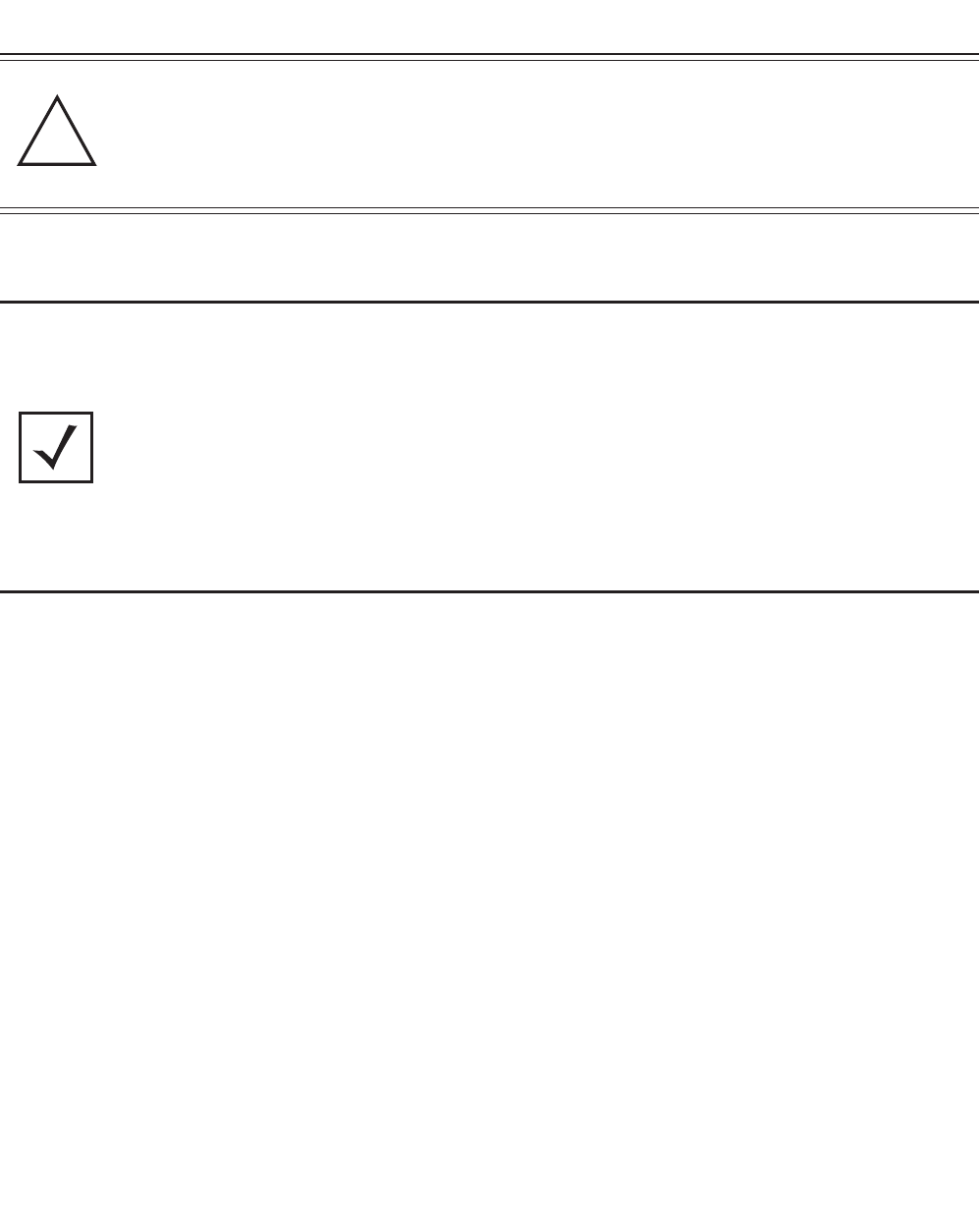
Getting Started 65
4. Click Apply to save any changes to the access point Quick Setup screen.
Dismissing the screen without clicking Apply results in all changes to the screens
being lost.
5. Click Undo Changes to delete any changes made in error. Undo Changes reverts
the settings displayed on the access point Quick Setup screen to the last saved
configuration.
CAUTION Only a qualified wireless network administrator should set the
access point radio configuration. Refer to Configuring the
802.11a/n or 802.11b/g/n Radio in the AP 7181 Product
Reference Guide for an understanding of configurable radio
values and their implications..
NOTE Even an access point with a minimal configuration must be
protected against data theft and corruption. A security policy
should be configured for WLAN1 as part of the basic
configuration outlined in this guide. A security policy can be
configured for the WLAN using the Quick Setup screen. Policies
can be defined over time and saved to be used as needed as
security requirements change. Motorola recommends that you
familiarize yourself with the security options available on the
access point before defining a security policy. Refer to
Configuring WLAN Security Settings.
!
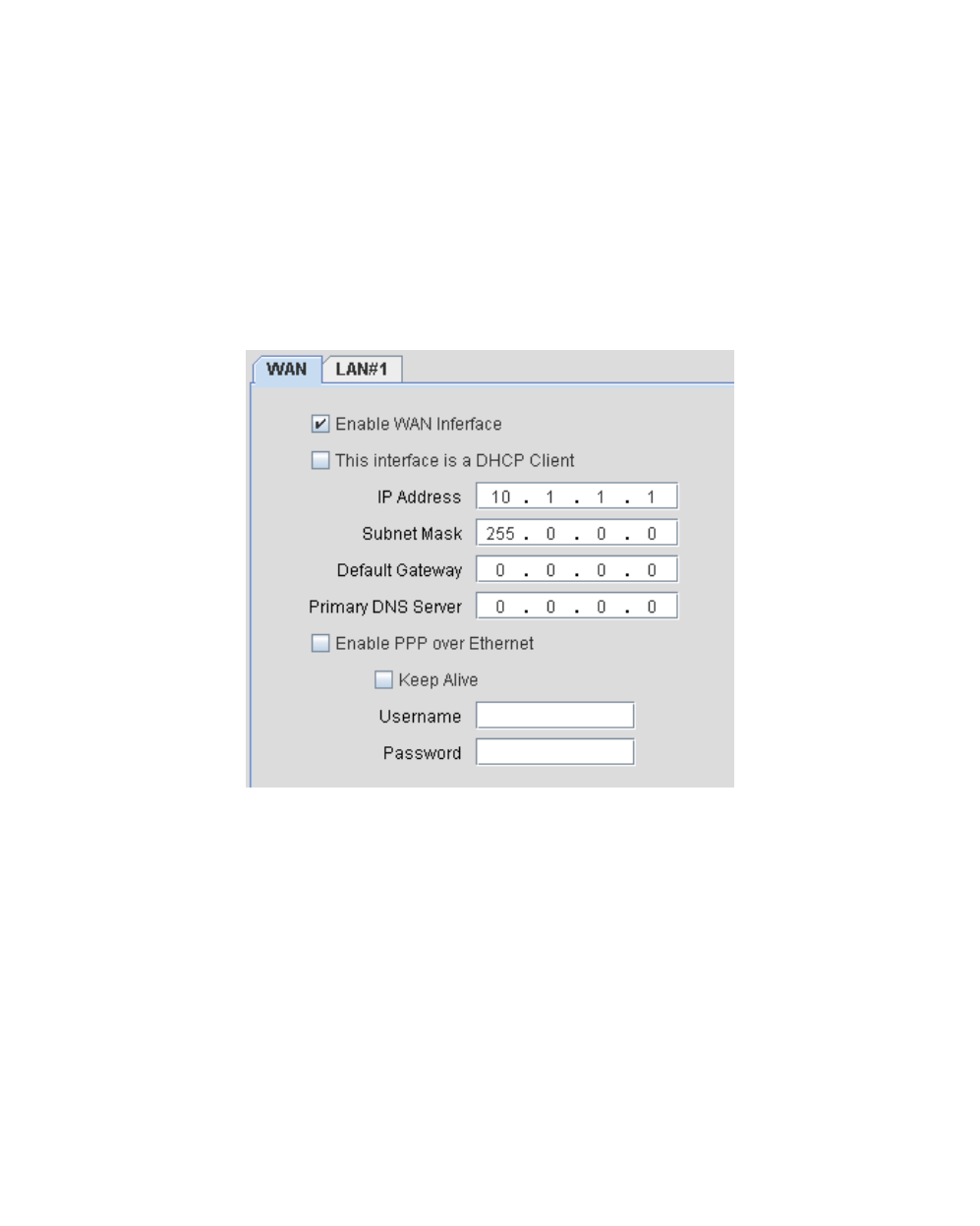
AP 7181 Access Point: Installation Guide
66
Removing the WAN Interface from GE2
By default, the WAN interface is enabled and has a static IP address of 10.1.1.1/8. This
interface is tied to physical port GE2 and is used for initial configuration.
In order to use GE2 to connect external devices such as an IP surveillance camera, you will
need to configure the port from a WAN role to a LAN role. This is done by clicking on the
WAN branch under Network Configuration and selecting LAN in the drop down box for
GE2. This will bridge the GE1 and GE2 ports. Any device plugged into GE2 will then be
on the same LAN segment as GE1.
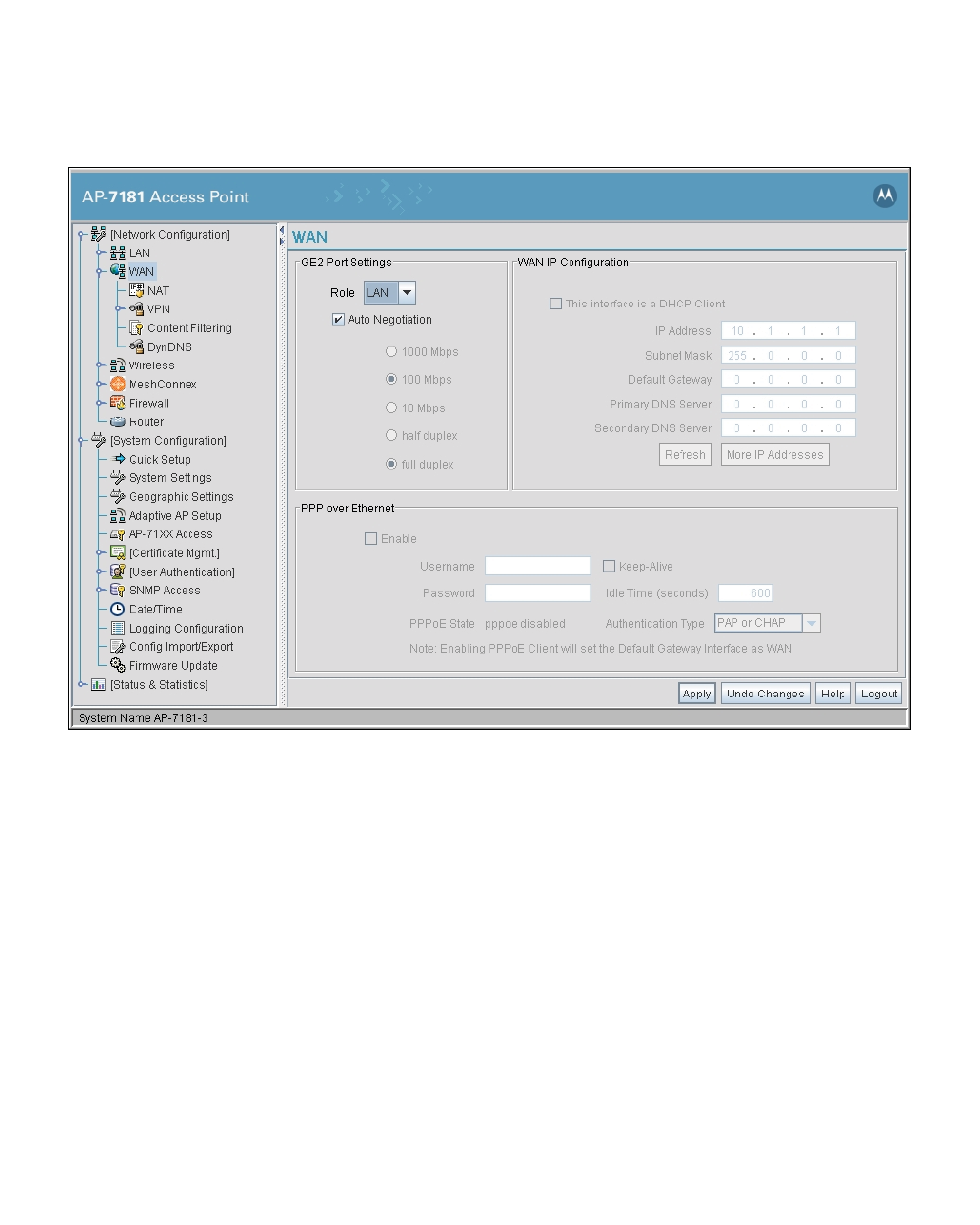
Getting Started 67
To remove the WAN interface from GE2:
1. Select Network Configuration -> WAN from the menu tree.
2. In the Role drop-down box, select LAN.
For more information on WAN port configuration options, refer to Configuring WAN
Settings in the AP 7181 Access Point Product Reference Guide.
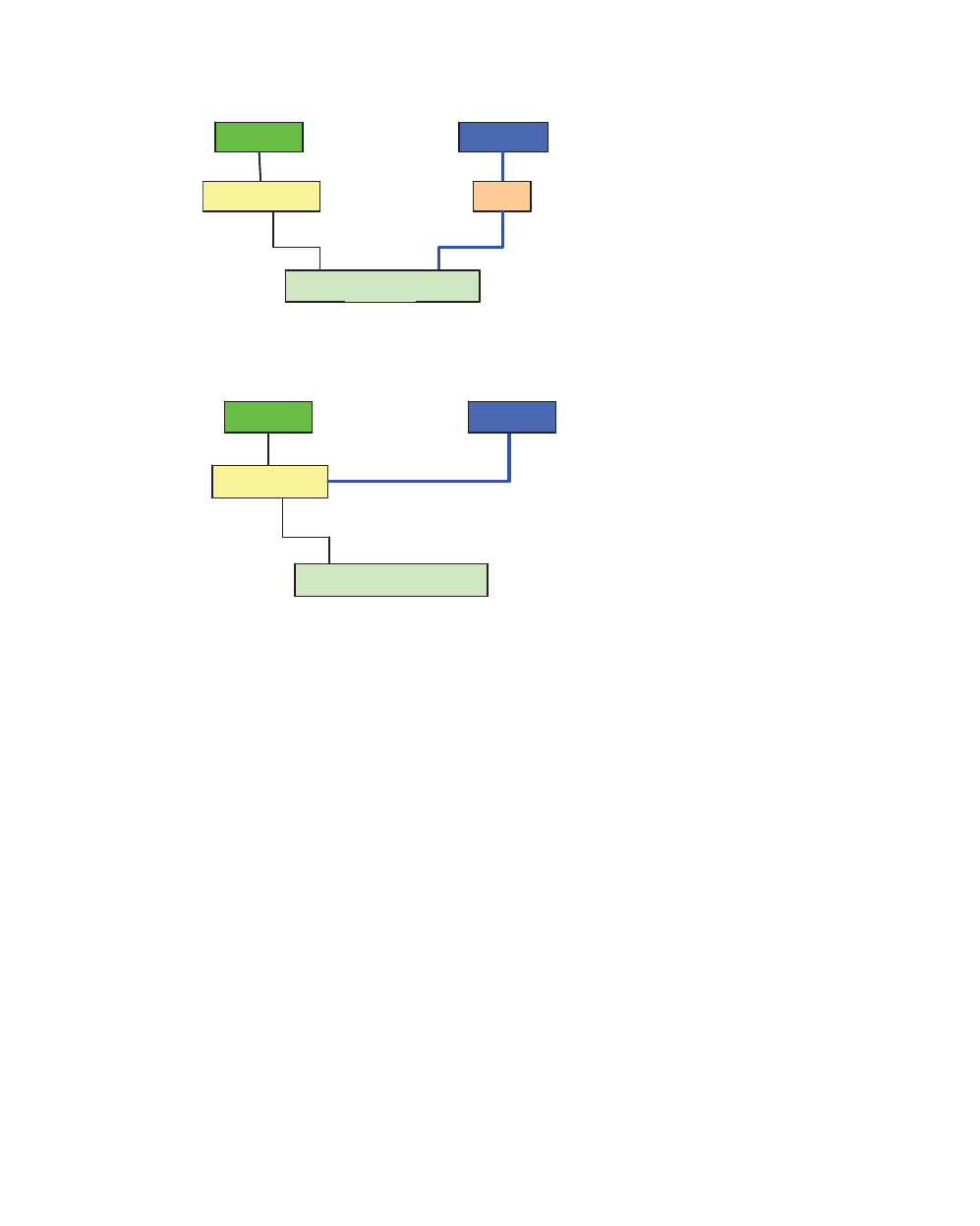
AP 7181 Access Point: Installation Guide
68
The following diagram illustrates the configuration changes that result from setting the
Role parameter to LAN.
GE1 GE2
WAN
10 .1. 1. 1DHCP
LA N1 Bridg e
IP Sta ck
GE1
DHCP
LAN1 Bridge
IP St ack
GE2
Default Configuration
After changing the role of
GE2 from WAN to LAN
GE1 GE2
WAN
10 .1. 1. 1DHCP
LA N1 Br idg e
IP Sta ck
GE1
DHCP
LAN1 Bridge
IP St ack
GE2
Default Configuration
After changing the role of
GE2 from WAN to LAN
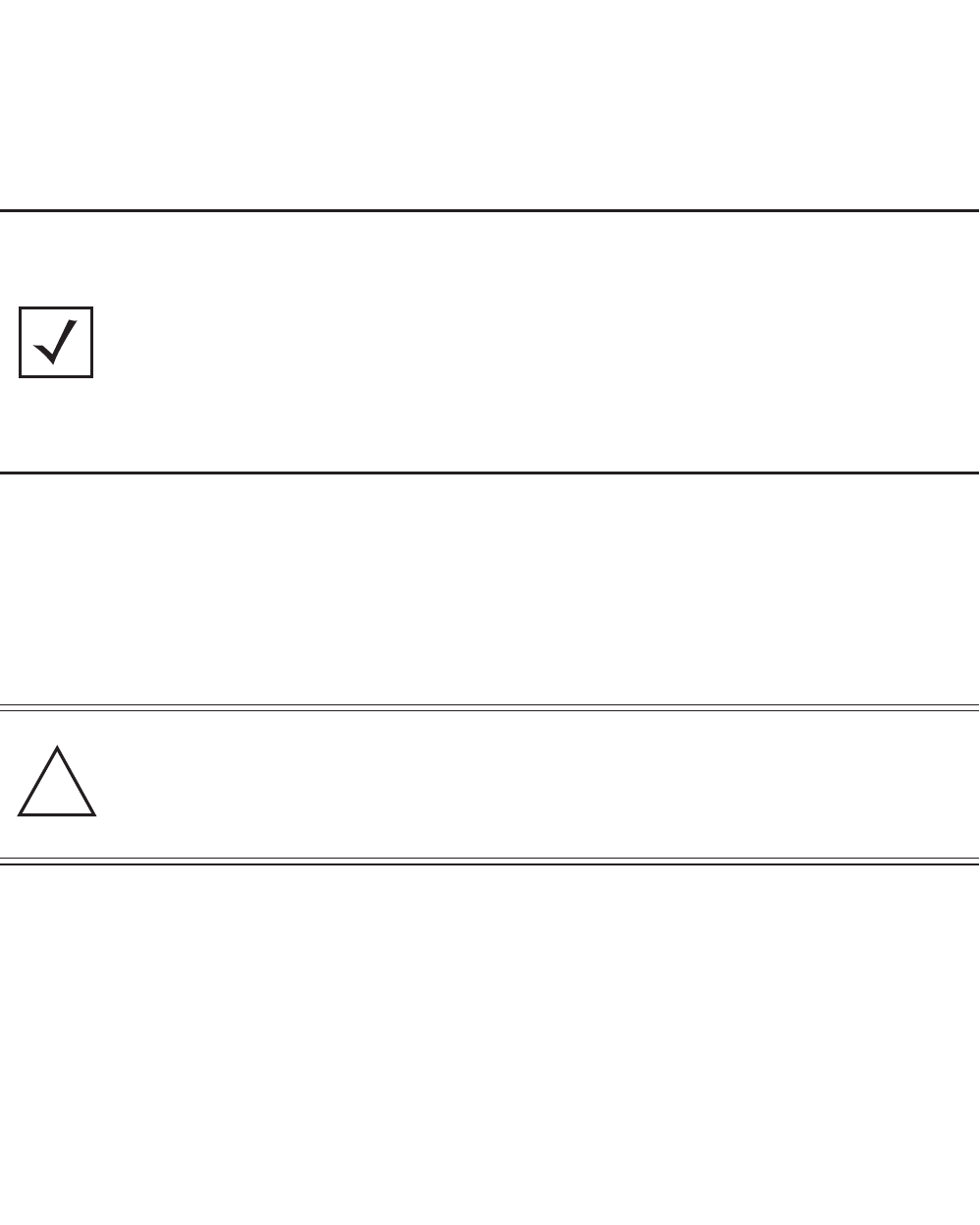
Getting Started 69
3.2.2 Configuring WLAN Security Settings
By default the AP 7181 has a default security policy of No Security. In the following
example a WPA2/CCMP security policy will be configured that can be applied to newly
created WLANs.
To configure a basic security policy for a WLAN:
1. From the access point Quick Setup screen, click the Create button to the right of
the Security Policy item.
2. Ensure the Name of the security policy entered suits the intended configuration or
function of the policy.
NOTE Even an access point with minimal configuration values must be
protected against data theft and corruption. A security policy
should be configured for WLAN1 as part of the basic
configuration outlined in this guide. A security policy can be
configured for the WLAN from within the Quick Setup screen.
Policies can be defined over time and saved to be used as needed
as security requirements change. Motorola recommends you
familiarize yourself with the security options available on the
access point before defining a security policy.
CAUTION Multiple WLANs can share the same security policy. Avoid
naming security policies after specific WLANs to eliminate the
risk of limiting a WLAN to single policy. Motorola
recommends naming the policy after the attributes of the
authentication or encryption type selected.
!
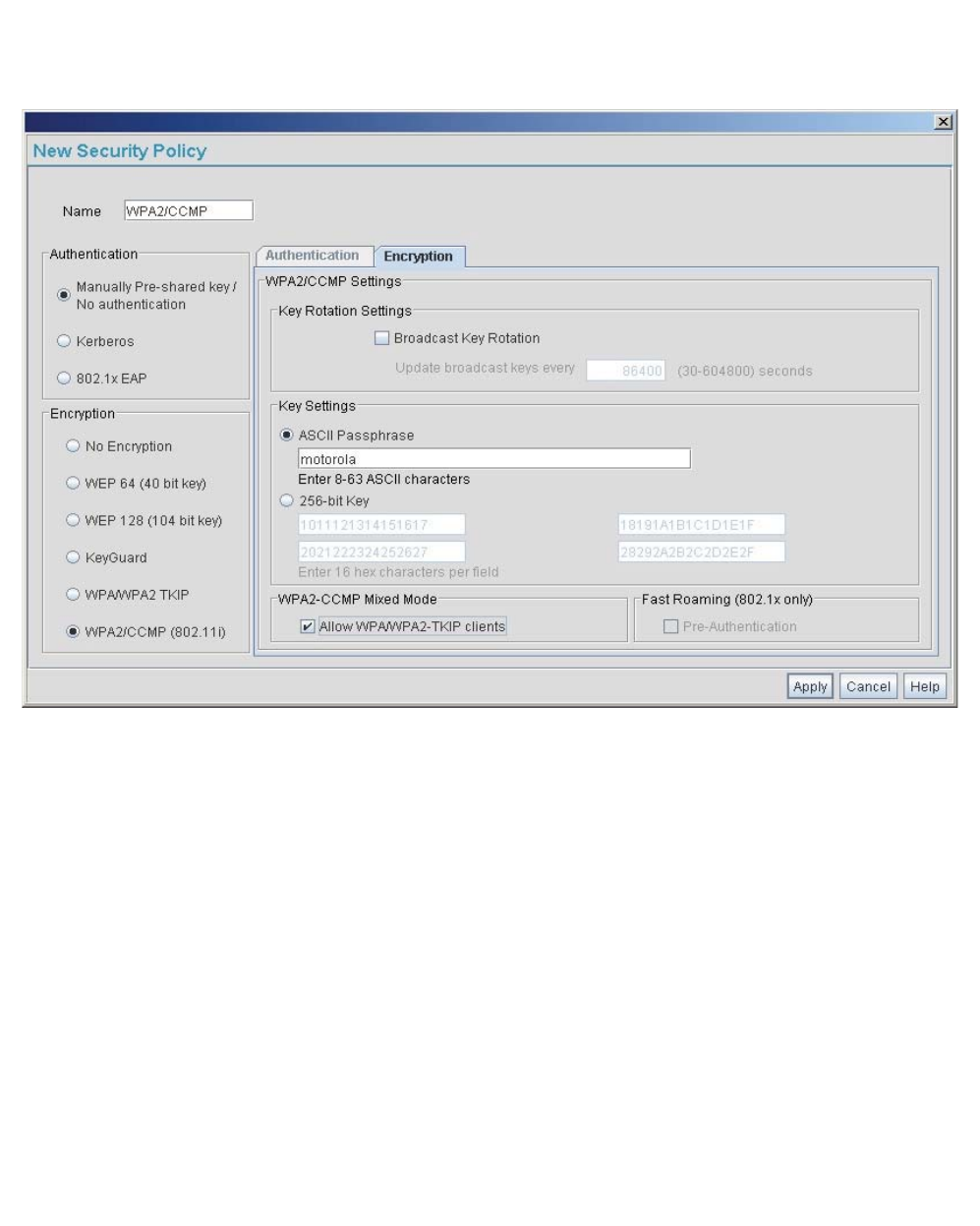
AP 7181 Access Point: Installation Guide
70
3. Select the WPA2/CCMP (802.11i) radio button. The WPA2/CCMP Settings field
is displayed within the New Security Policy screen.
4. Configure the WPA2/CCMP Settings fields as required to define the Pass Key
used to generate the WEP keys.
5. Click the Apply button to save the security policy and return to the access point
Quick Setup screen.
You can now test the access point for MU (801.11 station) interoperability.
Key Settings Click the ASCII Passphrase box and enter a passphrase 8 to
63 characters long.
Mixed Mode Under WPA2-CCMP Mixed Mode select the Allow WPA/
WPA2-TKIP clients checkbox to enable support for TKIP
and AES encryption.
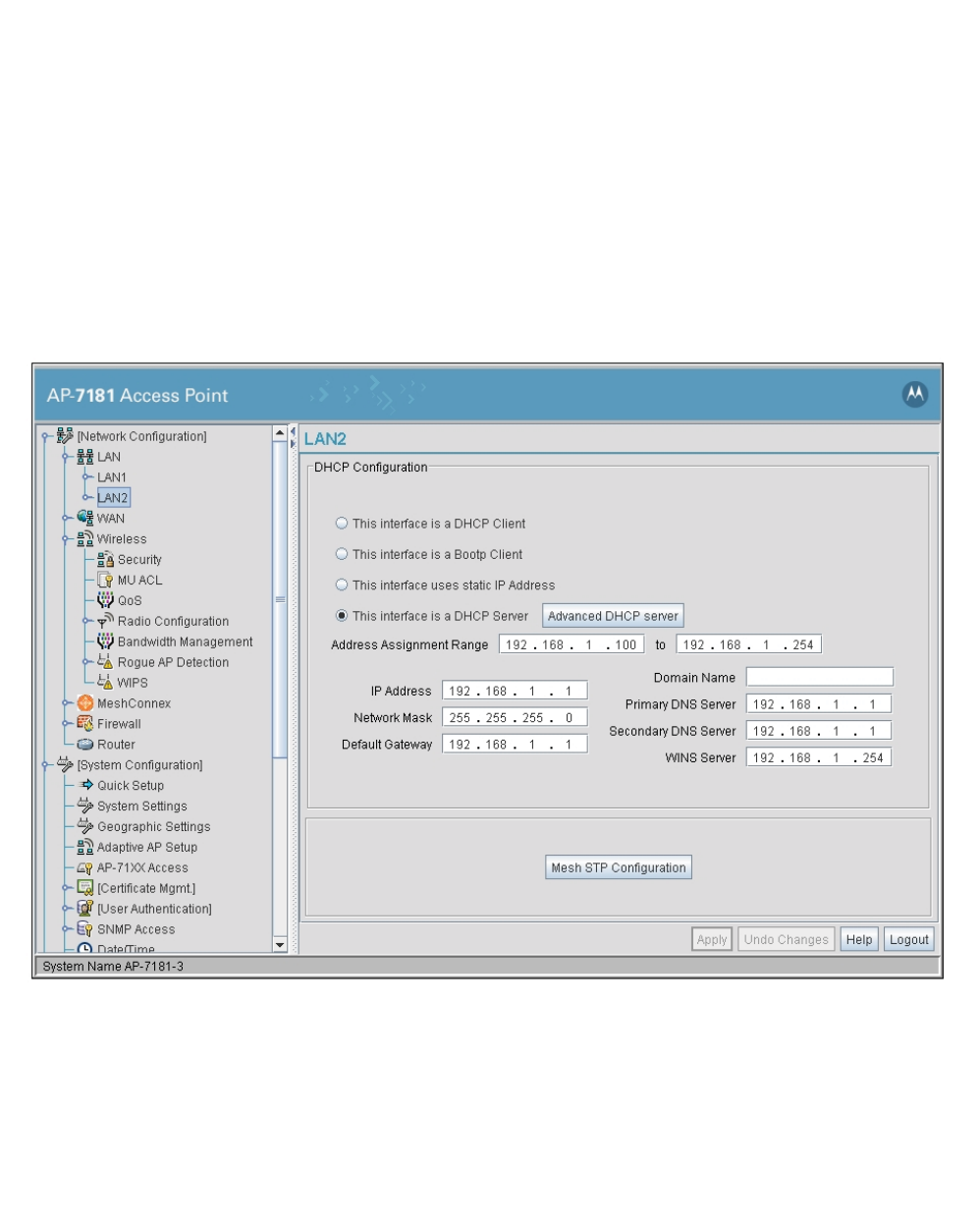
Getting Started 71
3.2.3 Creating a Secure Recovery WLAN
When staging an AP 7181, it is recommended to create a security recovery WLAN to be
used in case the unit becomes unreachable due to errors in configuration or fluctuating
conditions which affect transmission across the wireless network. This is particularly
important if your AP 7181 is addressed via DHCP as the IP address would be lost if a node
became stranded. If the AP 7181 is statically addressed you can connect any configured
WLAN mapped to LAN 1.
1. Click the Enable button next to LAN2 in the LAN branch under Network
Configuration.
After enabling LAN2 you will see an entry for LAN2 under the LAN branch.
Select LAN2. Notice that LAN2 is configured with an IP address of 192.168.1.1
255.255.255.0 by default and is also a DHCP server.
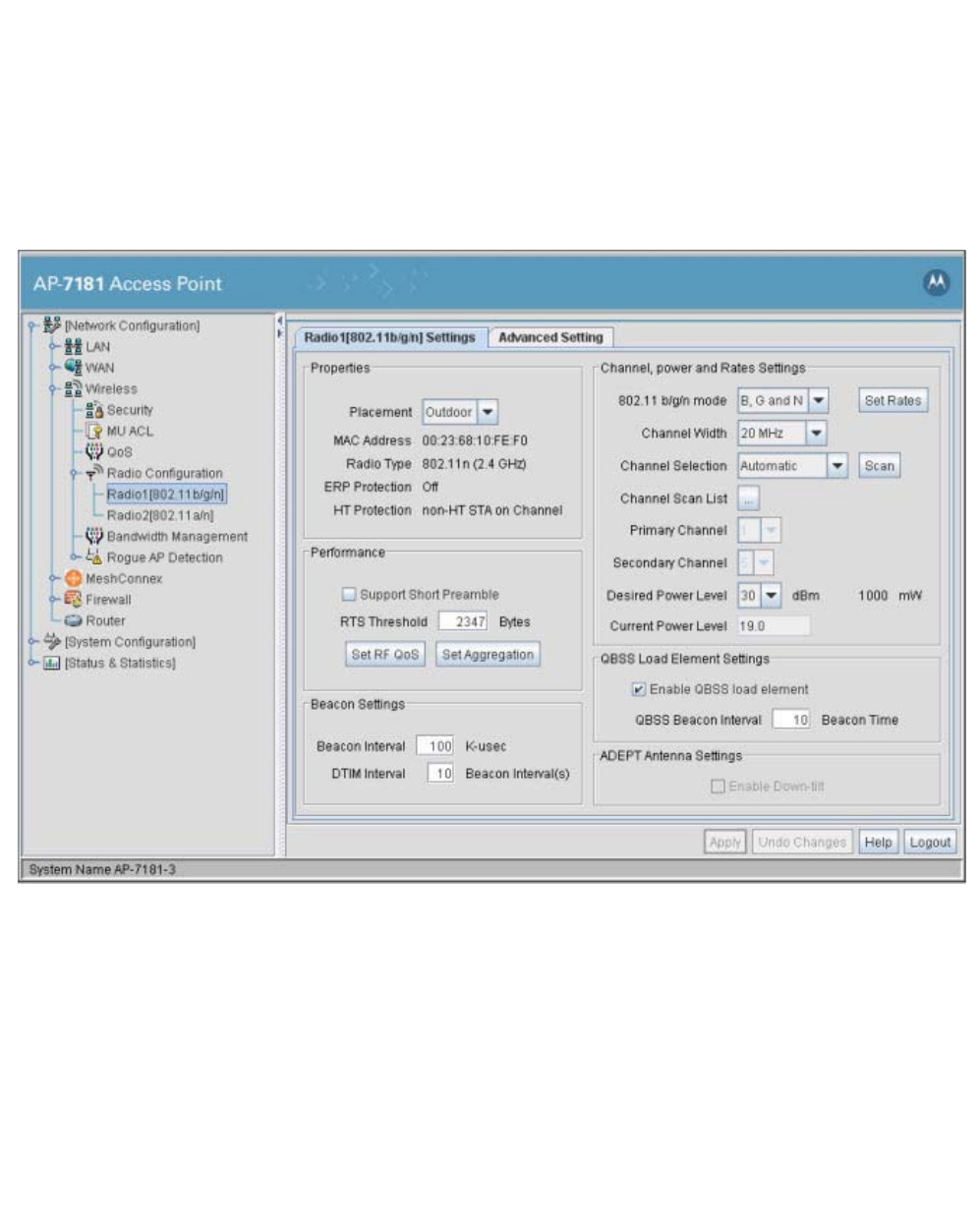
AP 7181 Access Point: Installation Guide
72
2. Determine what ESSID (or network name) to use. It is recommended that a unique
ESSID be used for each AP 7181. Since the recovery WLAN is going to be on the
2.4 GHz radio, we chose to use the MAC address of the 2.4 GHz radio. This can be
found by selecting Radio1 [802.11b/g/n] located under Network Configuration -
Wireless - Radio Configuration. The radio MAC address is located in the
properties window. Record this MAC address.
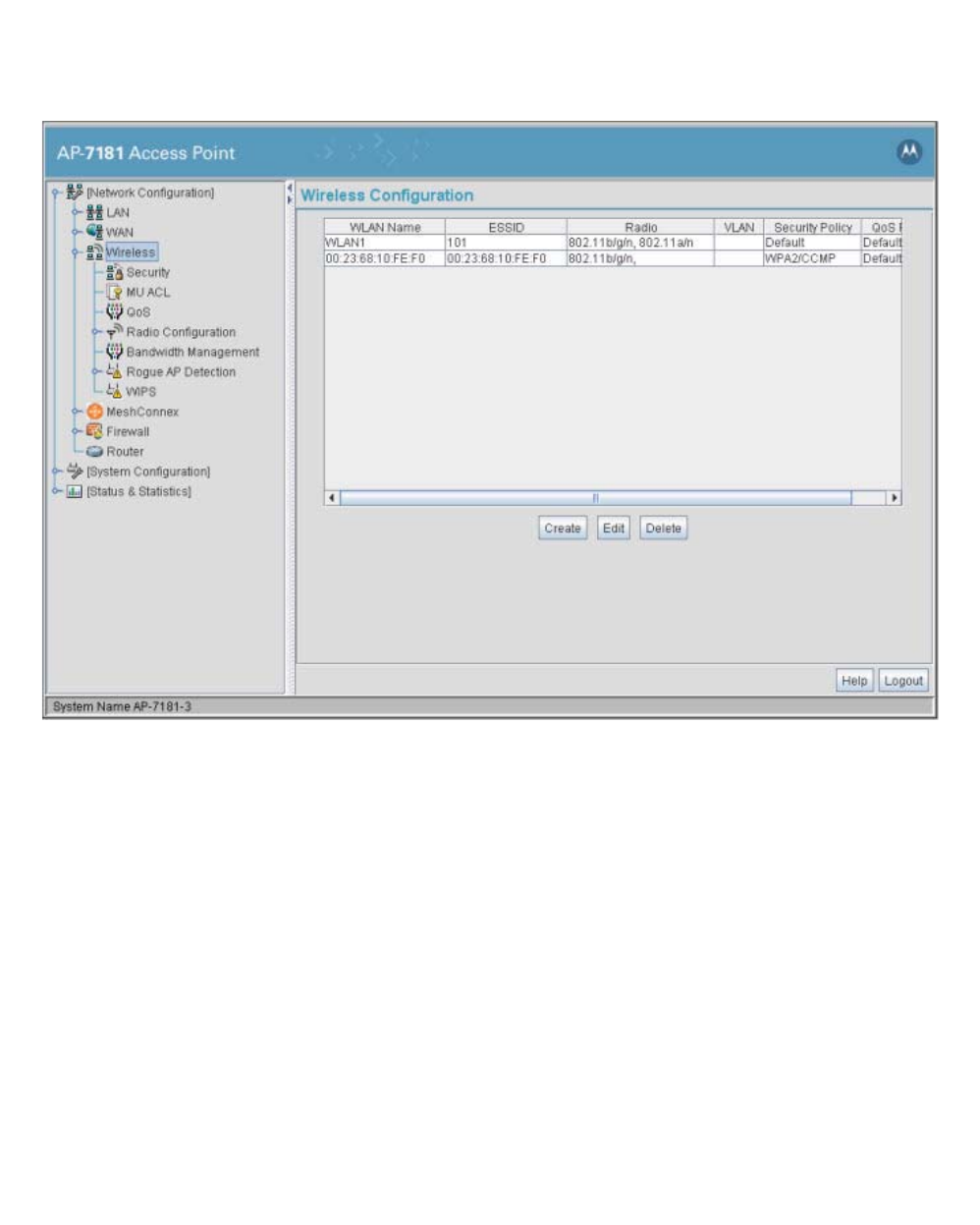
Getting Started 73
3. Create a non-broadcasting secure WLAN. Select Network Configuration ->
Wireless . Click Create.
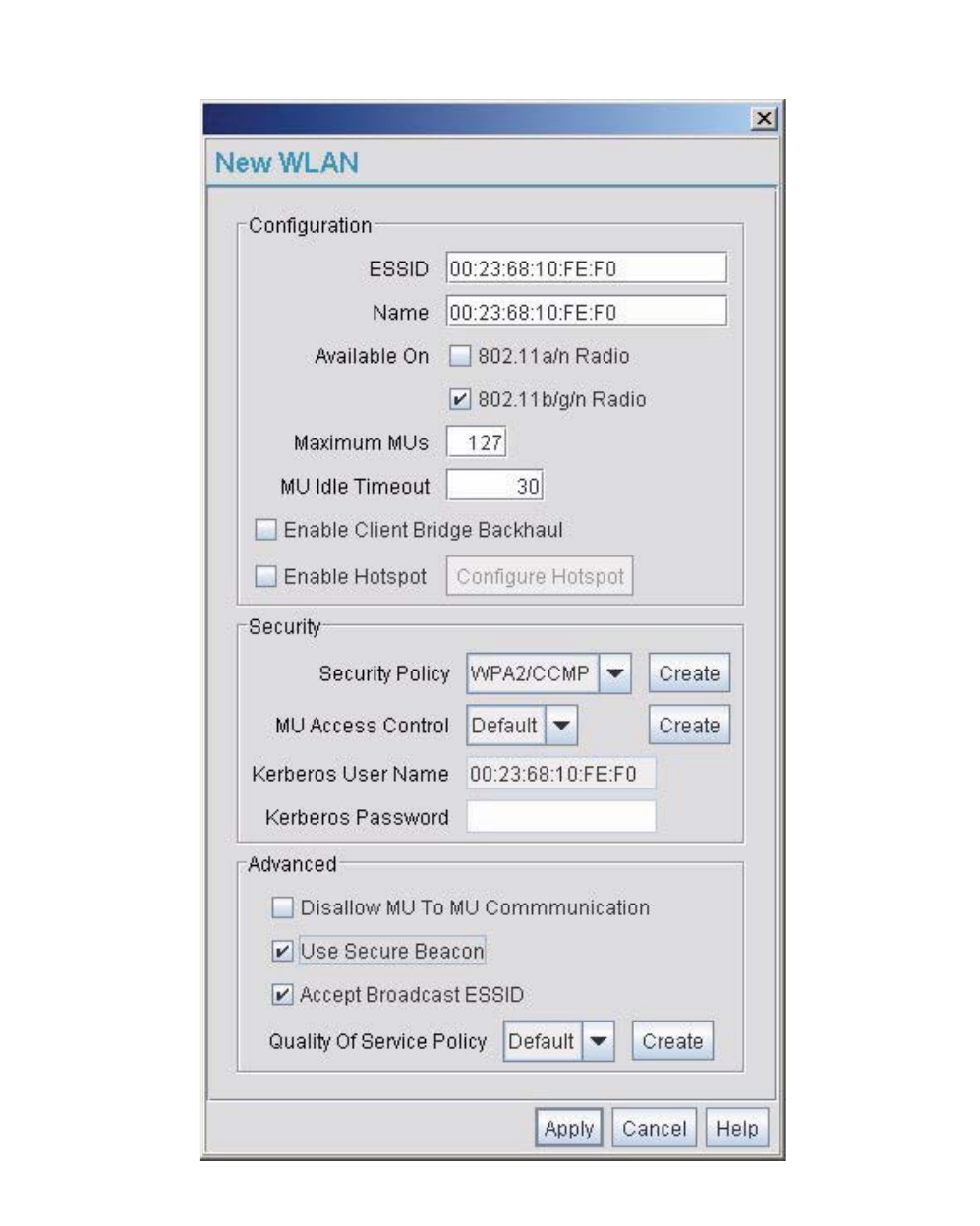
AP 7181 Access Point: Installation Guide
74
4. Enter an ESSID. use the MAC address recorded in the previous step.Under
Available On select the 802.11 b/g/n checkbox.
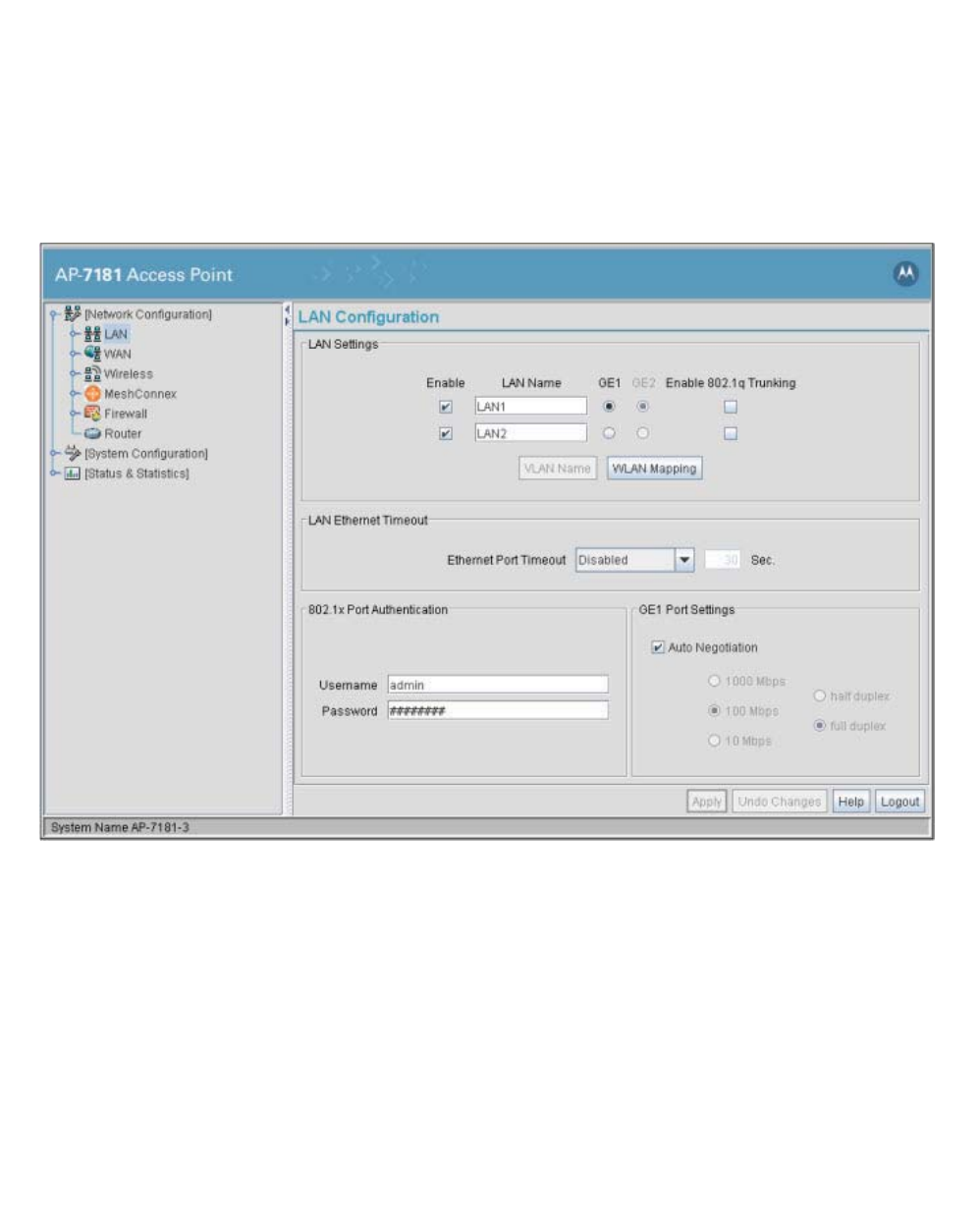
Getting Started 75
5. Select the Security Policy you previously created for WPA2/CCMP. Sele the Use
Secure Beacon checkbox to suppress the broadcasting of this network.
6. Click Apply.
7. To map the secure WLAN to LAN2, select Network Configuration -> LAN.
Click WLAN Mapping.
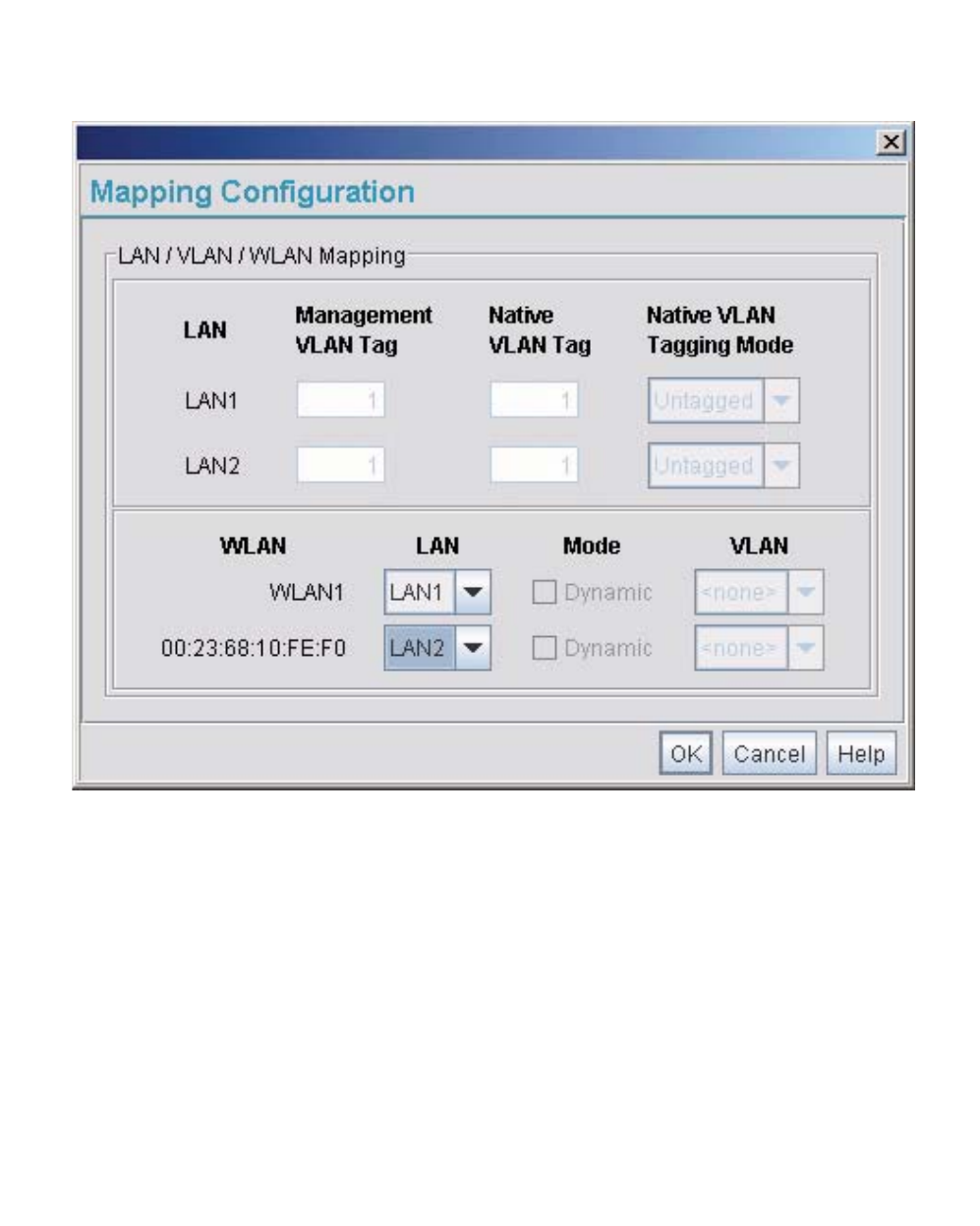
AP 7181 Access Point: Installation Guide
76
8. In LAN/VLAN/WLAN Mapping, find the ESSID you created and use the drop-
down box under LAN and select LAN2. Click OK.
9. The LAN Configuration screen will be displayed again. Click Apply.
10. The secure recovery WLAN is now configured. Record the ESSID for future
reference.
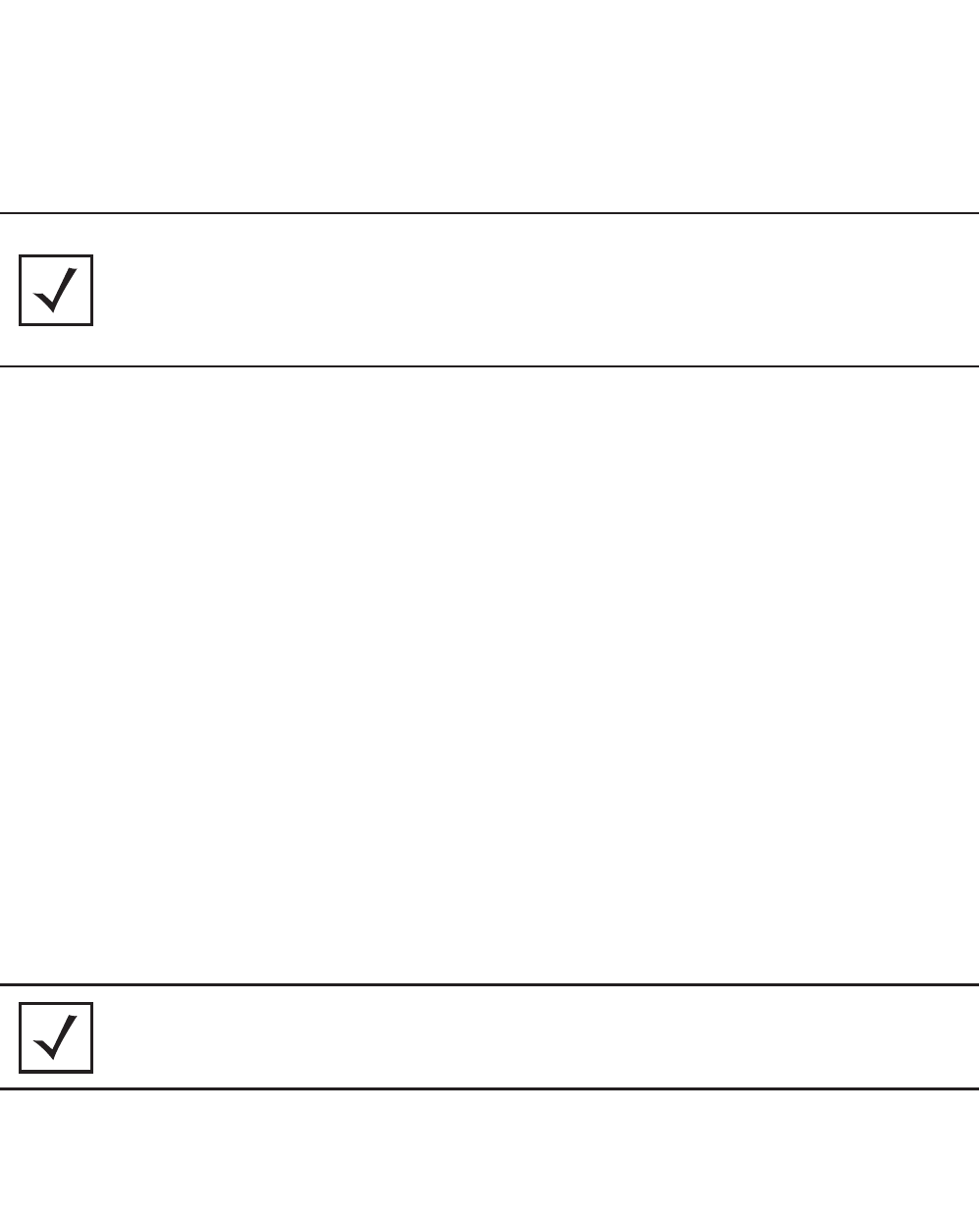
Getting Started 77
3.2.4 Testing Connectivity
Verify the access point's link with an MU by sending ping packets to the associated MU.
Use the Echo Test screen to specify a target MU and configure the parameters of the test.
Connect an MU to the hidden recovery WLAN and configure its IP address for DHCP.
To test connectivity to a specific MU with an access point:
1. Select Status and Statistics -> MU Stats from the menu tree.
2. Click Echo Test on the MU Stats Summary screen.
3. Define the following parameters for the test.
4. Click Ping to begin transmitting packets to the specified MU address.
5. Refer to the Number of Responses value to assess the number of responses from
the MU versus the number of ping packets transmitted by the access point. Use the
NOTE Before testing for connectivity, the target MU needs to be set to
the same ESSID as the access point. Since WPA-PSK security has
been configured on the recovery WLAN for the access point, the
MU will be prompted for a passphrase after associated to the
ESSID.
Station Address The station address is the IP address of the target MU. Refer
to the MU Stats Summary screen for associated MU IP
address information.
Number of pings Defines the number of packets to be transmitted to the MU.
The default is 100.
Pack Length Specifies the length of each packet transmitted to the MU
during the test. The default length is 100 bytes.
NOTE The Ping test can only be used with Symbol MUs.
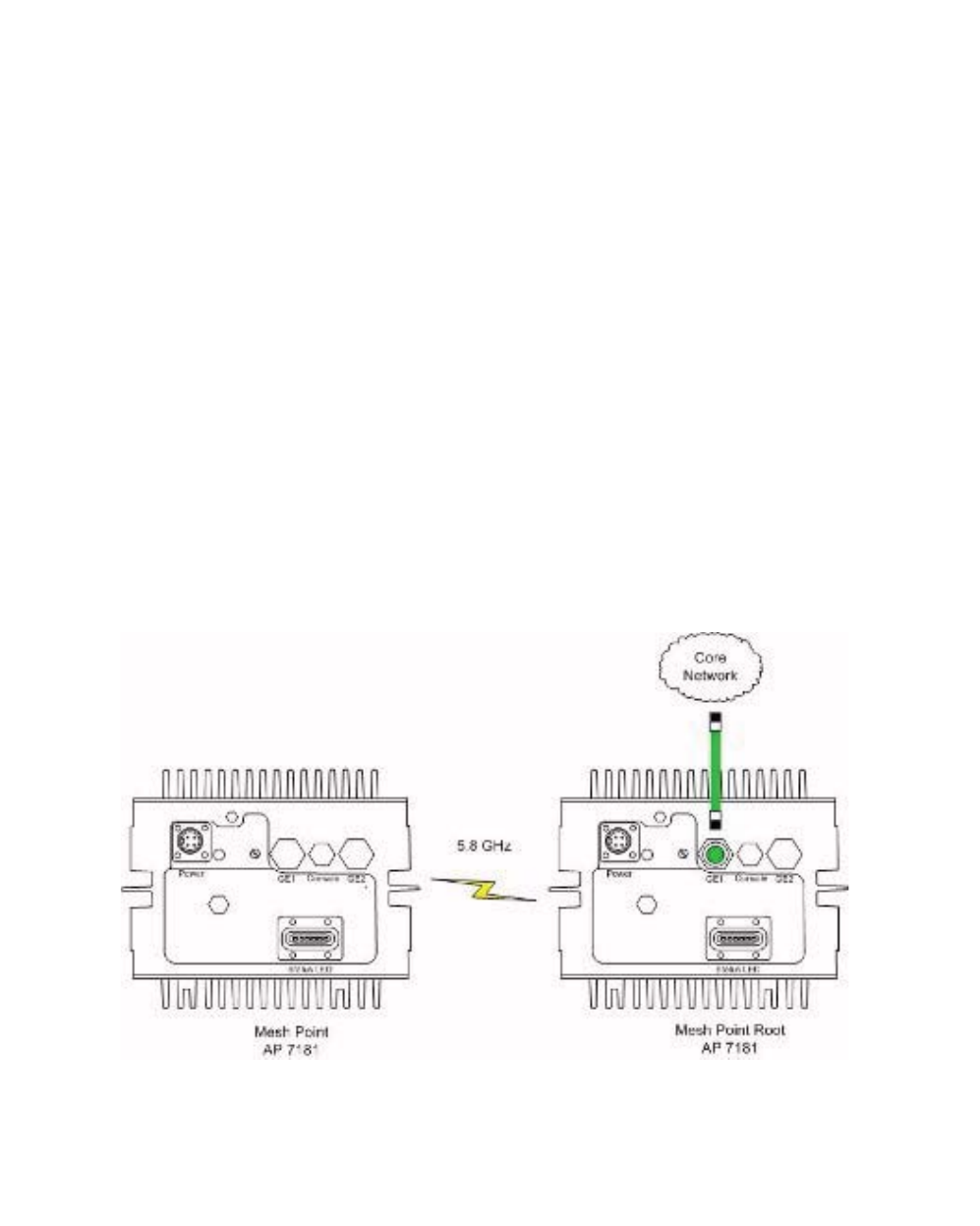
AP 7181 Access Point: Installation Guide
78
ratio of packets sent to the number of packets received to determine the link quality
between the MU and the access point.
6. Click OK to exit the Echo Test screen and return to the MU Stats Summary screen.
3.2.5 Creating a Mesh Point
In order for AP 7181s to mesh using MeshConnex, a Mesh Point must be created on each
access point. Once created, mesh points can be applied to either radio (or both). A Root
Mesh Point is an AP 718 connected to the wired network (direct via Ethernet or via a
wireless backhaul).
When configuring a Mesh Point on an AP 7181, you must define whether or not the AP
7181 is a Root Mesh Point. Non Root Mesh Points are simply referred to as Mesh Points.
These Mesh Points are AP 7181's that are not connected to the wired network or wireless
backhaul, although they may still have a camera or other device attached.
In previous Motorola Mesh products Root Mesh Points were referred to as IAPs and Non
Root Mesh Points were referred to as MWRs. An AP 7181 can be configured as either a
Root Mesh Point or a Non Root Mesh Point.
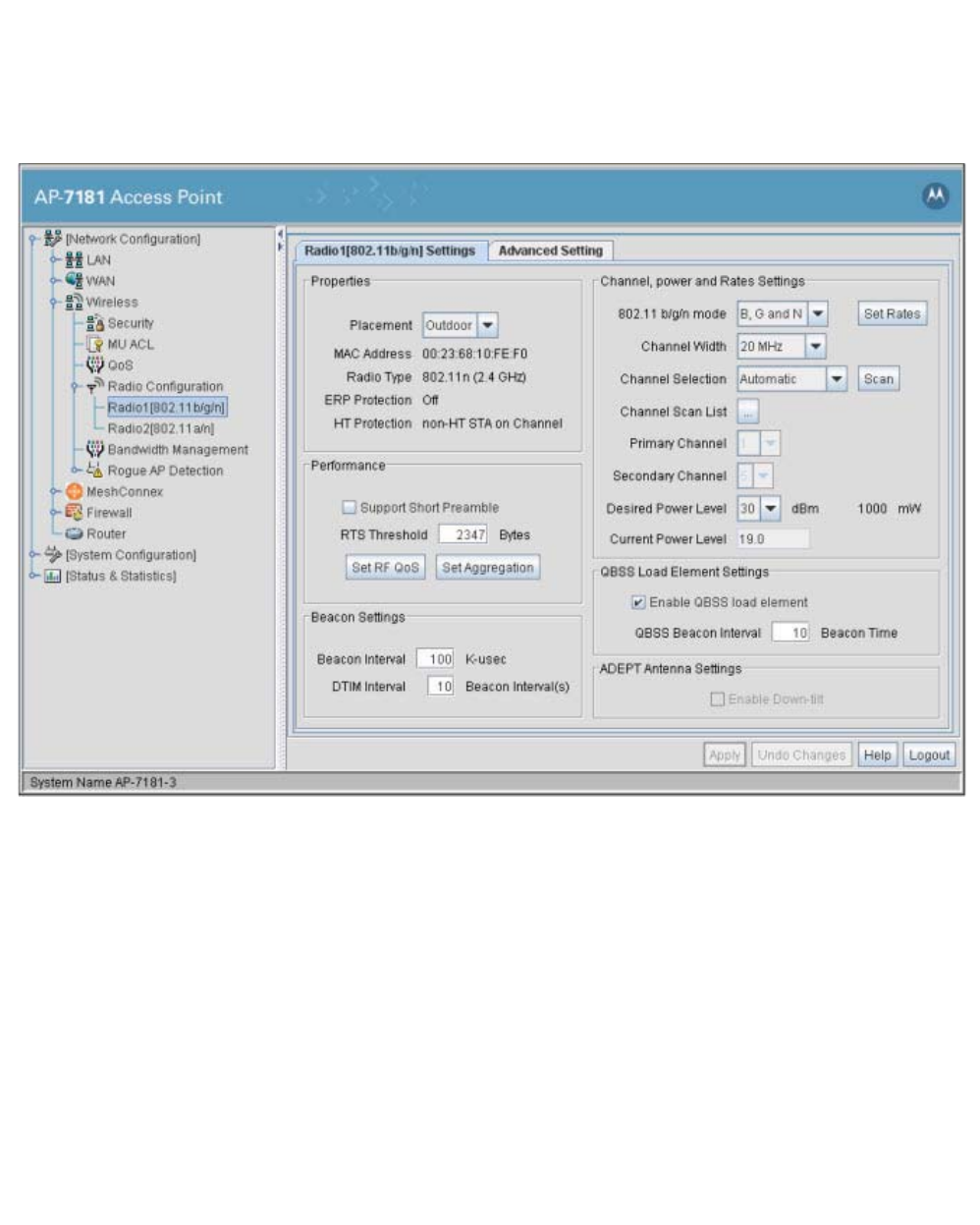
Getting Started 79
To create a Mesh Point:
1. Select Network Configuration -> Wireless -> Radio Configuration -> Radio1
(or Radio2). Confirm that the Channel Selection parameter in the Channel, power
and Rates Settings field is set to Automatic.
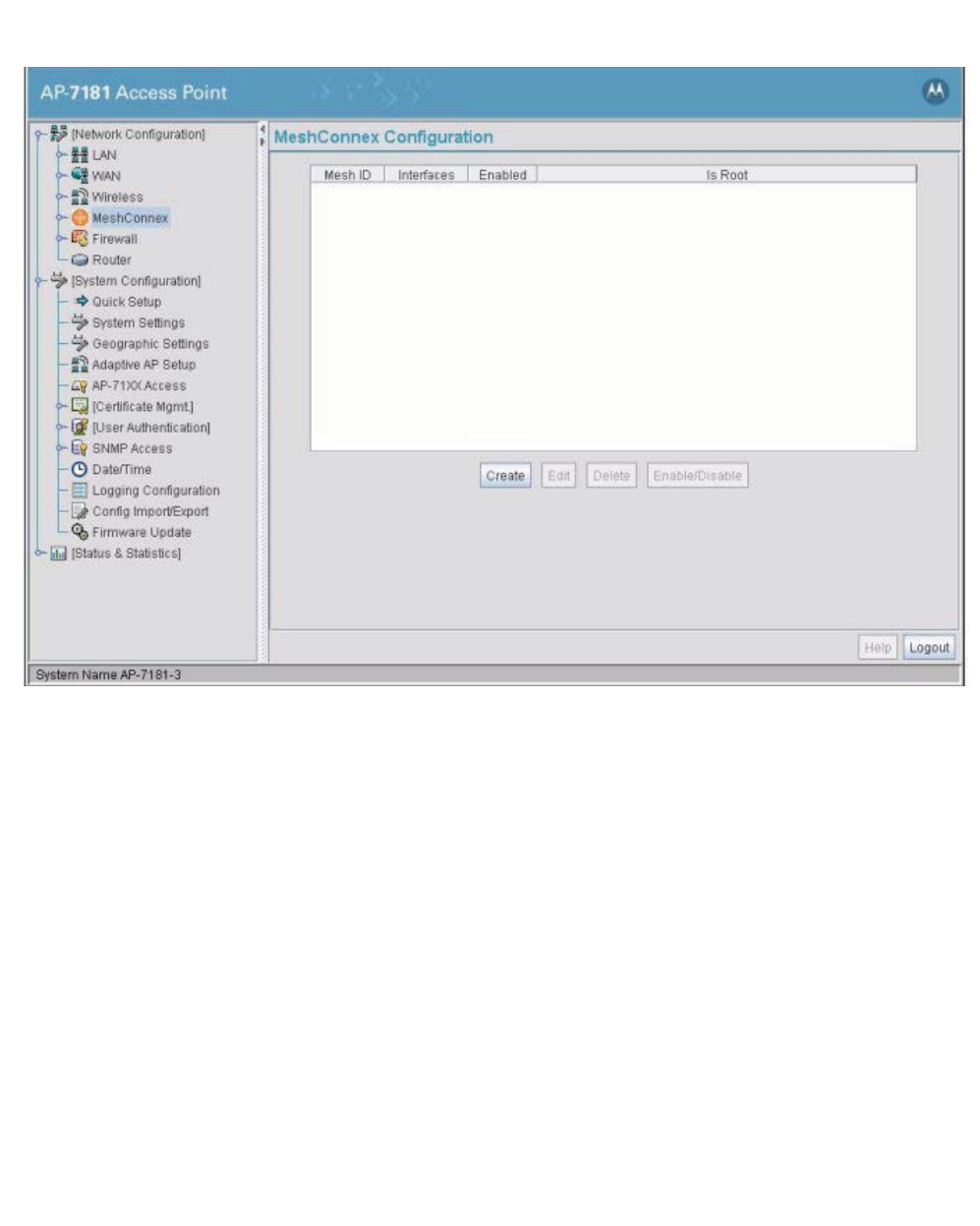
AP 7181 Access Point: Installation Guide
80
2. Select Network Configuration -> MeshConnex and click Create.
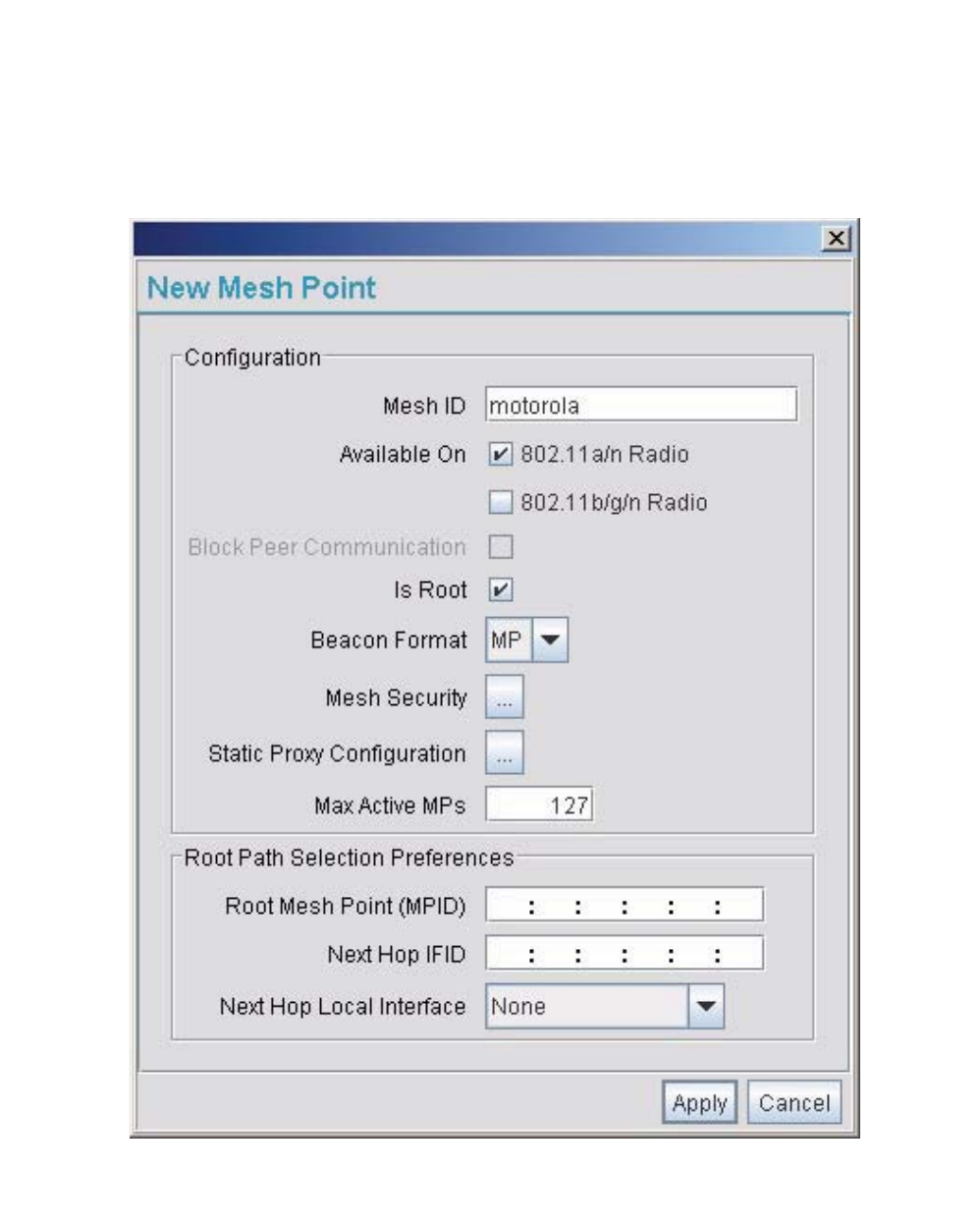
Getting Started 81
7. The New Mesh Point dialog is displayed. Enter a Mesh ID (case-sensitive). This
Mesh ID must be the same on all AP 7181 devices. Next select a radio to mesh on
by selecting the appropriate box under Available On. If this AP 7181 will be
connected to the wired network (Root node / Gateway node) select the Is Root
checkbox.
8. Click Apply to save your settings.
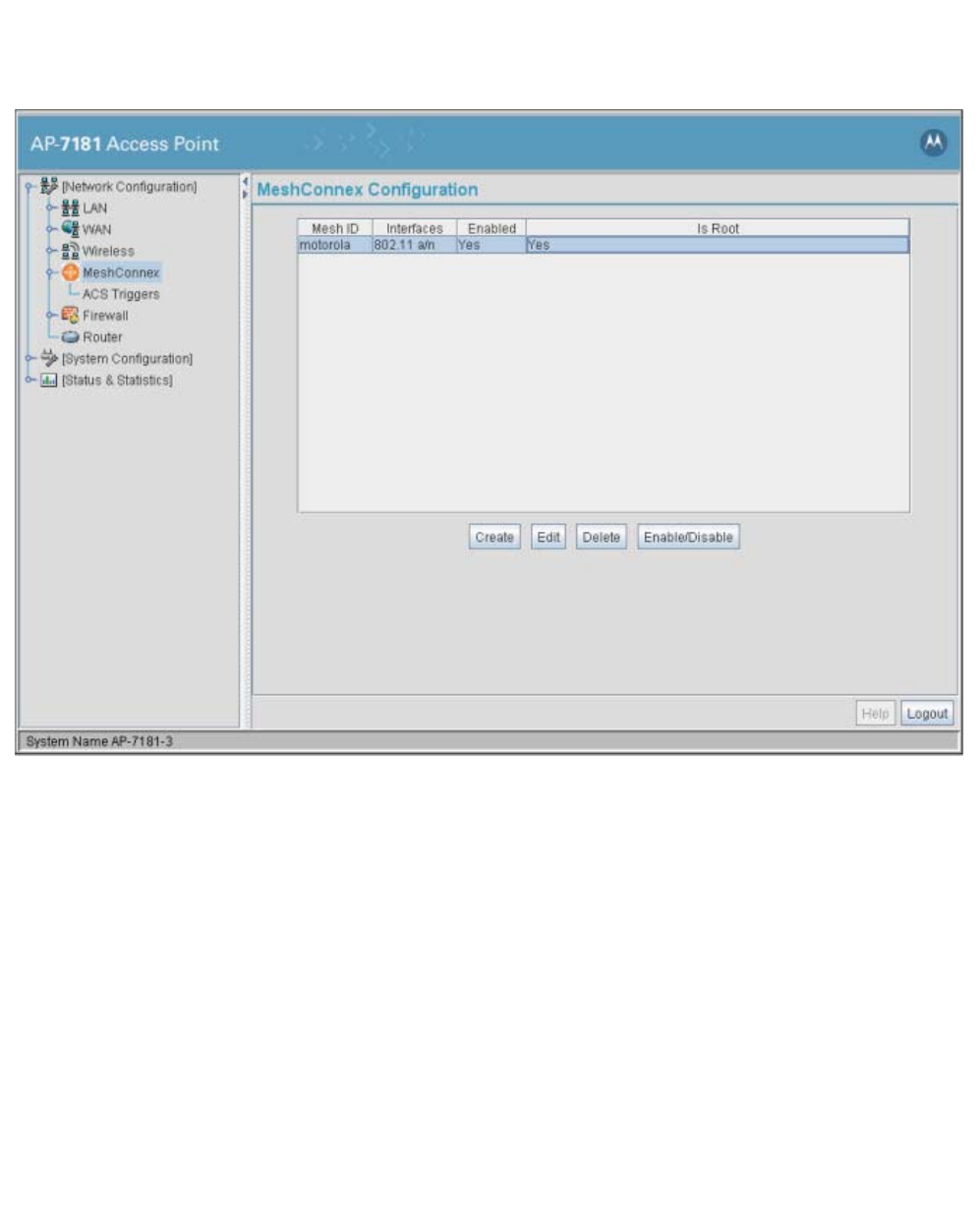
AP 7181 Access Point: Installation Guide
82
9. The Mesh Point you created will be displayed in the MeshConnex Configuration
window. Highlight the Mesh Point and click Enable.
10. Repeat the process for each device you are staging.
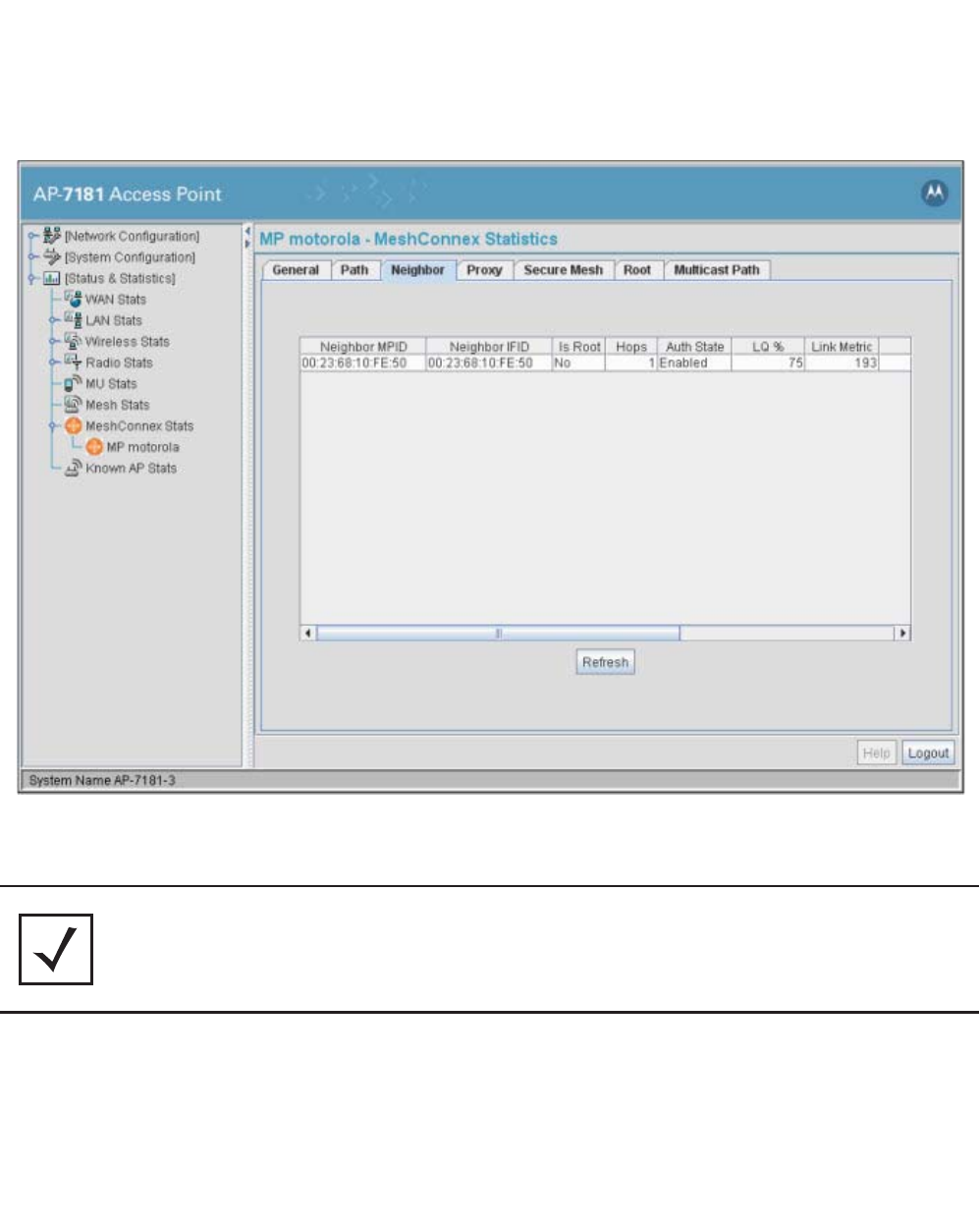
Getting Started 83
11. To verify that a Mesh has been established, select Status & Statistics ->
MeshConnex Stats and click on the name of the desired Mesh Point.
12. Select the Neighbor tab. In this example, only one neighbor is displayed.
NOTE A neighboring device will not be displayed in the table on the
Neighbor tab if only a single device has been configured. Another
Non-Root device must have already been created and the devices
must be interconnected.
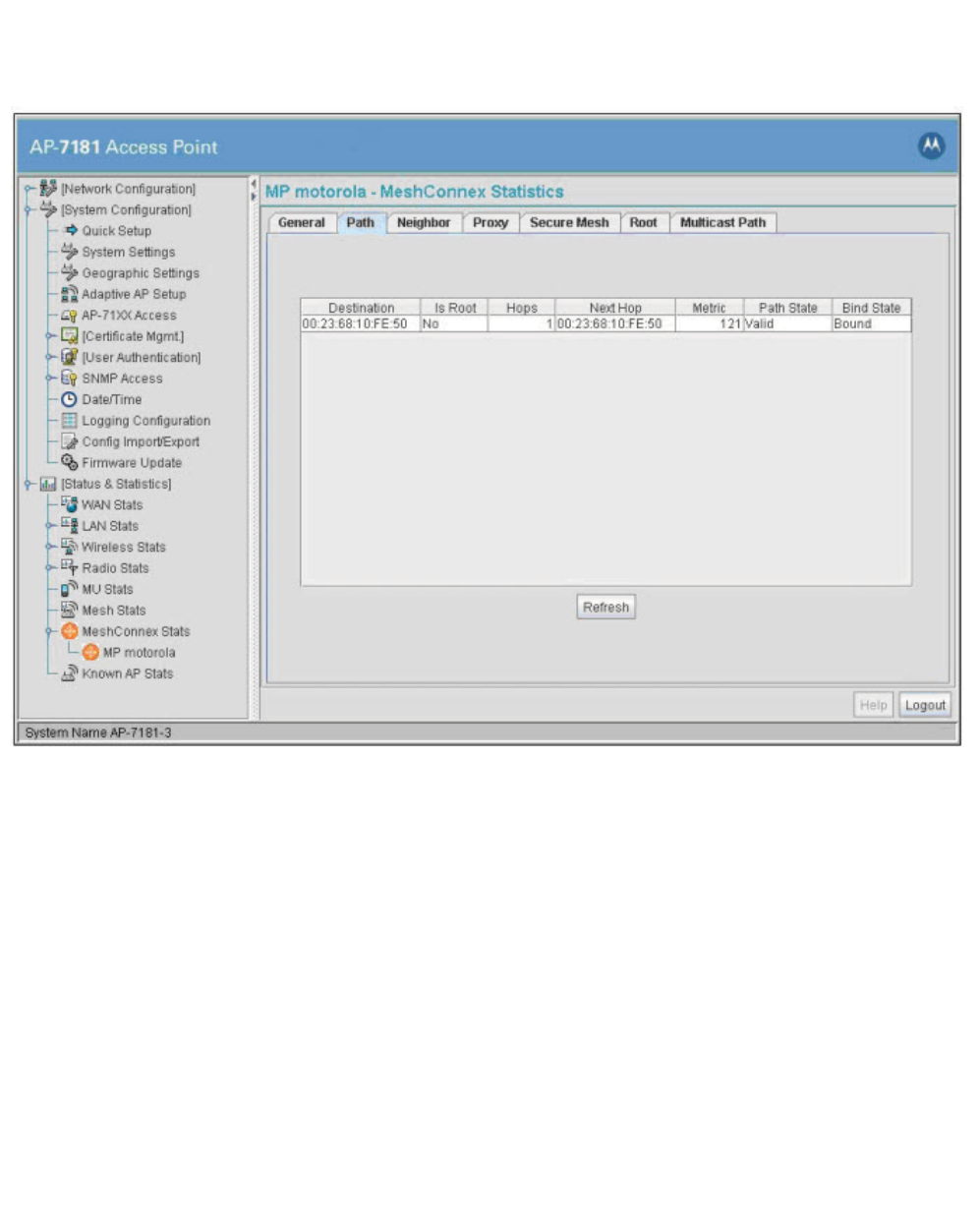
AP 7181 Access Point: Installation Guide
84
13. Select the Path tab to see if a route exists for each neighbor. The Path State should
indicate Valid and the Bind State should indicate Bound.
3.3 Where to Go from Here?
Once basic connectivity has been verified, the access point can be fully configured to meet
the needs of the network and the users it supports. Refer to the AP 7181 Product Reference
Guide for detailed information on AP 7181 devices in wireless networks.

Regulatory Compliance 85
4 Regulatory Compliance
All Motorola devices are designed to be compliant with rules and regulations applicable to the locations where
they are sold and will be labeled as required. Any changes or modifications to Motorola equipment, not
expressly approved by Motorola, could void the user's authority to operate the equipment.
Motorola's devices are professionally installed. The Radio Frequency Output Power will not exceed the
maximum allowable limit for the country of operation.
4.1 Health and Safety Recommendations
The Federal Communications Commission (FCC) with its action in ET Docket 96-8 has adopted a safety
standard for human exposure to radio frequency (RF) electromagnetic energy emitted by FCC certified
equipment. Motorola MOTOMESH products meet the uncontrolled environmental limits found in OET-65 and
ANSI C95.1, 1991. Proper operation of this radio according to the instructions found in this manual and the
AP 7181 Product Reference Guide will result in user exposure that is substantially below the FCC
recommended limits.
4.1.1 Warnings for the Use of Wireless Devices
Please observe all warning notices with regard to the usage of wireless devices.
4.1.2 Potentially Hazardous Atmospheres
You are reminded of the need to observe restrictions on the use of radio devices in fuel depots, chemical plants
etc. and areas where the air contains chemicals or particles (such as grain, dust, or metal powders).
4.1.3 Reducing RF Exposure—Use Properly
Only operate the device in accordance with the instructions supplied.
4.2 Power Supply
Use only the Motorola approved power supply output rated at 84 watts average, 126 watts peak. Use of
alternative power supply will invalidate any approval given to this device and may be dangerous.

AP 7181 Access Point: Installation Guide
86
4.3 FCC Regulatory Information
This device complies with Part 15 of the FCC Rules. Operation is subject to the following two conditions: (1)
this device may not cause harmful interference, and (2) this device must accept any interference received;
including interference that may cause undesired operation.
This equipment has been tested and found to comply with the limits for a Class B digital device, pursuant to
Part 15 of the FCC rules. These limits are designed to provide reasonable protection against harmful
interference in a residential installation. This equipment generates, uses and can radiate radio frequency energy
and, if not installed and used in accordance with the instructions, may cause harmful interference to radio
communications. Operation of this equipment in a residential area is likely to cause harmful interference in
which case the user will be required to correct the interference at his own expense.
• Do not touch or move the antenna(s) while the unit is transmitting or receiving.
• Do not hold any component containing a radio such that the antenna is very close to or touching any
exposed parts of the body, especially the face or eyes, while transmitting.
• Do not operate a portable transmitter near unshielded blasting caps or in an explosive environment
unless it is a type especially qualified for such use.
• Do not operate the radio or attempt to transmit data unless the antenna is connected; otherwise, the
radio may be damaged.
4.3.1 RF Exposure
This equipment complies with the FCC RF radiation exposure limits set forth for an uncontrolled environment.
This equipment should be installed and operated with a minimum distance of 20 centimeters between the
radiator and your body.
This transmitter must not be co-located or operating in conjunction with any other antenna or transmitter.
The antennas used for this transmitter must be installed to provide a separation distance of at least 20cm from
all persons and must not be located or operating in conjunction with any other antenna or transmitter.
To comply with FCC RF exposure compliance requirements, a separation distance of at least 33.9cm must be
maintained between the user and antenna.
4.3.2 Intentional and Unintentional Radiators
Changes or modifications not expressly approved by Motorola could void the user's authority to operate the
equipment.
4.4 Canada Requirements
This Class B digital apparatus complies with Canadian ICES-003.
For AC powered units use only the Motorola approved internal power supply rated at 48V output. Typical
power is 84 watts average and 126 watts peak. Use of alternative power supply will invalidate any approval
given to this device and may be dangerous.

Customer Support 87
5 Customer Support
If you have read this document and made every effort to resolve installation or operation
issues yourself and still require support, please contact your regional Motorola support
representatives or visit the Motorola Mesh Networks web site at:
http://motorola.wirelessbroadbandsupport.com/support/mesh/contact.php

AP 7181 Access Point: Installation Guide
88

MOTOROLA INC
1303 E. ALGONQUIN ROAD
SCHAUMBURG, IL 60196
http://www.motorola.com
Version 1.0.0.A
March 2010